Publication 216, The First 100 Years
Foreword
This is a History of the California State Board of Equalization. It recounts the events that occurred during the Board's first century of service to California, and was written during the Board’s Centennial Year, 1979-1980.
Serving on the Board during this significant period are the following Board Members:
GEORGE R. REILLY, San Francisco, First District
ERNEST J. DRONENBURG, JR., San Diego, Second District
WILLIAM M. BENNETT, Kentfield, Third District
RICHARD NEVINS, Pasadena, Fourth District
KENNETH CORY, Sacramento, State Controller
The Executive Secretary is Douglas D. Bell of Sacramento.
This History is the culmination of extensive research and numerous interviews with former Board employees. It was written by Steven P. Arena, an employee in the Board’s Sacramento Headquarters. The text was edited and the book designed by the Board’s Tax Information Officer, Sidney A. Mandel.
Note: This is a digital reproduction of a publication that is no longer in print.
Acknowledgments
We gratefully acknowledge the assistance of those individuals and organizations who have contributed to the extensive research prerequisite to recording this history.
Following in alphabetical order are the Board employees, past and present, and government agencies whose personnel participated in this project, and the libraries, historical societies, and newspapers whose archives were consulted for information and photographs.
Libraries, Museums, and Historical Societies
Butte County Library, Calaveras County Museum and Archives, California Historical Society (San Francisco), California State Library (California Section), EI Dorado County Historical Society, EI Dorado County Library, Greenville (South Carolina) County Library, Healdsburg Museum, Monterey County Historical Society, Inc., Oakland City Library, Placer County Library, Sonoma County Library, Sutter County Library, Yuba County Library.
Government
Franchise Tax Board, Monterey County Clerk's Office, Secretary of State's Office, State Controller's Office.
Newspapers
Los Angeles Evening Post, Los Angeles Times, Oakland Observer, Sacramento Bee, Sacramento Union, San Diego Union, San Francisco Bulletin, San Francisco Call, San Francisco Chronicle, San Francisco Examiner, San Jose Pioneer, Sutter County Farmer.
Individuals
Gordon P. Adelman, Douglas D. Bell, Leroy E. Benson, John J. Campbell, Harold A. Chamberlain, Mr. and Mrs. Paul Chesebrough, James J. Delaney, Dorothy Denny, Mrs. Arthur Coglan Devlin, Dorothy S. Eilersen, Shirley Filiatrault, Mrs. Phyllis (Wilcoxon) Gavin, Abram F. Goldman, Robert H. Gustafson, Mrs. Patricia Heiskell Hillman, Audrey Janisen, Frank M. Keesling, John Keith, Elizabeth Lague, Jolene Mado, Arthur S. Merrill, Raymond Mrotek, John H. Murray, George A. Nelson, Stanley Pierson, Jeff Reynolds, Edward Steele, William R. Thomson, Justice Roger J. Traynor, Ronald B. Welch, Richard B. West. Williams, Dimond, and Company.
Prologue
The Constitutional Convention of 1849 provided the groundwork for the formation of the Board of Equalization. Article XI, Section 13 of the 1849 Constitution reads:
“Taxation shall be equal and uniform throughout the state. All property in this state shall be taxed in proportion to its value, to be ascertained as directed by law: but assessors and collectors of town, county, and state taxes, shall be elected by the qualified electors of the district, county, or town in which the property taxed for state, county or town purposes is situated.”
The failure of assessors and collectors to uphold this provision of “equal and uniform” taxation led to the creation of the Board of Equalization with an amendment to the State Constitution at the 1879 constitutional convention.
The Board of Equalization, consisting of the State Controller and one elected member from each of the four Equalization Districts, has been a mainstay of the state revenue and taxation programs. Although today’s Board differs little in structure from the 1879 Board, it has affirmed its flexibility and effectiveness by surviving a century of socio-economic change. This history of the Board relates the events and achievements that have made the Board the respected agency it is.
Introduction
When the Mexican War came to an end in 18481 California’s state and local authorities were faced with serious revenue problems. In annexing the region now known as California, the United States Congress had failed to extend any of its revenue laws to the newly acquired territory. This left California Governor Richard B. Mason with no statutory means of collecting revenue.
Prior to the treaty, military officials had been charged with the collection of customs. Realizing the need for an immediate source of revenue, Governor Mason instructed those military officials already collecting customs revenues that they were to enforce the United States Tariff Law of 1846 until civil officers could be appointed to the task. Both Governor Mason and his successor, Governor Bennett Riley, enforced this 1846 tariff act until November 12, 1849 when President Zachary Taylor appointed a man by the name of Collier as Collector of Customs at San Francisco on November 12, 1849.2
On June 3, 1849 Governor Riley issued a proclamation recommending the forming of a state constitution or a plan for territorial government. Delegates were elected on August 1, 1849 and a convention was held in Monterey beginning September 1, 1849. Here began the discussion as to what form of taxation might best suit the new government.
The establishment of a system of taxation was not an easy assignment. One basic problem was that all but seven of the forty-eight delegates were recent immigrants from all corners of the United States. As such, their views differed widely, for they were better acquainted with the needs and conditions of their native states than those of California. Most of the conflict revolved around one issue—whether the Legislature’s powers in tax matters should be absolute or limited. With this problem in mind, Mr. William Gwin, a representative from the San Francisco District, drafted a resolution which was subsequently amended to read:
“Resolved, that a committee of three be appointed by the President to report a plan to defray the expenses of the State Government, to be adopted by this Convention.” 3
The appointed committee consisted of Mr. Gwin, Joseph Hobson, and Abel Stearns. Their report, submitted on September 25, 1849, essentially called upon the United States Government for appropriations in the form of outright grants or a return of the aforementioned customs revenues collected after the Mexican War. The committee also suggested that any system of taxation be taken up by the first Legislature. The final paragraph of Mr. Gwin’s report explains the latter suggestion:
“In the opinion of the Committee, any system of taxation at present might fail in the object of revenue, and they believe that, when the necessity or policy for adopting this measure may arise, the Legislature will be the proper authority to provide for the case.” 4
Mr. Stearns goes beyond this in reporting:
“The undersigned, a member of the Committee, finds great difficulty in organizing the ‘ways and means’ best adapted to the present peculiar and unprecedented circumstances in which the State is placed, but would recommend as the most eligible plan, that the Legislature be empowered to raise the proper revenue for defraying the State expenses by levying an Income Land Property Tax, which shall not exceed one quarter percent; as likewise a Poll Tax which shall be left to the Legislature to decide upon, both in relation to the amount as well as the manner of carrying out the same.” 5
Needless to say, not all the delegates favored such a recommendation. Both the native population and the southern delegates feared the political power of the mining counties. They would not be satisfied until some constitutional guarantee of equitable tax laws were given to them. In an effort to act upon Mr. Stearns’ proposal while satisfying these southern delegates, the convention, acting as a Committee of the Whole, adopted the following:
“All lands liable to taxation in this State shall be taxed in proportion to their value; and this value shall be appraised by officers elected by the qualified electors of the district, county, or town in which the lands to be taxed are situated.” 6
Mr. Gwin, in turn, offered the following substitute (which he had admittedly borrowed in part from the constitution of Texas):
“Taxation shall be equal and uniform throughout the State. All property in this State shall be taxed in proportion to its value; to be ascertained as directed by law.” 7
This substitute clause disturbed some of the larger landowners because they feared that this would permit assessment by people outside of their particular locales. Mr. J. M. Jones of the San Joaquin district, therefore, offered this amendment to William Gwin’s amendment:
“But assessors and collectors of town, county, and State taxes shall be elected by qualified electors of the district, county, or town in which the property taxes for the State, county, or town purposes is situated.” 8
Thus the delegates arrived at Article XI, Section 13, of the Constitution of 1849:
“Taxation shall be equal and uniform throughout the state. All property in this state shall be taxed in proportion to its value, to be ascertained as directed by law; but assessors and collectors of town, county, and state taxes shall be elected by the qualified electors of the district, county, or town in which the property taxed for state, county, or town purposes is situated.” 9
It was this constitutional provision which gave the Legislature its powers regarding property taxation and which would later give birth to the Board of Equalization.
The customs duties collected in California between August 7, 1848 and September 9, 1850, the day California became a state, amounted to $2,968,748.40.10 During California’s Constitutional Convention of 1849, many delegates voiced the opinion that this money belonged not to the United States government but to California. However, in January 1850, the Civil Treasurer received orders from Washington to turn over this revenue plus that collected during the Mexican War to the United States War Department until Congress made a final decision on the matter. California, which would never succeed in recovering this money, was left without funds.
The new Legislature, recognizing its financial needs, began an immediate search for alternate sources of revenue. The first effort to obtain revenue came with the Legislature’s passage of the Temporary State Loan Act on February 1, 1850.11 This act, which called for the issuance of up to $300,000 in state bonds, provided temporary funds but could not serve as a permanent source of revenue. If the Legislature were to give the new state financial stability, it would have to adopt long-range revenue programs, which would inevitably require taxation.
1 The Treaty of Guadalupe Hidalgo was signed on February 2, 1848 and was ratified by Congress on May 30, 1848. News of the treaty did not reach Governor Mason until August 7, 1848.
2 Fankhauser, William C. A Financial History of California (University of California Publications in Economics, vol. 3 (1913) ) p. 13 hereinafter referred to as “Fankhauser”)
3 Browne, J. Ross, Report of the Debates in the Convention of California, on the Formation of the State Constitution, in September and October, 1849, p. 43.
4 Browne J., Ross, op. cit., p. 202.
5 Loc, cit.
6 Ibid, p. 364.
7 Loc. cit.
8 Browne, Op cit.
9 Ibid.
10 Appendix to the Congress Globe, 30th Congress 1st Session, vol. 29, pp. 71-74.
11 Statutes of California, 1850, Chapter 10, p. 53.
Creation of the First State Board of Equalization
The year 1850 witnessed a host of revenue laws including a poll tax, a military commutation tax, a foreign miner’s license tax, a few minor license taxes, and what was to become the state’s largest source of revenue—a general property tax. The general property tax law, enacted March 30, 1850, provided that “all property, real and personal, within this State, shall be liable to taxation. . .” 12
Although the property tax and the poll tax were the two largest sources of revenue, neither seems to have been a satisfactory source of “equitable” taxation. As early as 1851, Governor Peter H. Burnett reported to the Legislature in his annual message that “six grazing counties with a population of 6,367 paid $41,705.26 in taxes, while twelve mining counties, with a population of 119,917, paid only $21,253.66. The poll tax assessed in the mining counties amounted to $51,495 of which $47,915 was delinquent. In the grazing counties the amount of poll tax assessed was $7,205, the amount delinquent $3,291. During the past year, the agricultural counties, with a population of 79,778, paid $246,247.71 in state taxes, while the mining counties, with a population of 119,917 paid only $21,253.66.” 13
One decade later, a similar report showed little change in this situation.
“In 1861 the commercial and agricultural counties, with a voting population at the last election of 58,933, paid $444,913.95 for the support of the state government, while the mining counties, with a voting population of 60,797, paid only $168,425.26.” 14
The enforcement of a poll tax remained a problem throughout its history and the revenues obtained therefrom were disappointingly small in comparison to the property tax revenues. While the property tax did provide for great revenues and while this tax was more enforceable, it too, had its problems. It had become increasingly apparent that local assessors, “. . . in their endeavor to curry favor with their constituents and to roll a portion of the state tax onto some other counties,” were ignoring the constitutional provision that taxation be “equal and uniform.” 15
Controller George Oulton demonstrated this in his report for the 17th and 18th fiscal years when he revealed that real estate in some counties was assessed at one-third or one-fourth of its value.16 Accordingly, the Controller recommended the creation of a state board of equalization with advisory and supervisorial power. He further advised that an ex-officio board consisting of the Governor, the State Controller, or State Treasurer, and the Attorney General be created,17 to avoid incurring the expense of adding officials to the state payroll.
Even though the succeeding Controller argued against such a board, Governor Henry H. Haight urged the creation of a board in his message of 1869. In compliance with the Governor’s request, the Legislature passed a bill on April 4, 1870, which created a State Board of Equalization, which was to consist of the State Controller, and two members to be appointed by the Governor for four-year terms.18 Its duties were defined as follows:
- To investigate the mode and manner in which assessors and tax collectors perform their duties.
- To discover whether the assessments made by the county assessors are equal and uniform, according to the location, soil, improvements, production and manufacture.
- To equalize assessments by adding to or deducting from the valuation of taxable property in any county or counties, such a percent as would produce relatively equal and uniform valuations between the several counties of the state.
- To devise rules by which the county boards of supervisors were to be governed when sitting as county boards of equalization.19
Though the members of this Board faithfully undertook their assignment, they were unsuccessful in correcting the inequities in assessment. Counties were often unwilling to cooperate, and the Board had no real power to enforce its decisions, primarily because the laws were not adequately defined.
In his annual message dated January 7, 1863, Governor Leland Stanford had warned of the “wild confusion” into which the statutes of California had fallen. He further cautioned that “. . . no person, not versed in law, can with any certainty of correctness, turn to the pages of our statute books to ascertain what the law is . . .” The first report of the State Board of Equalization shows a table which exhibits what is termed the “. . . startling disparity between the intention of the law, as to the value set upon property by assessors, and the actual values fixed by them . . .” The report concluded that this was the result of no fixed interpretation of the term “full cash value.” 20
It was not until the passage of the political Code of 1872 that such controversial terms as “full cash value,” “real estate,” “personal property,” and “improvements” were more clearly defined.21 The Political Code, while embodying many of the existing laws, superseded all prior revenue laws. It not only provided a better definition of the law for the Board but also extended and augmented its powers. Under the provisions of the Political Code, the Board was to “. . . enforce the revenue law in a uniform and equal manner; to prescribe rules and regulations governing supervisors when equalizing assessments, and assessors when assessing property; to prepare and enforce the use of forms used for the assessment of property; to equalize the valuation of property of the several counties of the state; to fix the state rate of taxation between the fourth Monday in August and the first Monday in October; to visit as a board or as individual members the different counties of the state to ascertain how property was being assessed; to issue subpoenas for the attendance of witnesses or the production of public records in the custody of the county officers, and to report annually to the Governor the assessed acreage in each county, the valuation per acre, the valuation of town and city lots, the value of each kind of personal property, and any other information relative to the assessment of property and the collection of revenue.” 22
The original 1870 Board was authorized by the political Code to raise and lower assessments in order to achieve “equal and uniform” valuation. However, the Board’s effort to enforce this law was soon challenged. In the case of The Savings and Loan Society v. Austin, 1873 (46 Cal. 415), the plaintiff questioned the constitutionality of the State Board of Equalization on the grounds that (1) its members were not elected by the people and (2) its power to fix the state rate of taxation and to allow for the cost of collecting the state tax was a function of the Legislature. In this case the court affirmed the Board’s constitutionality. However, in January of 1874, the Supreme Court reversed this decision in Houghton et. al. v. Austin (47 Cal. 646). The Court held that Section 3696 of the Political Code, which allowed the Board to raise or lower assessments, was in violation of the Constitution inasmuch as the Constitution specifically required that assessors be elected by the electors of the counties or districts where the property to be assessed was located.
Having lost its power to increase or reduce assessments, the Board could no longer fulfill its original purpose of maintaining “equal and uniform” assessments. Governor William Irwin, recognizing the futility of continuing the Board under such circumstances, recommended that the Legislature abolish this body and substitute an ex-officio board consisting of the Governor, the Attorney General, and the Controller of the State. In response, the Legislature by an act of April 1, 1876, amended Section 352 of the Political Code to comply with the Governor’s recommendation.23 The newly composed Board, by a simultaneous amendment of Section 3692 of the Code, was deprived of its authority to equalize or investigate property assessments. For all practical purposes, the Board had become merely a “statistical bureau and an advisory body,” 24 Its authority would not be restored until the ratification of the California Constitution of 1879.
12 Statutes of California. 1850, Chapter 52, p. 135
13 Fankhauser, op. cit. pp. 137 & 138
14 Figures from San Francisco Daily Evening Bulletin, January 14, 1862
15 Fankhauser, op. cit., p. 186
16 Fankhauser, op. cit., p. 187
17Fankhauser, op. cit, p. 187
18 Statutes of California, 1869-1870, p. 714. (It should be noted here that the Political Codes of 1872 (Sec. 352, p. 68) provided that the Controller would be an ex-officio member, and the other members would be appointed by the Governor.)
19 lbid.
20 Report of State Board of Equalization for years 1870 and 1871
21 The Political Code was enacted in March of 1872
22 Fankhauser, op. cit., pp. 238-239 (as condensed from the Political Codes of 1872, Secs. 3692-3703)
23 Code Amendments 1875-76. Ch. 577, p. 11
24 Fankhauser. op. cit., p. 241
The Board of Equalization Becomes a Constitutional Agency
In 1876 the Legislature passed a bill calling for a Constitutional Convention. This proposal was ratified by the people, and delegates to this Convention were elected on June 19, 1878. Most of the delegates were determined to eliminate the evils of the prior Constitution; however, their views on how to achieve this objective varied widely. After much debate, particularly in areas of revenue and taxation, the delegates adopted a Constitution on March 3, 1879. A popular election was held and the Constitution was ratified on May 7, 187925.Proponents of the Constitution saw it as an end to inequitable taxation. Opponents viewed it as dangerously socialistic. Time would support neither view. Though the new Constitution did solve many of the ills created by the old Constitution, it was not without problems of its own, many of which would directly affect the newly formed Board of Equalization.
Today’s Board is derived directly from the Constitution of 1879. Article XIII, Section 9, reads:
“A State Board of Equalization, consisting of one member from each congressional district in this State, shall be elected by the qualified electors of their respective districts, at the general election to be held in the year 1879, whose term of office after those first elected shall be for four years, whose duty it shall be to equalize the valuation of the taxable property of the several counties in the State for the purpose of taxation. The Controller of the State shall be ex-officio a member of the Board. The Boards of Supervisors of the several counties of the State shall constitute Boards of Equalization for their respective counties, whose duty it shall be to equalize the valuation of the taxable property in the county for the purpose of taxation; provided, such State and County Boards of Equalization are hereby authorized and empowered, under such rules of notice as the county boards may prescribe, as to the county assessments, and under such rules of notice as the State Board may prescribe, as to the action of the State Board, to increase or lower the entire assessment roll, or any assessment contained therein, so as to equalize the assessment of the property contained in said assessment roll, and making the assessment conform to the true value in money of the property contained in said roll.” 26
Section 10 of Article XIII gave the Board an additional function: assessing the railroads. Some assessors noted difficulty in assessing such properties as railroads. During the Constitutional debates it was alleged that “. . . in many counties the railroad company elects the assessor and as a result assesses its own property.” 27 Much debate ensued with the contesting parties agreeing upon the following compromise:
“All property, except as hereinafter in this section provided, shall be assessed in the county, city, or district in which it is situated, in the manner prescribed by law. The franchise, roadway, roadbed, rails, and rolling stock of all railroads in this State, operated in more than one county, shall be assessed by The State Board of Equalization, at their actual value, and the same shall be apportioned to the counties, cities, towns, townships, and districts in which such railroads are located, in proportion to the number of miles of railway laid in such counties, cities and counties, cities, towns, townships, and districts; and all other property of railroads shall be assessed by the counties in which such property is situated.” 28
This Constitutional provision, which greatly expanded the powers of the Board, was to become a subject of much litigation.
While the Constitution of 1879 authorized the Board of Equalization, it was the Legislature which defined the duties of the Board by an Act of April 3, 1880.29 The duties were defined as follows:
- To prescribe rules for its own government and for the transaction of its own business.
- To prescribe rules and regulations, not in conflict with the Constitution, nor the laws of the state, to govern Assessors when assessing and Supervisors when equalizing assessments.
- To make, prepare, and enforce the use of forms in relation to the assessment of property.
- To hold regular meetings at the State Capitol on the second Monday of each month and such other meetings as the Chairman might call.
- To assess annually the franchise, roadways, roadbed, rails and rolling stock of all railroads operated in more than one county in the state.
- To equalize the assessment of each mortgage, deed of trust, contract or other obligation by which a debt was secured and which affected property situated in more than one county and to apportion such assessments to the counties.
- To apportion to the different counties concerned the assessment of railroads and mortgages.
- To meet at the State Capitol on the third Monday in August and remain in session (Sunday excepted) until the third Monday in September.
- At such meeting the Board was to equalize the assessment of property in the various counties and fix the state rate of taxation.
- To visit as a board, or as individual members thereof, the several counties of the state, for the purpose of inspecting the property located in the county and of ascertaining its value.
- At such visit, to call before it, or any member thereof, any officers of the county and require them to produce any public records in their custody.
- To issue subpoenas for the attendance of witnesses or the production of books.
- To appoint a clerk and prescribe and enforce his duties.
- To file with the Governor, biennially, a statement showing:
- the acreage of each county in the state that is assessed;
- the amount assessed per acre;
- the aggregate value of town and city lots;
- the aggregate value of all real estate in the state;
- the kinds of personal property and the value of each kind;
- the aggregate value of all personal property;
- information relative to the assessment of property and the collection of revenue; and
- any further suggestions the Board might deem proper.
- To keep a record of all its proceedings.
Vested with such powers by both the Constitution and the Legislature, the Board understandably undertook its duties with some zeal. The new Members immediately began visiting most of the state’s counties and noted numerous assessments. Before taking action, however, the Board ordered various individuals to appear before it and show cause why their assessments should not be increased. These orders were vigorously opposed. On September 4, 1880, Wells Fargo and Company and several other firms and corporations filed for writs of prohibition to prevent the Board from making increases in their assessments. Temporary writs were granted and the Board was ordered to appear in court on September 10, 1880 to defend its actions.30 On September 18, 1880 the Supreme Court ruled that Article XIII, Section 9 of the Constitution of 1879 empowered the Board to adjust the assessments of entire counties, but not individual assessments. The Board petitioned for a rehearing but the request was denied.
Although the Board responded to this decision by not raising any assessments in the year 1880, it showed little hesitation in asserting its authority to lower or increase county assessments in subsequent years. The challenge raised by the Wells Fargo case proved relatively insignificant in light of future developments.
25 Fankhauser, op. cit. p. 272
26 Constitution of the State of California, Adopted in Convention at Sacramento, March 3, 1879. Edited by Edward F. Treadwell, 5th Edition, San Francisco: Bancroft Whitney Co. 1923.
27 Debates of the Constitutional Convention of 1879. Remarks of Mr. Howard, Quoted in California Legislature. Property Assessments and Equalization, Part VI of the Report of the Senate Interim Committee on State and Local Taxation. Sacramento: State Printing Office, 1953.
28 Constitution of State of California, Article XIII, Section 10
29 Amendments to the Codes, 1880, Chap. 40, Sec. 3692, p. 25
30 Wells Fargo and Company v. State Board of Equalization, 56 Cal. 194
The Challenge of the Railroads
The most powerful adversary ever to confront the Board was the railroad industry. In litigation for many years, the railroads challenged the Board’s authority to assess their properties, and created serious financial problems for the counties by refusing to pay their property taxes. Although the Board determined the assessed valuations, the county tax collectors were responsible for collecting the taxes on railroad properties. Often it was the counties who assisted the railroad companies in resisting the payment of taxes. In desperate need of funds, the counties were all too willing to compromise with the railroads for whatever money they could get. In one report the State Controller stated:
“It is not surprising that the failure of railroads to pay their taxes should have caused widespread consternation. The whole revenue system of the several counties was disarranged thereby; the ordinary obligations of the counties could not be fully met, and in many of the counties the public schools were closed for want of funds.” 31
In a few counties (Alameda, San Mateo, Yolo, and Sacramento) the county boards of supervisors went so far as to attempt a reduction of the valuation of railroads as apportioned to the counties by the State Board of Equalization. This attempt was successfully blocked by action of the State Supreme Court in the case of The People v. The Supervisors of Sacramento County, 59 Cal. 321. Having thus failed, the supervisors authorized their collectors to accept 60 percent of the amount due the state and county as payment in full. In an effort to negate such action, State Controller D. M. Kenfield recommended that the Controller collect taxes on railroad property, and that in the event the railroads prove delinquent in their taxes, the Controller, rather than the assessors, bring suit against such companies.32 The Controller’s recommendation was made law in 1883. Thereafter, the Controller, and not the county tax collectors, was to bring action against delinquent companies.
Even this action was not sufficient to deter the railroads in their efforts to avoid taxation. It took fifteen years of litigation to resolve the major issues arising from the actions of the railroads. A review of all of these cases would go beyond the scope of this history, so we list only the most significant court cases of this period, as follows:
- The San Francisco and Northern Pacific Railroad Company v. The State Board of Equalization, 60 Cal. 12 (January 1882)
- The Central Pacific Railroad Company v. The State Board of Equalization, 60 Cal. 35 (January 1882)
- San Mateo County v. The Southern Pacific Railroad Company, 13 Fed. 722 33
- San Mateo County v. D.J. Oullahan, State Treasurer, 69 Cal. 647 (May 1886)
- California v. Central Pacific Railroad Company and California v. Southern Pacific Railroad Company, 127 U.S. 1 (October 1887)
- The People v. The Central Pacific Railroad Company, 105 Cal. 576 (January 1895)
- The Central Pacific Railroad v. California, 162 U.S. 91 (March 1896)
The main problems resolved by these cases were:
“First, the courts upheld the provision in the Constitution of California for a special method of assessing the franchise, road way, roadbed, rails and rolling stock of all railroads operated in more than one county; second, that the State Board of Equalization could assess no other property than that mentioned in the Constitution; third, that franchises granted by the State of California were distinct from franchises granted by the federal government and were subject to taxation; and fourth, that the railroads, in case of being dissatisfied with the valuation of property for taxation, must seek relief from the State Board of Equalization before appealing to the courts.” 34
Although these decisions did not end railroad litigation, they did resolve the major issues, which, in turn, gave the Board a firmer footing in future dealings with the railroads.
31 Biennial Report of the Controller of State, for the 32nd Fiscal Year ending June 30, 1881, and the Fiscal Year ending June 30, 1882, p. 24
32 Ibid. p. 26
33 This, and six more cases that might bring all related questions before the court, were requested by the United States Supreme Court. But before the Supreme Court reached any final decision, the Court received an affidavit (dated November 11, 1885) declaring that a certificate of settlement had been given to San Mateo's Auditor. The Court dismissed all the cases. This payment (of which State Controller John P. Dunn could find no record) left many questions unresolved.
34 Fankhauser. op, cit., p. 310
The 1906 Report of the Commission on Revenue and Taxation
By 1895, California, like many other parts of the country, was showing signs of economic stress. The Panic of 1893, coupled with partial crop failures in 1893 and 1894, caused a depreciation in land value and increased unemployment. The burden of taxation caused a great deal of anxiety and became more of a public issue in succeeding years. While both Democratic and Republican platforms promised a great deal of reform, little change in revenue laws occurred until 1910.
The 1905 Legislature created a Commission on Revenue and Taxation, consisting of Governor George C. Pardee, Senators J. B. Curtin and M. L. Ward, Assemblymen H. S. G. McCartney and E. F. Treadwell, and Professor Carl C. Plehn of the University of California, an expert on taxation and finance, to make a study of the current system of revenue and taxation and recommend plans for its revision. The Commission submitted its findings in a report in December 1906. The report had some sharp criticisms for the equalization process, as follows:
“ ‘Equalization’ so called, does not equalize, and in the nature of things, cannot equalize. After the officers have exhausted their best efforts in this direction there are inequalities—glaring ones—between real estate and personal property; between different classes of personal property; between county and county; between city and county; between man and man. All of which are rarely removed and often intensified by so-called equalization.
“The present system takes the revenue derived by taxation from large general organizations, like the railroad, which revenue belongs by right to the people of the state at large, and distributes it most inequitably among the local divisions of the state which have no proper claim to it whatsoever.
“Our present system is a school for perjury, puts a penalty on honesty, and pays high premiums for dishonesty.” 35
As a remedy, the Commission recommended the “separation of sources” theory or “Plehn Plan” under which the state’s sources of revenue would be separated from those of local governments. In theory the “separation of sources” proposal would accomplish three things: First, it would separate state from local taxation as to sources of revenue, and thus eliminate the need for intercounty equalization. Counties desiring to raise taxes for local purposes would no longer be penalized by having to pay an increased amount of state taxes. Second, it would lessen the excessive burden of taxation on the farmers and real estate owners. Third, it would guarantee a steady source of revenue from a ”non-political” taxation of public service corporations and banks.36
35 Preliminary Report of the Commission on Revenue and Taxation of the State of California (Sacramento, August 1906), pp. 11-12
36 Ibid.
Senate Constitutional Amendment Number One: Separation of Sources
The first attempt to impose a “separation of sources” policy failed with the defeat of the 1908 Senate Constitutional Amendment Number One, which was based upon the 1906 Commission proposals. The undaunted supporters of this amendment were nevertheless convinced that the public was in no way satisfied with the current system of taxation. They urged that a new amendment, substantially the same as the first, be submitted. Subsequently, on March 25, 1909, a new commission was formed by an act authorizing Governor James N. Gillett to appoint one commissioner and one secretary. As members of this commission the Governor chose Senator J. B. Curtin as commissioner and Professor C. C. Plehn as secretary.
On the advice of this commission the Legislature revised the 1908 amendment to eliminate those elements which the public found objectionable. The specific objections cited by the commission were: (1) no provision had been made for meeting a possible deficit without again amending the Constitution; (2) public service corporations had not been made clearly liable for their share of past bonded indebtedness; (3) in the event that a state tax on property had been found necessary, the property of the corporation taxed for state purposes would have been exempt from the levy; and (4) no provision had been made for varying the rate imposed on corporations.37
Accordingly, a new amendment, meeting the objections of the earlier amendment, was submitted to the voters on November 8, 1910. This amendment, generally referred to as Senate Constitutional Amendment Number One, passed by a vote of 141,312 to 96,493. The most significant change produced by this amendment involved the general property tax. Under the new amendment, the general property tax was abandoned as a source of revenue for the state; it was now to be retained as a revenue source for local government only.38 The state, having now lost its primary source of revenue, would derive the bulk of its revenue from gross receipts tax on public service corporations, a gross premiums tax on insurance companies, a capital stock tax banks, and a previously enacted inheritance tax.
Under the provisions of the new amendment, the operative property of the utilities—including railroads, street railroads, express companies, the Pullman Company, gas and electric companies, telephone and telegraph companies, and all other utility companies except water companies—the stocks of banks, insurance companies, corporation franchises, and inheritances were now taxed exclusively for state purposes. While property taxation was-now the exclusive domain of local governments, there remained a provision that in the event of a deficiency in state revenue, the state might levy an ad valorem tax. However, it should be noted that the state never invoked this provision.
With the passage of Amendment Number One it was widely assumed that the need for equalization would be eliminated. Since the state no longer relied on property taxes as a revenue source, what difference would it make whether counties assessed at different ratios?
In fact, a new type of equalization problem had evolved. The rate of tax imposed on each class of public service corporation was to be determined so that corporations and common property would bear equal tax burdens. Ideally the tax rates assigned to the various corporations would approximate the tax burden due had the corporations’ property been considered common property. Although the tax rates could be adjusted by a two-thirds vote of the Legislature, the equalization of tax burdens between individual corporations and between state and local tax sources proved a troublesome undertaking. This difficult assignment fell to the Board of Equalization, which states in its 1911-1912 Biennial Report:
“. . . it has been determined by the State Board of Equalization and approved by other authorities to make a comprehensive examination of the facts and to make a report for the guidance of the Legislature. Appraisers have been appointed and many pieces of real estate in each county selected, fairly distributed between town, city, and county property. These appraisers will endeavor to place a true and fair cash value on all these properties, then the total local taxes paid by each parcel will be ascertained, and from these figures it will be sought to estimate the average rate of taxation paid by all real property in this state.” 39
The results of this “examination” were issued in a 1912 special report,40 which stated:
“lt is the conclusion of the Board that the average tax rate in the state for all property except that of the withdrawn public service corporations is $1.1386 upon each $100 of actual value. The average rates of taxes paid by the several classes of the withdrawn public service corporations, as determined upon the basis of a stock and bond valuation, are:
- For railroads and street railways $0.9092 upon $100 of actual value of property.
- For gas and electric companies $0.75.
- For telegraph and telephone companies $0.9060.
- For car companies (Pullman Company only) $0.8813.
- For express companies (Wells Fargo and Company only) $1.5413.” 41
If listed in order along with the rate imposed on general property, these rates would appear as follows:
Gas and Electric Companies.75Car Companies.88Railroads.91Telephone and Telegraph Companies.91General Property1.14Express Companies1.54
These not only exhibited substantial variance in tax rates in general, but also exhibited tax rates favoring public service corporations over the general taxpayers.
Further scrutiny by the Board revealed surprisingly wide ranges in tax rates between one company and the next: “. . . the ratios of the railroads range from 0.3417 percent to 1.6588 percent, those of gas and electric companies from 0.3089 percent to 4.4112 percent, and those of telegraph and telephone companies from 0.6286 percent to 2.5014.” The Board further noted:
“But the difference between companies was no more than the differences between the counties, where the taxes range from $0.609 to $1.75 per $100 of true valuation, or from 1.83 to $40.38 per capita. It appears there are quite as great differences between individual taxpayers as between these companies.” 42
A 1917 Tax Commission reached similar conclusions in reporting:
First—The new system is an improvement over the old system, so far as the separation of assessment of public utility and intangible property is concerned. It would be unwise to return to the old method. Second—With the original rates, it failed as a revenue producer, however, and would have resulted in financial paralysis for the state had it not been for the fact that the Legislature responded to Governor Johnson’s recommendations by increasing the rates upon the gross earnings of corporations, first at the session of 1913 and again at the session of 1915. Third—It has not resulted in equality, either as between the corporations and the people or as between the various classes of corporations. An investigation by this commission demonstrates clearly that the little corporations are taxed far more heavily than are the big corporations." 43
Unfortunately, the findings of the 1917 Tax Commission were largely ignored. The national concerns, generated by the United States’ entry into World War I, seemed far more urgent than state and local tax matters. Nevertheless, the findings of this Commission were later reaffirmed in a report presented by the 1929 California Tax Commission.44 However, between 1917 and 1929, changes occurred in the state's tax structure that influenced the 1929 report.
37 Report of the Commission on Revenue and Taxation (Sacramento, 1910), pp. 12-13
38 The only exception was the Panama-Pacific Exposition Tax. One of the provisions of the 1910 amendment called for the raising of five million dollars for a 1915 world’s fair to be held in San Francisco. This one-time state tax was levied ad valorem on all property of corporations and individuals.
39 Report of the State Board of Equalization 1911-1912, pp. 113-114.
40 Special Report of the California State Board of Equalization on the Relative Burden of State and Local Taxation, 1912 (Sacramento: 1913).
41 Ibid, p. 5
42 Ibid, pp. 19-20.
43 Report of the State Tax Commission of the State of California, 1917. P. 9.
44 Final Report of the California Tax Commission (Sacramento, 1929)
Taxes on Motor Vehicles and Fuel
One important addition to California”s tax structure and to the functions of the Board of Equalization was the 1923 Motor Vehicle Fuel Tax. This tax, like others that were to follow, appears to have been prompted by the Board, which noted in its 1921-1922 Biennial Report that the number of motor vehicles in operation had increased nearly 900 percent between the years 1912 and 1922—from 91,194 motor vehicles in 1912 to 816,586 vehicles in 1922. The same period (1912-1922) witnessed a staggering 1,375 percent increase in California’s bonded indebtedness for highways from $400,000 to $55,000,000. Accordingly, the Board suggested that the financial burden resulting from this increase in vehicles and road traffic be borne primarily by those using the roads and highways, and recommended the imposition of a motor vehicle fuel tax, already enacted in other states.
Three acts concerning motor vehicles were passed in 1923: the Motor Vehicle Act of 1923, a Motor Vehicle Fuel Tax Act, and a Motor Vehicle Transportation License Tax Act.45 Both the Motor Vehicle Fuel Tax and the Motor Vehicle Transportation license Tax directly involved the Board of Equalization.
The Motor Vehicle Fuel Tax, applied to all fuels propelling motor vehicles (except diesel oil and butane, which became taxable at a later date), was initially two cents a gallon levied upon the distributors. The proceeds were to be divided equally between each county and the state for the express purpose of road maintenance. The Board assessed the tax, the Controller collected it, and the Attorney General prosecuted delinquent cases. It was further the Board’s responsibility to see that these distributors were licensed. In 1927 a one-cent tax, which was to be used solely for highway construction, was added to the two-cent tax. This resulted in two separate taxes on a single product. A 1933 amendment substituted a single three-cent tax with a provision that one-third of the proceeds go to the counties and two-thirds to the state.
The Board was directly involved in formulating the Motor Vehicle license Transportation Tax Act of 1923. Before the passage of this act, the state had tried to deal with commercial motor vehicles by placing registration fees on the weight and horsepower of buses and trucks. These fees soon proved to be inadequate for the growing commercial use of roads and highways. As early as 1914 the Board had warned that developments in highway transportation warranted taxation both because of wear and tear on the roads and in fairness to other transportation companies. These other transportation companies, such as railroads, which were in competition with commercial highway vehicles, were already subject to taxation. The Board advised that it would be “ . . . quite feasible to impose on such vehicles a state license tax at such rates as would be practically the equivalent of the gross receipts tax.” 46
With the encouragement of the Board and the Controller, the Legislature passed the Motor Vehicle Transportation License Tax Act in 1923, which stipulated that all common and contract carriers apply to the Board of Equalization for a license for each vehicle in operation. It further stipulated that these licenses were to be renewed at the end of each quarter with a payment of four percent of the quarter's gross receipts, minus the cost of city and county licenses or taxes upon the operative property of the company.
The adoption of Section 15, Article XIII, of the Constitution on November 8, 1926, meant the removal of common carriers from the Motor Vehicle Transportation License Tax Act to be classified as public utilities subject to the public utilities gross receipts tax. Effective January 1, 1928 the entire act, which now pertained only to contract carriers, was repealed on the grounds that it was too costly and difficult to administer.
The Board once again took the lead with an alternative recommendation that “the California vehicle act be amended to require all those who operate for hire secure special licenses at fees which will be materially greater than those now prescribed for commercial vehicles generally” 47 Subsequently, the Legislature enacted the Wagy Bill, which not only instructed contract carrier tax administrators to classify as many companies as possible as common carriers, but also imposed a graduated “weight tax” on the remaining contract carriers in lieu of a gross receipts tax. 48 However, the “weight tax” also proved to be short lived. The State Supreme Court removed so many buses and trucks from the common carrier class that very few were left. Although weight tax proved much easier to administer, it was unjust to the common carriers and they demanded an adjustment.” 49
Actually there have been three taxes in effect. The first tax (enacted in 1923 and reenacted in 1925 without substantial change) was effective from January 1, 1924 to January 1, 1928, and covered both common and contract carriers. The second tax, adopted by constitutional amendment in 1926, covered only common carriers and provided for their exemption from the first acts, which were subsequently repealed on January 1, 1928, thus relieving contract carriers from gross receipts taxation for a few years. The third tax, enacted in 1933, contained provisions essentially similar to those in the 1923 and 1925 acts for contract carriers, but exempted common carriers subject to tax the constitutional amendment. When the tax on common carriers was repealed along with other gross receipts taxes on public utilities effective July 1, 1935, common carriers became subject to the three percent tax paid by other for-hire motor carriers under the 1933 act.49A
45 The 1923 Motor Vehicle Act was actually a successor to two other motor vehicle laws—one enacted in 1913 and one in 1915.
46 Report of the State Board of Equalization 1913-1914 p. 23.
47 Report of the State Board of Equalization 1927-1928 p. 18.
48 Proposition No.8 at the election of 1928: Cal. Stats. 1929, Chap. 780.
49 Assembly Interim Committee Reports 1955-1957. A Resumé of California’s Tax Structure, 1850-1955. p. 26.
49A Zettel, Richard M., An Analysis of Taxation for Highway Purposes in California, 1895-1946, p. 41.
The 1929 Bank and Corporation Franchise Tax Act
While the fuel tax constituted a significant addition to the duties of the Board and to the general tax structure, the most significant change of sources during the “separation of sources” period (1910-1933) was instituted with the passage of Bank and Corporation Franchise Tax Act of 1929. The 1910 Amendment Number One had called for a one percent tax rate on all franchises not specifically enumerated in the amendment. This rate was to be based on an assessment of each franchise’s actual cash value, the valuation to be determined by the Board.
Under the original “separation of sources” amendment the banks were to be taxed (under the “share tax” method) one percent on their capital stock shares as a share tax. The rates were subsequently raised in 1921. Pursuant to a 1924 constitutional amendment, the Legislature enacted the 1925 Solvent Credits Act, which provided that specified intangibles be assessed at seven percent of their full cash value.50 Many banks declared this act to be discriminatory and protested that the act constituted a violation of Section 5219 of the Revised Statutes of the United States which “permitted taxation of bank shares but at a rate no higher than that imposed upon ‘other moneyed capital‘ coming into competition with national banks.” 51
Certain banks paid taxes on their stock under protest at the 1921 rate of 1.45 percent and brought suit against the state. In an effort to placate these banks, the Legislature enacted a 1927 law which placed a 1.45 percent tax rate on the full cash value of all intangibles. However, in 1928 the State Supreme Court declared both the 1925 and the 1927 acts unconstitutional.52 The invalidation of these acts raised serious doubts about the validity of the entire Bank Tax Act as provided for in Amendment Number One (1910).
Taxation difficulties with the banks were no less perplexing than those arising from corporations. In 1905 California had begun a practice of levying a license tax on all corporations doing business in the state. This flat $10 fee eventually evolved into a graduated levy, ranging from $10 to $250, based on the par value of the authorized capital stock. The Mulford Case ruled this license tax invalid with respect to foreign corporations carrying on interstate as well as intrastate business and with respect to domestic corporations doing both interstate and intrastate business and having property situated outside the state.53 This prompted the Legislature to repeal the tax in 1913.
In his report of 1914, the State Controller sums up the attitude of corporations toward the license tax:
“Again, even before the Mulford decision had been rendered there had been a good deal of opposition, as a mere matter of policy, to the continuance of the corporation license tax, because that and the franchise tax assessed by the State Board of Equalization are so much alike as to seem like two franchise taxes, and a great deal of confusion has arisen therefrom. Having the two taxes has appeared to most corporation taxpayers to be more obnoxious than a single tax would be even if it were double the amount of either one.” 54
The Board conceded that “there were so many different taxes on corporations that they were justly annoyed by the multiplicity of tax bills and reports,” 55 and added: “As the Constitution provided that foreign corporations should not be allowed to do business in California on any more favorable terms than domestic corporations, it seemed necessary to equalize the taxes by repealing the tax on domestic companies.” 56
The Board was nevertheless quick to point out that recent court decisions—the State Supreme Court’s decision in Albert Pick Company v. Jordan, Secretary of State, and the U. S. Supreme Court’s decision in The Baltic Mining Company and S. S. White Dental Manufacturing Company v. Commonwealth of Massachusetts—would warrant reenacting the tax. In 1915 the Legislature followed this advice by reenacting the corporation license tax at substantially higher rates.
In March 1927, the California State Supreme Court again invalidated the 1915 corporation license tax with respect to foreign corporations.57 Accordingly, the 1927 Legislature repealed most of the provisions of the tax because, as the Board stated in its 1927-28 report, “of the manifest inequity of continuing to exact these payments from domestic corporations . . .”
Solutions to these and other problems regarding both corporations and banks were soon forthcoming. In 1927 the Legislature authorized Governor Clement Young to appoint a tax commission to study the state’s tax system and submit a report making whatever recommendations the commission deemed necessary. The Governor chose Stockton publisher Irving Martin as chairman of this eight-man commission, which came to be known as the “Martin Commission.”
Upon the recommendation of this commission, which submitted a special report on August 10, 1928, the Legislature proposed an amendment that banks and general corporations be taxed on the basis of net income. The amendment was adopted November 6, 1928 as Section 16 to Article XIII of the California Constitution, and in 1929, the Legislature enacted the Bank and Corporation Franchise Tax Act which embodied the provisions of this amendment.
The Bank and Corporation Franchise Tax Act marked a significant change in the California tax structure.
“With this act the ‘separation of sources’ between state and local government characterizing tax history between 1911 and 1928 was modified, and a new approach to business taxation was initiated with net income as the basis for taxation.
“Prior to 1929, incorporated businesses were reached by two separate taxes. The first of these was the license tax administered by the Secretary of State and finally invalidated by the State Supreme Court in 1927. The other was a franchise tax adopted in 1911. Assessment was made by the Board of Equalization while collection and general administration was by the Controller.
“The tax burden varied widely with different types of business and with different income groups leading to dissatisfaction with this method of levying business taxes. The California Tax Commission, a study group authorized by the Legislature in 1927, was instrumental” in changing the tax structure.58
Like most other tax programs, it was generally assumed that the new Bank and Corporation Franchise Tax Act would be administered by the Board of Equalization. However, State Controller Ray Riley wanted administration of the Act assigned to the Controller’s office which was already administering the inheritance tax. The other four Board Members led by Fred Stewart wanted the Act to be administered by Equalization. Controller Riley had considerable influence with the Legislature but not enough to obtain the necessary votes to have the Act administered by his office. When it became apparent that his will would not prevail, he proposed the creation of an independent commission. That suggestion won the few additional votes he needed, and a compromise was eventually effected whereby the Act would be administered by a newly created Franchise Tax Commission, but the appellate jurisdiction was assigned to the Board of Equalization.
The Commission did not actively administer the Franchise Tax Act, but instead delegated its administration to a Franchise Tax Commissioner. The Act specified an unprecedented procedure for selecting the Commissioner: instead of appointment by the Governor, he was to be selected by a committee composed of the Controller, the Director of Finance, and the Chairman of the Board of Equalization. The Act also provided that the Commissioner would serve at the pleasure of the committee.59
Reynold Blight, a nationally prominent accountant from Los Angeles, was appointed Franchise Tax Commissioner effective April 1, 1929. Blight served until late December 1930, when he resigned and was succeeded by his assistant, Deputy Franchise Tax Commissioner Albert A. Manship, who was designated acting commissioner. Manship held the position until July 30, 1931, when Charles J. McColgan won permanent appointment. McColgan had been elected to the Assembly from the 23rd District in San Francisco in 1919. At the time of his appointment as Franchise Tax Commissioner, he was chief of the income tax division of the Federal Internal Revenue Department in San Francisco. In 1949, the Legislature voted to remove McColgan from office “for inefficiency and inexcusable neglect of duty.” McColgan had had his position reclassified as civil service and could not be removed. In 1949, the Legislature instead abolished the office of Franchise Tax Commissioner and created the Franchise Tax Board. The Board selected as its Executive Secretary John J. Campbell, sales tax administrator for the Board of Equalization.
The creation of the Franchise Tax Commission in 1929 marked a significant change for the Board of Equalization; although the Board had been chosen as appellate agency for the new franchise tax, its role had been substantially diminished by the Bank and Corporation Franchise Tax Act. First of all, this was the first time since the adoption of the 1879 Constitution that a new agency had been created for tax administration; traditionally, new taxes had always been assigned to the Board of Equalization. Secondly, the Board's function in assessment had now been reduced to only public utilities and insurance companies. Thirdly, even the public utilities taxes seemed destined for extinction. Indeed, the final report of the 1929 Martin Commission was a threat to the very existence of the Board.
50 California Statutes, 1925, p. 13.
51 Stockwell, Marvel M., Studies in California State Taxation 1910-1935, p. 136
52 Arnold v. Hopkins, 203 Cal 553
53 H. K. Mulford v. Curry, Secretary of State, 163 Cal 276, 1912.
54 BienniaI Report of the State Controller, 1914, p.17
55 Report of the State Board of Equalization, 1913-1914, p. 56
56 Ibid.
57 Perkins Mfg. Co. v. Jordan (1927). 200 Cal 667
58 The Need for A Department of Revenue in California—Report of the Subcommittee of the Assembly Interim Committee on Government Organization to the 1955 General Session of the California Legislature, p.57
59 Laws of 1929, Chapter 13, Section 22
Martin Commission Recommends Abolition of the Board
The California Tax Commission (Martin Commission) submitted its final report in 1929. While acknowledging the superiority of the “separation of sources” system over any prior system, the report stated that “from the analysis it has made, the Commission is convinced that the system of separation of sources, as established in 1910 by ‘Amendment Number One’, has outlived its usefulness and should be abandoned. Its faults are serious and fundamental.” 60 The 1929 Commission had this to say about the gross receipts taxes:
“Not only is the determination of the rates of the gross receipts taxes a task incapable of a satisfactory solution, even with the most refined technique available, but the gross receipts method itself, even when applied to a revised and complicated grouping of the utilities, yields results which from the point of view of equity are crude beyond any reasonable limit of tolerance.” 61
The Commission of 1929, with hopes of remedying the state’s system of taxation, made many recommendations, several of which were particularly germane to the Board of Equalization. One recommendation was rather startling: the Commission had recommended that the Board of Equalization be abolished and replaced by a permanent professional tax commission consisting of three members appointed by the Governor.62 Efforts to abolish the Board, wholly or partially through the creation of a Department of Revenue, would continue no less than forty times after this 1929 attempt.
A joint Legislative Committee, which had been appointed to study the 1929 Report, submitted its own report in January 1931. Essentially, the Joint Legislative Committee disagreed with the 1929 report, recommending instead that the existing system of taxation be retained. The only significant change resulting from the proposals of the Joint Legislative Committee was the creation of a Tax Research Bureau in the Board Equalization.
The Tax Research Bureau operated within the Board during 1932 and part of 1933, when the law which created the bureau was repealed. In that brief period of its existence, the bureau contributed significantly to the development of the California tax system. Under the direction of the Board and its Executive Secretary Dixwell Pierce, the bureau achieved the following:
- Board Counsel Roger M. Traynor and Assistant Counsel Frank M. Keesling submitted a 200-page report to the Legislature recommending numerous changes in the Bank and Corporation Franchise Tax Act, explaining in detail why these changes should be made. Included were provisions for a new method of computing the tax rate on banks and corporations. This proposal led directly to the 1933 amendments which provided that banks and financial corporations should pay the same rate of franchise tax measured by income as corporations generally, and in addition, should pay a rate equal to the percentage of the income of general business corporations paid in personal property taxes. This system, still in effect, has produced enormous amounts of revenue for the state, while at the same time equalizing the tax burden between banks/financial corporations and general business corporations.
- The bureau proposed disallowance of a deduction for federal income taxes. That was an important step at the time, but it has assumed increasing importance over the years with the increase in federal corporate tax rates which, for a number of years, have been in the vicinity of 50 percent. This change annually provides the state with several hundreds of millions of dollars of additional revenue. Without this change, it would have been necessary to double the rates of the franchise tax to produce the same amount of revenue. This would have required rates of from 18 to 22 percent, which would have been politically difficult if not impossible to justify.
- A significant change was the substituting of March 1, 1913 for January 1, 1928 as the date for determining the basis of property for the computation of gains and losses and depreciation. In addition to conforming to the federal law, this change resulted in the taxation of gains realized after the Franchise Tax Act became effective which accrued between March 1, 1913 and January 1, 1928.
- To plug other serious loopholes, changes were made in the computation of the tax on commencing corporations and dissolving corporations. All these aforementioned changes were enacted by the Legislature in the exact form proposed and have continued as integral parts of the Franchise Tax Act to the present.
- The Tax Research Bureau also recommended the Ton-Mile Tax for trucks, and recommended changes that would tighten and equalize the collection of local property taxes on motor vehicles. Although the latter changes were not adopted, they led to a proposal conceived later by Dixwell Pierce, which he drafted as legislation. Enacted by the Legislature, the new law increased the motor vehicle registration fee by an amount to cover local property taxes. Half this additional fee is allocated to the highway fund and the other half to the counties.
- In 1933, while still serving as Counsel and Assistant Counsel to the Tax Research Bureau, Roger Traynor and Frank Keesling drafted legislation providing for a personal state income tax. It was enacted by the Legislature but vetoed by Governor Rolph.
- Traynor, Keesling, and Harry L. Say also drafted a bill providing for a tax on the sale of tangible personal property. It was enacted in 1933. The bill levied the tax on retailers, not on consumers. Through the years, the California courts and some lower federal courts upheld this concept until 1976, when the United States Supreme Court in Diamond National vs. State Board of Equalization, 425 U.S. 268 held that the provision regarding the collection of the tax by retailers from consumers indicated an intent on the part of the Legislature that the tax should be considered a tax on consumers.
These were some of the major contributions of the Tax Research Bureau of the Board of Equalization.
The 1929 California Tax Commission (Martin Commission) seems to have prompted little action on the part of either the joint Legislative committee or the Legislature; nevertheless, it made three very significant contributions to California’s tax structure. First, the 1929 Commission submitted a special report which became the basis for the enactment of the Bank and Corporation Franchise Tax. Secondly, the Commission's assertion of the futility of the “separation of sources” tax structure led directly to the repeal of the public utilities “gross receipts” taxes. Finally, the Commission’s Report provided a wealth of information as background for much of the tax legislation that was enacted during the 1930s.
Although the Commission had proposed abolishing the Board of Equalization, the groundwork it laid for subsequent expansion of the state's tax programs actually had the opposite effect: it established the Board's predominance in tax administration.
In a statement before the Subcommittee on Alcoholic Beverage Control of the joint Interim Committee on Governmental Reorganization (November 23, 1953, in Woodland), Legislator John F. O'Donnell said:
“In 1933 . . . the Honorable James Rolph, Jr. was Governor . . . The state finances were in deplorable condition . . . the Governor got all the blame. There was one outstanding group in State Government at that period as the Governor was in quite a quarrel with both houses of the Legislature . . . The one towering figure in the state administration (was the State Controller), the Honorable Ray Riley, and the other Members of the Board of Equalization . . . During that period . . . (when it came to) placing the administration of different (tax) measures . . . we just whipped them all over to the State Board of Equalization . . .”
Much of the high esteem in which the Board was regarded was engendered by Dixwell Lloyd Pierce who was appointed Executive Secretary in 1926 when he was only 29 years old. He was to serve with distinction in that position for 37 years. Pierce had earned his Bachelor of Law degree at Boalt Hall, the University of California Law School. Extremely knowledgeable about taxes, he was a brilliant theoretician and an exemplary administrator, “the ultimate administrative politician,” in the words of one Board Member. It was also asserted that Pierce was at least somewhat responsible for the appointment by Governor Culbert L. Olsen of former Board Counsel Traynor as Chief Justice of the California Supreme Court.
Traynor termed Pierce “the brains of the Board of Equalization,” adding that “he kept the administration of the Board sound and inspired the confidence of taxpayers throughout the state.” Pierce was deeply involved in the activities of the Tax Research Bureau and in its significant contributions to the California tax system. Along with Traynor and Pierce, Board attorneys Keesling and Felix Wahrhaftig served on the bureau. A major milestone in California’s tax history was the Sales Tax Law, propounded and developed by the bureau, and assigned by the legislature to the Board for administration. Once the law was in operation, Traynor left his position as Director of the Sales Tax in 1933 to teach law at the Berkeley campus of the University of California. However, he continued to serve the Board as a tax consultant, and commuted weekly to Sacramento to work with the Tax Research Bureau, to perfect the tax system and develop implementing legislation and regulations.
Traynor recalled that Pierce worked to build the Board and expand its duties. A former journalist, Pierce was meticulously attentive to detail, a fount of ideas that Board Member Fred Stewart would take to the legislature, where his influence assured that they would be enacted into law. Traynor proclaimed Stewart” a tower of strength for the Board . . . the driving force that sold Pierce’s ideas.”
Stewart and Pierce were two of the three founders of the National Association of Tax Administrators, a nationally prominent organization for the past half century.
It has been said that the history of taxation in California and the career of Dixwell Pierce are synonymous. When he joined the Board in April 1926, there were only seven employees. When he retired July 1, 1963, he directed a statewide staff of 2,500. At his death in August 1964, the Sacramento Bee described him as “the almost indispensable man in California tax administration for nearly four decades.”
Chief Justice Traynor praised Pierce, said he was “as devoted a public servant as the state ever had . . . He enjoyed the respect of the Legislature, the Governor, and the citizens of California.”
Surely no individual has left a greater imprint on the Board of Equalization and on taxes in California.
60 Final Report of the California Tax Commission (Sacramento: State Printing Office, 1929), p. xxi
61 Ibid., p. 66
62 Ibid., p. 24
Revenue Crisis of the 1930s: Riley-Stewart Plan Enacted
Prior to 1930, most of the changes in California’s tax structure were instigated by inequities in taxation rather than by insufficient revenue. However, the Great Depression of the 1930s brought drastic changes, and confronted California with a critical shortage of revenue. In 1930, the Board of Equalization warned of “an unsatisfactory condition in tax matters.” 63 In 1932 the Board further cautioned:
“Two years ago, when reporting to His Excellency, the Governor and the Members of the legislature, we observed that California was facing an unsatisfactory condition in tax matters. Since then, this condition has grown so acute that we are now confronted with a tax crisis.” 64
The tax crisis was actually twofold. The state was faced with the necessity of providing relief for the property taxpayer, who by this time was feeling the crunch of the depression. Although property values plummeted in the economic crisis, property tax rates remained relatively high. With property owners unable to meet mortgage and tax payments, foreclosures were widespread. As tax delinquency increased, county governments were plagued by dwindling revenues, for they had relied heavily on property taxes as their prime source of funds. At the same time, the state government revenues, which had declined from a surplus to a deficit between 1930 and 1932, were in need of additional funds. A proper solution to both problems would require sweeping changes in California’s system of taxation. Relief was to come in the form of the 1933 Riley-Stewart Act. It is this legislation which launched the Board of Equalization into its modern role as a tax agency, and it is this act which remains the backbone of revenue and taxation in California.
The Riley-Stewart plan was named after two Members of the Board-Ray L. Riley, who was State Controller, and Fred E. Stewart. It is not surprising that the Board chose to play such an active role in tax legislation at that time: its power had dwindled almost to the point of extinction. A forerunner to the Riley-Stewart plan, Proposition 9 (1932), called for the transfer of school taxes from the county to the state. The taxes were to be funded by both a sales tax and a personal income tax. Although many property owners welcomed the tax relief this change would provide, most people opposed the sales tax and were not disposed to provide an increase in school revenues in the midst of a depression. Proposition 9 was defeated and the state was left with no property tax relief and an unbalanced budget.
Recognizing the urgency of the crisis, the Board entered this tax struggle with the support of many proponents of Proposition 9. The Riley Plan, which contained some elements of Proposition 9, was submitted as a solution to the crisis, but the plan met opposition in the legislature. Accordingly, with the assistance of Fred Stewart, a modified version of Controller Ray Riley’s plan was formulated. The resulting Riley-Stewart Plan went to the voters as Senate Constitutional Amendment Number 30. The proposed amendment carried with it the support of the Board of Equalization, the Governor, the legislature, and the many property owners and county officials who had earlier supported Proposition 9.
The subsequent enactment of the Riley-Stewart Plan on June 27, 1933, marked the end of the 1910 “separation of sources” period. Amendment Number 30 mandated the following changes:
- the abandonment of the “separation of sources” system of taxation effective January 1, 1935;
- the return of public utilities to the local tax rolls with the State Board of Equalization designated assessor of such properties;
- the assumption of some public school expenditures by the state effective July 1, 1933;
- a limitation on city, county, and school district expenditures to an amount not to exceed by five percent the preceding year’s expenditures and a limitation on state expenditures for each biennial period to an amount not to exceed by five percent those of the preceding biennium. Amendment Number 30 added to the latter limitation a prohibition against raising more than 25 percent of all state funds by an ad valorem tax on property; 65 and
- authorization by the legislature of “any form of taxation not prohibited by the Constitution for meeting the state’s expenditures.”
One notable carryover from the “separation of sources” period is the 1911 Insurance Tax. The tax was initiated as a one-and-one half percent gross premiums tax. Several rate changes have been implemented since 1911; however, with the exception of the deletion of “offsetting real estate taxes”, there have been few changes of much consequence in this tax. A 1930 constitutional amendment separated marine insurers from the general structure of the gross premiums tax by subjecting them to a five percent tax on underwriting profits.66
Effective January 1, 1935, public utilities were returned to the local tax rolls and the State Board of Equalization was charged with the assessment of all “pipelines, flumes, canals, ditches, and aqueducts not entirely within the limits of any one county, and all property, other than franchises, owned or used by (1) railroad companies including street railways, herein defined to include interurban electric railways, whether operating in one or more counties; (2) sleeping car, dining car, drawing room car, and palace car companies, refrigerator, oil, stock, fruit and other car-loading and other car companies operating upon the railroads in the state; (3) companies doing express business on any railroad, steamboat, vessel or state line in this state; (4) telegraph and telephone companies; (5) companies engaged in the transmission or sale of gas or electricity. . . .” 67
The property thus valued by the Board was to be taxed “to the same extent and in the same manner as other property.” 68 It was this stipulation which restored the Board of Equalization to its original constitutional role of intercounty equalizer. During the 1910-1935 gross receipts tax period” certain utility and other property was taxed exclusively for state purposes. During this period, as the Board itself informs us, “the need for equalization between counties ceased and for twenty-five years the function lost its practical significance.” 69 The return of the utility property-which in 1935 approximated one-seventh of the total assessed wealth of the state—to the local tax rolls made it necessary for the Board to resume exercising its constitutional intercounty equalization powers.
63 Report of the State Board of Equalization (1929-1930), p. 9
64 Report of the State Board of Equalization (1931-1932), p. 9
65 It is interesting to note that the State Board of Equalization, which had been authorized to permit expenditures by local government exceeding the limitations imposed by the Riley-Stewart Amendment, rarely permitted such excess expenditures. In fact, in its 1933-34 biennial report (page 12) the Board recommends the continuance of this limitation and warns: “. . . unless the Legislature takes affirmative action for the continuance of this expenditure limitation, it will expire On June 30, 1935.” The legislature did extend the limitation provisions in 1935 under the so-called Wright Act for a two-year period ending June 30, 1937. Apparently the legislature did not further extend the expenditure limitations; the Board notes, in its 1937-38 biennial report that the limitations “were abandoned by the Legislature in 1937.”
66 California Statutes, Chap. 63, p. 56
67 Code Amendments, 1933, p. 3074
68 Ibid.
69 Report of the Stale Board of Equalization 1935-1936, p. 7
The Retail Sales Tax
Of all the provisions of the Riley-Stewart Act (Senate Constitutional Amendment 30), the one which would best serve the state in its quest for revenue was the authorization of “any form of taxation not prohibited by the Constitution.” Out of this provision grew other new forms of taxation, and most of them were delegated to the Board of Equalization. The first and by far the greatest new source of revenue was the Retail Sales Tax.
The concept of a sales tax was not new to the Legislature or the Board. Proposition 9, the forerunner to the Riley-Stewart Act, had provided for both a personal income tax and a sales tax, but opposition to these taxes figured decisively in its defeat. The Board of Equalization suggested several alternative forms of taxation, including a “transactions tax” or “gross receipts” tax which would “apply for property tax relief.” 70 The “Riley Plan”—Iater modified to form the “Riley-Stewart plan”—had called for a gross income or transactions tax, but this, too, met with great opposition and was deleted from the final Riley-Stewart Plan. When Senate Constitutional Amendment 30 was finally enacted, the decision as to what types of taxes to institute was left to the Legislature.
Two factors were instrumental in passing the Riley-Stewart Act: (1) additional revenue was needed to meet the increased demands on the state treasury; and (2) this additional revenue should not come from property taxation. In the course of campaigning for passage of the Riley-Stewart Amendment, many supporters had spoken in favor of a retail sales tax. Even the Joint Legislative Tax Committee had proposed a two percent retail sales tax in its report of April 29, 1933.71 It is not surprising therefore, that after the passage of the Riley-Stewart Amendment, a retail sales tax was “expected from the reconvened Legislature.” 72
In the economic upheaval of the Great Depression, it took great courage to propose a sales tax in the early 1930s. Nevertheless, spurred by the state’s growing fiscal crisis, Controller Ray Riley and Board Member Fred Stewart led the Board in advocating the tax. On July 18, 1933, less than one month after passage of the Riley-Stewart Act, a retail sales tax bill, Senate Bill 1211, was introduced into the California Senate by Senator Ralph E. Swing. After extensive debate over the rate, the Senate and Assembly compromised on two-and-one-half percent, and the bill passed both houses of the Legislature by a narrow margin. Governor Rolph waited until the deadline, July 25, 1933, to sign the bill into law. It went into effect August 1, just one week later, with the two-and-one-half percent rate that was to remain effective until July 1, 1935. Thereafter, the rate was to be lowered to two percent. The Board of Equalization was selected to administer the new tax and was authorized to make “such rules and appoint such accountants, auditors, investigators, and assistants as it may deem necessary to enforce its powers and perform its duties . . .” 73. The Board would also hear appeals by taxpayers protesting sales tax decisions by its administrators.
Surprisingly, there was little opposition at first to the sales tax bill. “The very speed with which the sales tax law was passed disarmed its natural opponents.” 74 The Grange and the Farm Bureau, which wanted either an income tax or both an income and sales tax, mounted an ineffective opposition to the bill. Retailers were apparently appeased by the provision that the tax could be passed on to the customer. However, immediately after the retail sales tax went into effect, opposition began mounting. Most people would have preferred an income tax but the Governor vetoed such a measure. When property taxes did not decrease in 1933-34, it was believed that the state had adequate sources of funds. Hence, why impose a sales tax that would be especially burdensome on low-income families, already hard-hit by the depression? However, the sales tax was an excellent source of revenue and because of the continuing need for revenue, all efforts to lower or eliminate the sales tax failed.
The Sales Tax Act authorized the Board to hire staff to administer the new levy, but it exempted them from civil service. Unemployment was rampant during those depression years, and legislators pressured the Board to hire their constituents, many of whom were not qualified for their jobs. The Sales Tax Act designated three percent of the tax collected to defray the cost of administration. However, the Legislature adjourned without appropriating any money for administration, so that there would have been no funding of the program from August to October were it not for the requirement in the Act that every retailer must purchase a sales tax permit for one dollar. All Board employees were assigned to sell those sales tax permits. The proceeds of those permit sales paid the employees’ salaries, but the firms which supplied the office equipment for this new unit had to wait for their money until the Legislature reconvened in the fall.
The sales tax proved enormously difficult to administer at first, both because the staff was inexperienced, and because the public resented the new tax. The phrase, “a penny for Jimmy”, reflected anger at Governor James Rolph for signing the sales tax into law. However, his courage in doing so despite the political unpopularity just prior to the 1934 election year saved the state from financial disaster during that period of severe economic depression.
Former Chief Counsel Traynor had written the sales tax law. Upon its enactment, he requested a leave of absence from the University to accept a temporary assignment as Director of the Sales Tax. Keesling and Say were appointed assistant directors. Wahrhaftig joined the legal staff and was assigned to work on sales tax matters.
Executive Secretary Pierce enlisted the aid of public utility companies who loaned three efficiency experts to the Board to help overcome the initial confusion generated by the sudden imposition of this new tax. The three utility employees assisted in organizing a staff and developed a system of administration. Traynor later praised these men for their outstanding work, emphasizing that the utility companies provided these experts to the state at no charge.
Traynor, Keesling, and Wahrhaftig drafted many basic regulations to implement the new sales tax law, most of them still in effect. Among these were the fabrication rule, the motion picture rule, and the contractors’ rule.
Earlier, during 1933 and 1934, there was substantial avoidance of the new sales tax, as Californians ordered merchandise directly from sellers in other states. To forestall such evasion, Traynor, Keesling, and Wahrhaftig drafted a use tax bill, which was enacted into law in 1935. This type of tax was later adopted by the other states which imposed a retail sales tax. In 1937, the same trio of attorneys drafted a bill which was enacted, permitting other states to use California courts to collect taxes on a reciprocal basis. All states subsequently enacted similar legislation.
At the end of 1933, Traynor relinquished his position as Director of the Sales Tax and returned to the University to teach full time. From 1933 until his appointment to the State Supreme Court in 1940, he served as a consultant to the Board on tax matters.
Although the sales tax was proving to be a good source of much needed revenue, the Board viewed with growing concern the revenue losses the state would sustain with the return of utilities to the local tax rolls on January 1, 1935. The Board encouraged the Governor to adjust the sales tax rate to avoid the scheduled one-half of one percent reduction in the sales tax rate in July of 1935. The Board went so far as to say:
“Even if the sales tax is retained at its present rate, there will be no revenue from it which may be used to replace the $30,000,000 of annual utility taxes transferred to the counties, cities, and districts. The difference between anticipated income from existing sources and the corresponding expenditures for which the state is obligated shows an alarming ‘red ink’ figure. There will be no core of the sales tax apple to take the place of the utility tax revenues.” 75
The state recouped this loss through the newly enacted taxes on business and personal income, which yielded approximately $40,000,000 per year.
Governor Frank F. Merriam responded with a request for a three percent tax in his proposed 1935 budget. After a heated debate in both houses the joint Legislative Committee on Revenue and Taxation recommended a three percent sales tax, the exemption of food for home consumption, a use and storage tax and the application of sales tax to some leases and rentals.76 The Legislature followed these recommendations with the passage of three bills: the Hunt Bill raised the tax rate to three percent and exempted foodstuffs; a second bill added leases and rentals made in lieu of sales to the list of taxable transactions; a third, the use tax bill, imposed a sales tax counterpart to purchases brought in from outside the state. All three bills became effective July 1, 1935.
The Board’s reaction was generally favorable, particularly to the use tax which it had recommended. Its biennial report declared:
“The Use Tax Act has accomplished its purpose of placing California retailers on equal terms with their out-of-state competitors.” 77
This affirmation did not, however, reflect the sentiment of the Board regarding the foodstuffs exemption. Foodstuffs had actually accounted for twenty-five percent of the sales tax receipts in the first twenty-three months and, understandably concerned, the Board admonished, somewhat emotionally:
“Exemptions, reasonable enough when considered individually, will form a vicious cycle destroying the usefulness of the measure, and will plunge the state back into the ‘tax crisis’ from which it was rescued with the adoption of the Sales Tax Act.” 78
At the height of the depression, the state relieved the counties of their responsibility for financing education, assuming costs that totaled $40,000,000 annually. In its first year, the newly enacted sales tax raised $46,200,000 to meets its new obligation. In 1933-34, the state contributed $30 per pupil in average daily attendance at elementary schools, $60 per pupil in secondary schools. It was the sales tax that saved the schools, and kept them open throughout the depression.
70 Report of the State Board of Equalization 1931-1932. p. 11
71 Report of the Joint Legislative Tax Committee (Senate Journal 1933) p. 2113.
72 Ibid., pp. 3379 and 3465
73 Cal Stats. (1933), ch. 1020, p. 2609
74 Stockwell, op. cit.
75 Report of the State Board of Equalization, 1933-1934. p. 11
76 Report of the Special Joint Legislative Committee on Revenue and Taxation, Senate Daily Journal (May 15, 1935), p. 2026
77 Report of the State Board of Equalization, 1935-1936, p. 3
78 Ibid.
Housing a Growing Staff
In 1924, the Board of Equalization occupied two rooms-numbers—14 and 15—in the southeast corner of the Capitol Building, inner corridor. The entire roster totaled eleven: five Board Members, the Executive Secretary, and five employees. The Members were John C. Corbett, San Francisco, First District; John Mitchell, Oakland, Second District; Richard E. Collins, Redding, Chairman, Third District; Harvey G. Cattell, Los Angeles, Fourth District; and Ray L. Riley, San Bernardino, State Controller. Morris D. Lack was the Executive Secretary. The staff consisted of the following five employees: Fred Wylie, chief clerk; Irene Cook, stenographer; Catherine Carey, typist; Mr. Eberhardt, clerk; and W. H. Schmick, field auditor, Los Angeles. One seven-passenger Studebaker was the Board’s only automobile, assigned to the custody of the Executive Secretary. The Board Members rode together to the various county assessor offices where problems existed. The Board Members’ salary at that time was $4,000 per year.
In 1926 Lack resigned as Executive Secretary and was replaced by Dixwell Pierce. The Board acquired office space in State Office Building Number One at 915 Capitol Mall. However, the growth of staff and the need for expansion required the Board to lease space in the Mull Building, located at the northeast corner of L and Tenth Streets, one block from Office Building One, both within one-half block of the Capitol.
In the early 1920s, the population in southern California was expanding rapidly, and there was tremendous growth in business. In 1927 the Board decided to open an office in Los Angeles, and sent John J. Campbell to Los Angeles on a two-week assignment to open that office. That assignment lasted sixteen years. He returned to Sacramento in 1943 to succeed T. H. Mugford as the Board’s Sales Tax Administrator.
Administering the sales tax proved to be an enormous undertaking. Accordingly the Board established thirteen regional administrative district offices, to cope with the new workload, and to provide better services to the state's taxpayers.
In Sacramento, the Board remained in the Mull Building for more than six years, but as the staff grew to meet the growth of the state and its tax programs, larger quarters were needed. In 1940, the Board moved to the newly constructed Business and Professions Building at 1020 N Street, now known as the Consumer Affairs Building. By the mid-1960s the staff had grown to approximately 2,200; in 1980, the total was 2,600. As the Board began its second century, it occupied most of the Consumer Affairs Building as headquarters, plus additional office space it has been compelled to lease in privately owned buildings in and near downtown Sacramento.
The Alcoholic Beverage Tax
Two new taxes were assigned to the Board in 1933: the Alcoholic Beverage Tax and the Motor Vehicle Transportation License Tax. Prior to the Prohibition Amendment of 1918, the licensing, controlling, and taxing of intoxicating beverages were left entirely in the hands of local government. Later, in 1933, when the repeal of Prohibition seemed close at hand and the federal government began allowing the sale of beers and light wines, the State Legislature enacted three bills regarding alcoholic beverages. These included two Alcoholic Beverage Excise Tax Acts, and one Liquor Control Act, which would become effective upon the repeal of the Prohibition Amendment.
There was some dispute as to whether the state or the local governments should control the sale of alcoholic beverages, but a 1934 amendment settled the issue by giving the state exclusive rights to the taxation, licensing, and control of liquor.79 The amendment stated that the “State Board of Equalization shall have the exclusive power to license the manufacture, importation, and sale of intoxicating liquors in this state, and to collect license fees or occupation taxes on account thereof and shall have the power in its discretion, to deny or revoke any specific liquor license if it shall determine for good cause that the granting or continuance of such a license would be contrary to public welfare or morals.” 80
This amendment and a subsequent court ruling prompted the Legislature to pass the Alcoholic Beverage Control Act in 1935. This act, which superseded the alcoholic beverage legislation of 1933, imposed an excise tax on the sale of alcoholic beverages. Naturally, the administration of this tax fell to the State Board of Equalization. The Controller became the collector of the tax while the Board of Equalization became both the assessor and enforcer of the tax.
The newly acquired “police powers” added a new dimension to the Board of Equalization, but the responsibilities thus acquired would prove burdensome and politically explosive. In the years to follow, the Board would have to spend much of its time exercising and defending its liquor control powers, and ultimately relinquish them on January 1, 1955 to the newly created Alcoholic Beverage Control Board.
79 California Constitution, Art XX, sec 22, adopted November 6, 1934
80 lbid.
The Motor Vehicle Transportation License Tax
Another 1933 tax was initiated with the enactment of the Motor Vehicle Transportation License Tax. This legislation was actually a sequel to the Motor Vehicle Transportation License Tax of 1923. The 1923 tax had been repealed and replaced by a “weight tax” in 1928. When this tax also proved to be inequitable, both the Board of Equalization and the 1929 Tax Commission recommended that equity be achieved by an increase in gross weight and mileage taxes, but the advocates of the gross receipts tax drastically modified a 1933 bill which would have substantially complied with the Board‘s recommendation.81
The resulting legislation was the Motor Vehicle Transportation License Tax Act approved on May 15, 1933. Under the new act “. . . the operators of a motor vehicle which transported persons or freight for hire must be licensed by the State Board of Equalization and must pay the State Controller a tax equal to three percent of the gross receipts from this business.” 82 Since most companies transporting passengers were classified as public utilities and were already paying a gross receipts tax under Constitutional Amendment Number One, the new act was, practically speaking, a tax on commercial trucking businesses. Thus, the tax became popularly referred to as the “truck tax.” The general administration of this tax was vested in the Board, which enforced the law generally, licensed the operators, assessed the tax, verified the returns, and accounted to the State Controller with the returns and remittances transmitted to the Board. The Controller collected delinquencies, maintained a record of payments, and performed various functions including the issuance of special registration emblems for vehicles subject to the tax.
This tax proved to be inequitable because companies which operated their own fleets of trucks to transport their own goods over public highways and firms whose trucks hauled for hire entirely within city limits were exempt from the tax. Furthermore, the costs of administering this tax were excessive in relation to its revenues which never exceeded $30,000,000 in any year. Despite repeated recommendations by Board that this tax be repealed, the Legislature did not do so until 1973.
81 Stockwell, op. cit., p. 106
82 lbid.
The Brief Unseating of Chairman Collins
In 1934, Miss Orfa Jean Shontz of Los Angeles became the first woman to win election to the Board. Her margin of victory was very narrow. Nevertheless, she moved at once to wrest the Board chairmanship from Richard E. Collins of Redding who had served as Chairman for more than twenty years. At the first meeting she attended, Miss Shontz joined forces with Controller Ray Riley and Member John Corbett to elect Riley Chairman. Collins and Fred Stewart voted against Riley. Riley was the only Controller ever to serve as Board Chairman. Miss Shontz then launched a wholesale removal of Board employees known to be supporters of Mr. Collins, and replaced them with her own supporters. At that time, the new civil service system became effective, and many of her appointees were unable to pass the competitive examination required to maintain their appointments.
During the same period, rumors circulated of misconduct in the Liquor Division of the Board’s Los Angeles office. A State Senate Committee investigated the allegations, and Miss Shontz resigned from the Board to accept an appointment by Governor Merriam as a Municipal Court judge in Los Angeles. To replace her, the Governor named Ray Edgar of EI Centro. At the next meeting, Collins was elected Chairman, and held the position until 1945. In addition to serving almost 30 years as Board Chairman, Collins served ten full terms as a Member of the Board, from 1907 through 1946. This remarkable record was equalled by George R. Reilly of San Francisco, and surpassed when Reilly was elected to his eleventh term in 1978. Reilly has now held office longer than any other elected state official in the history of California.
Tax Innovations of the 1930s
During the tax crisis of 1935, it was becoming increasingly apparent that the sales tax alone would not rescue the state from its monetary troubles. That was the year in which substantial state revenues heretofore provided by the public utilities were assigned to the counties. To augment the tax structure, the 1935 Legislature added several new taxes; the most important was the Personal Income Tax.
The Board of Equalization had suggested an income tax as early as 1914 in its 1913-14 biennial report: ldquo;The inauguration of an income tax might be regarded as an important step forward in the direction of a sounder system of taxation . . .” 83 Both the 1917 and 1929 Tax Commissions had considered an income tax. The Legislature had actually enacted an income tax bill in 1933 (Assembly Bill 2429), but it was pocket-vetoed by Governor Rolph. This legislation had been drafted by Traynor and Keesling, and it was used again when the need for additional revenue sources prodded the Legislature into enacting the Personal Income Tax Act of 1935, Assembly Bill 1182 (Chatters). Signed by Governor Merriam on June 13, 1935, the Act was also patterned somewhat after the Federal Revenue Act of 1934. The law provided that this new tax “shall be levied, collected, and paid for each taxable year upon the entire net income of every resident of this State and upon the net income of every non-resident which is derived from sources within this State.” 84
An attempt was made to place the administration of the personal income tax with the State Board of Equalization, but this proposal was rejected by the Legislature. Instead, the administration was placed in the hands of the Franchise Tax Commissioner. Nonetheless, the Board of Equalization assumed a vital role as the board of appeal for the personal income tax. When the Corporation Income Tax Act of 1937 was passed, to subject corporations engaging solely in interstate commerce to a tax comparable to the corporation franchise tax, administration again fell to the Franchise Tax Commissioner, and the Board of Equalization again became the agency of appeal. Thus, by 1937, the Board had become the appellate body not only for the taxes under its own administration, but also for both income and corporate taxes.
“The Franchise Tax Commissioner was blanketed into civil service in 1934. The civil service amendment to the Constitution (Article XXIV) failed to specify his exclusion. Because he was neither elected nor appointed by the Governor and could no longer be removed under the act which created his position, the Franchise Tax Commissioner became the only civil service employee not responsible to anyone for his conduct or professional actions . . .”
“Legislative investigations in 1948 revealed a picture of gross inefficiency and maladministration in the San Francisco office of the Franchise Tax Commissioner, an office which the incumbent had chosen to make his ‘home’ office. As a result of these revelations, the Legislature at the 1949 session abolished the civil service position of Franchise Tax Commissioner and created in its place the Franchise Tax Board which functions through an executive officer appointed by it and exempt from civil service. The Franchise Tax Board is composed exactly the same as the committee which formerly selected the Franchise Tax Commissioner—the Controller, Director of Finance, and Chairman of the Board of Equalization.” 85
John Campbell, who was serving as Director of the Sales Tax for the Board of Equalization was offered the new position of executive officer of the Franchise Tax Board. He demurred, reluctant to leave the Board of Equalization and give up the seniority and protection offered by his 27 years of civil service. Governor Earl Warren and State Controller Thomas Kuchel urged Campbell to accept the position. Campbell agreed to do so only if he could be guaranteed irrevocable job protection. To entice Campbell, the Legislature in 1949 enacted the unique two-thirds rule, providing that in order to prevent political pressure from influencing conduct of the office, the executive officer could be removed only by a two-thirds vote of the State Senate. Campbell accepted and held the job until he retired in 1963. At that time, State Controller Alan Cranston, Board of Equalization Chairman John W. Lynch, and State Director of Finance Hale Champion comprised the Franchise Tax Board. To replace John Campbell they appointed Martin Huff of Oakland, who served as executive officer until the two-thirds was rescinded by the Legislature late in 1979. Huff retired when the new law went into effect January 1, 1980. He was succeeded September 1, 1980 by Gerald H. Goldberg, Director, Department of Revenue, State of Missouri.
In 1937, three new taxes were introduced: the aforementioned Corporation Income Tax, the Use Fuel Tax, and the Private Car Tax. The Use Fuel Tax Act, effective July 1, 1937, was enacted to supplement the Motor Vehicle Fuel Tax. The new Act applied to fuels which were not subject to the earlier Act, particularly diesel fuel. Thus, the tax became known as the “diesel tax.” The Use Fuel Tax differed primarily because it was imposed on the user rather than the distributor. The Board of Equalization was charged with the administration and enforcement of the tax.
Under the Private Car Tax Act of 1937, the railroad “rolling stock” of nonrailroad companies-the so-called “private car” companies became subject to a state tax levy, based on assessments by the Board of Equalization, in lieu of all other ad valorem taxes. The history behind this act is explained by the Board:
“The passage of the Private Car Tax Act in 1937 was favored by the Board as the administrator of the act, and the private car companies who pay the taxes, because it simplified the entire procedure. Prior to 1937 private cars were assessed in the same manner as utility property, and it was necessary for the Board to assess the rolling equipment at hundreds of fixed locations throughout the state. From the taxpayers’ standpoint, the old law presented many problems because of the large number of tax bills in small amounts received by the companies. Under the new law, the taxpayer receives only one bill and remits one check to the state treasury.” 86
The Private Car Tax, which had become the only state property tax, was assessed and levied by the Board of Equalization.
Two years later, in 1939, a gift tax was added to the growing list of taxes. Administration of this tax, which was designed to counteract the avoidance of the inheritance tax, was assigned to the State Controller.
This concluded the tax legislation of the 1930s. The 1930s, though perhaps the worst economic period in the history of the state, must be considered the paramount period of revenue and taxation laws in California. With few exceptions, the revenue and taxation system initiated by the provisions of the Riley-Stewart Amendment, and the functions thereby imposed on the Board of Equalization, have remained in effect to this day.
83 Report or the State Board of Equalization 1913-1914, p. 50
84 Cal. Stats of 1935 Ch. 329, sec. 5, p. 1093
85 The Need for Department of Revenue in California-Report of the Subcommittee of the Assembly Interim Committee on Government Organization to the 1955 General Session of the California Legislature, p. 57
86 Report of the State Board of Equalization 1937-1938, p. 7
World War II and Economic Boom
Tax legislation diminished in importance during the 1940s. Preoccupation with the war shifted the state’s attention to national affairs. The war created an economic boom which literally flooded the state treasury with revenue.87 In its 1941-42 Biennial Report, the Board of Equalization remarked:
“War with its economic dislocations and extraordinary demands upon manpower, has had a marked effect upon the California revenue system. Huge, unexpected revenues have poured into the state treasury.” 88
The Legislature responded to this excess revenue in 1943 by lowering the rates for the retail sales and use tax, the personal income tax, the bank and corporation franchise tax, and the corporation income tax effective July 1, 1943. The program provided that the tax rates would return to the 1943 levels on July 1, 1945. Surpluses continued, and the tax reductions were extended until July 1, 1949.
A few notable changes did occur in the late 1940s. The Board, after having reported to the Governor biennially since 1902, was directed to submit its report to the Governor annually.89 This presumably resulted from the passage of Proposition 6 at the general election November 5, 1946, which called for annual, rather than biennial, sessions of the Legislature.
In 1951, the Board was assigned the administration of the Itinerant Merchants Act. The Act required all persons engaged in selling agricultural products across county lines as an itinerant merchant to obtain a license. The Itinerant Merchants Act was repealed in 1961 “. . . because the regulatory requirements related to marketing farm products had become incorporated in the Agricultural Code.” 90
87 One exception was the gasoline tax revenue which had actually decreased because of gas rationing.
88 Report of the State Board of Equalization 1941-1942, p. 9
89 Report of the State Board of Equalization 1946-1947, p. 1
90 Report of the State Board of Equalization 1960-1961, p. 26
1954 Amendment Relieves Board of Liquor Control
A 1954 constitutional amendment signaled the first major piece of legislation affecting the Board of Equalization since the 1930s. This amendment, which was passed on November 2, 1954, transferred the Board’s alcoholic beverage licensing and control functions, but not its taxing functions, to the newly created Alcoholic Beverage Control Department effective January 1, 1955.
The 1954 amendment was, in a sense, a welcome relief to the Board Members, who, for the last two decades, had been plagued with accusations and allegations arising from their involvement in liquor control. Many observers felt that the attention the Board had given to liquor control had impeded its effectiveness in other areas. The state’s cities called for a constitutional amendment “. . . which would transfer to a state agency having a jurisdiction only over tax matters, responsibility for making assessments for all property within the state subject to the ad valorem tax.” 91
The Board of Equalization had become strongly identified with liquor control. However, almost twenty years earlier, the Board had acknowledged the problems this responsibility might cause, and had suggested from the beginning:
“Whenever a feasible plan is devised to transfer liquor regulation to some other administrative authority, we shall be glad to be relieved of this responsibility. Given to us in 1933 upon the repeal of Prohibition through an amendment of the Federal Constitution, the task of alcoholic beverage control is one of such magnitude as to merit the attention of those who have no other administrative duties to perform.” 92
The Board’s liquor control functions began after the repeal of Prohibition in 1933 by the U.S. Congress, when the California Legislature assigned liquor control to the Board of Equalization. In addition to collecting the excise taxes on the sale of alcoholic beverages, the Board was also delegated the licensing function. Alcoholic beverage control was assigned to the Board because it was primarily revenue producing. The Board was given its unlimited powers by an amendment to the Constitution in 1934, and in 1935 the Legislature passed the Alcoholic Beverages Control Act (ABC). California was the only state in which alcoholic beverage control was vested in an agency administered by an autonomous elective board completely independent of control by the Governor and primarily responsible for tax administration. The incongruity of combining liquor control functions with tax administration soon became apparent.
Liquor control developed into a predominantly regulatory and law enforcement function organized as a separate division of the Board. The division chief was the State Liquor Administrator who supervised fourteen district liquor administrators. Board personnel were trained in law enforcement and empowered to gather evidence and make arrests. These police duties plus investigating license applications and conditions of sale of licenses required closer association and cooperation with other law enforcement bodies than with tax collecting agencies. Separate lines of authority were maintained for district tax and district liquor administrators, so that the Board seemed to develop a split personality. Unaccustomed to its strange new policemen’s role, the staff of state liquor administrators and agents was incapable of enforcing the ABC Act. Responsibility for policing licensed premises was never properly discharged by either the state’s agents or local police authorities, and some premises, reputed to be hangouts for criminal elements, were never investigated and regulated. Some licenses were issued despite objections by local police authorities.
The Board’s licensing and policing responsibilities under the ABC Act required more hearings than all of the tax programs it administered; more than 1,800 hearings were held during the 1948-49 fiscal year. Approximately half of these resulted from the denial of license applications, the rest from suspensions or revocations of licenses.
As early as 1936, the Board advised the Legislature in its Biennial Report to Governor Merriam that it would be pleased to relinquish the ABC functions to another duly constituted agency. That request was repeated frequently. The preliminary Griffenhagen Report in 1938 and the final report in 1941 recommended that the ABC function be separated from the Board.
The Board’s policy was to issue for each 1,000 population in each county up to one packaged liquor store license (general off-sale) and one general on-sale license for drinking on the premises. The state was soon saturated with premises where alcoholic beverages were sold. Competition among retailers became intense even though prices were governed by fair trade practices imposed on the sale of distilled spirits and wines.
The over-licensing of establishments for the sale of alcoholic beverages had peaked in the early 1950s when Governor Earl Warren appointed Paul Leake to the Board after the death of Jerrold Seawell. Leake opposed the indiscriminate awarding of too many licenses. The maximum number of on-sale and off-sale general licenses had been reached in the late 1940s and no more could be issued until the new population totals could be determined from the 1950 U.S. Census. When 1950 census figures reported that California’s population had grown by 3,679,000, the law authorized the issuance of 3,600 new general on-sale licenses, almost 2,000 of them in southern California—1,300 in Los Angeles County alone. Under pressure to restrict the number of such licenses, however, the Board acted slowly so that the number issued grew very gradually.
After numerous investigations by various committees over the years the Joint Interim Committee on Governmental Reorganization (Assembly Concurrent Resolution 119) appointed a Subcommittee on Alcoholic Beverage Control, chaired by Assemblyman Caspar W. Weinberger, to investigate alcoholic beverage control in California and report to the 1954 Special Session of the State Legislature. The subcommittee’s transmittal letter with its comprehensive report to the Senate and Assembly stated:
“We can best summarize our work by saying that we hope that never again will the administration and enforcement standards of any branch of the California State Government be found to be as low as we found to be the case with alcoholic beverage control under the present system. We believe that the recommendations we have made can and will result in substantial improvement if they are enacted this year.”
The subcommittee held meetings in each of the Equalization Districts and in Sacramento from November 1953 through January 1954, and heard testimony from members of the Board of Equalization, legislators, state and district liquor administrators, district attorneys, public health officers, law enforcement officials, and representatives from civic, labor, industry, and professional groups. The committee’s primary concerns were: (1) Should liquor control activities be separated from the Board of Equalization? (2) If separated, how should a new agency of alcoholic beverage control be organized? (3) What substantive matters need revision to improve the administration of alcoholic beverage control in the state?
In addition to complaints about misconduct in places that sold liquor, there were charges that on-sale licenses were issued to persons who had no intention of going into the retail liquor business, but who resold those licenses immediately for huge profits. Licenses were issued for addresses where no facilities existed, and on the basis of blueprints for structures that could not possibly have been built on the premises of the listed address (such as between existing structures). The committee found it particularly difficult to determine on what basis licenses were being issued in Los Angeles and San Diego counties.
Although the personal involvement of all the Board Members in liquor control was closely scrutinized, only one was charged with misconduct. William G. Bonelli, elected to the Assembly from southern California in 1930 and Director of the State Department of Professional and Vocational Standards starting in 1934, was appointed to the Board of Equalization in March 1938 by Governor Merriam to succeed Ray Edgar who died in office. Bonelli was to represent the Fourth Equalization District where most of the alleged irregularities in liquor control were reported.
During his first year on the Board, Bonelli was indicted on bribery charges but was acquitted. He was subsequently reelected to the Board four times. During his fourth term, liquor scandals surfaced in San Diego, Orange, and Riverside counties, which were then part of the Fourth Equalization District. Prior to the 1954 election, Bonelli switched from the Republican to the Democratic party. The liquor scandals grew and focused on Bonelli. He lost the election to Republican Robert E. McDavid, and left immediately for the cattle ranch he owned in his native Arizona. But the controversy did not end with his defeat. On August 20, 1956, the Arizona Supreme Court ordered Bonelli’s arrest. He fled to Mexico and refused to return to face charges. He never ceased asserting his innocence. He died in Mexico in 1970.
In 1954 the legislature’s Subcommittee on Alcoholic Beverage Control concluded its study of the Board’s alcoholic beverage control activities. Sharply critical, the committee urgently recommended the creation of a separate agency to assume liquor control. The legislature submitted a constitutional amendment to the voters at the general election November 2, 1954 to establish a new liquor control agency, to which the Board’s duties would be transferred effective January 1, 1955. That measure was overwhelmingly approved by the voters at the same election that brought defeat to William Bonelli. Thus ended the most difficult period in the history of the Board of Equalization.
Once relieved of its duties in liquor control, the Board stated that it “welcomes this opportunity to concentrate its attentions on its tax functions. We have always considered these our primary duties, although, by the very nature of the work, alcoholic beverage control has demanded a large share of our attention.” 93
91 League of California Cities: “California League Conference Calls for Action Program on Property Tax” Western City. XXI, No. 10 (October, 1946), p. 31
92 Report of the State Board of Equalization 1935-1936. p. 2
93 Report of the State Board of Equalization 1953-1954, p. 4.
The Bradley-Burns Uniform Local Sales and Use Tax Law
In 1955 the Bradley-Burns Uniform Local Sales and Use Tax Law was enacted, giving California’s counties the option of levying a one percent sales and use tax. The Board of Equalization was to administer the tax. The concept of a local sales tax was not new. The Board noted the growth of this form of taxation in its 1945-1946 Biennial Report:
“Although there is a long history of municipal sales taxation in California, if one chooses to call a business license tax graduated according to gross receipts by this name, the adoption of local revenue devices comparable to the state retail sales tax is a recent development. San Bernardino enacted such a tax on November 30, 1944, and Santa Barbara on February 23, 1945, but the rapid spread of this levy dates from its adoption by Los Angeles on April 8, 1946, and its recommendation to the attention of other cities by the League of California Cities shortly thereafter.” 94
By 1954, 173 of California's 316 cities were taxing sales. Although this number represented only half of California's cities, it accounted for 73 percent of all the state-taxed retail sales.95 Because of the competitive advantage this offered untaxed merchants outside the cities, many officials favored the equity which would be afforded by a uniform application of local taxes. Therefore, the Legislature enacted the Bradley-Burns Law in 1955, which permitted all counties to levy the one percent tax for the first time on or after April 1, 1956.
Following the enactment of the Bradley-Burns legislation, there was a flurry of incorporations of new cities, as communities acted to share in this new source of revenue.
The new law necessitated the adoption of ordinances by all cities and counties and the formulation of agreements between cities and counties for revenue sharing. It would take more than five years for statewide compliance.
The Board reported that by December 1961, all of California’s 58 counties and 375 cities had adopted local sales tax ordinances.96
94 Report of the State Board of Equalization 1945-46, p. 2.
95 Report of the State Board of Equalization 1953-54, p. 4.
96 Report of the State Board of Equalization 1960-61, p. 28.
Basic Internal Study 1957-1958
In November 1957 the Board of Equalization ordered the most comprehensive internal study ever made of its organizational structure and its many varied operations. The main objective was to provide improved services to the people of California, at lowest practical cost, through more effective use of all available resources.
The study was completed in June 1958 by a team of thirteen of the Board’s staff drawn from a wide range of activities in headquarters and field offices. Further staff input was developed through interviews with more than half of the Board’s employees selected from diverse organizational elements in representative offices throughout the state. Findings and recommendations generated from interviews and analytical study of all available information were published in a three-volume report including: (1) an organizational plan, (2) major recommendations, and (3) supplemental recommendations. Within a few years the Board’s organizational structure and many of its operational systems were changed radically, based upon recommendations contained in the study report.
Such changes were most striking in the business taxes sector. Separate and autonomous divisions for Sales and Use Tax, Beverage Taxes, and Highway Taxes had operated for many years with parallel but independent systems for management, audit, compliance, and record-keeping activities. As a result of the study, a consolidated Department of Business Taxes was established to eliminate duplications and to function more effectively by audit and compliance activities rather than by individual tax programs.
The basic concept of a consolidated Business Taxes Department also led to many further improvements, such as:
- Consolidation of specialized tax program classifications for auditor personnel into a common business taxes auditor classification series.
- Strengthening planning and advisory staff services to assist management in directing audit, compliance, and departmental administration into the most productive channels.
- Consolidation and streamlining of record-keeping systems for improved efficiency and effectiveness.
The Board’s property tax functions were also consolidated into a Property Tax Department to provide uniform direction for divisionally operated programs involving Assessment Standards (assistance to county assessors), Intercounty Equalization (parity of county assessment levels), and Valuation (assessment of public utilities for local tax purposes). This plan strengthened Board services in the property tax area and helped to provide for greater flexibility with more effective use of highly qualified appraiser personnel.
Staff support services for the Board and its major operating departments were also improved as reorganization and systems modifications proceeded. Unified direction was established for a major group of Boardwide administrative services including fiscal management, data processing, management analysis, statistical research, and general services to ensure progressive staff support at economical cost. Concurrently, legal, personnel, and training services were strengthened to provide improved levels of support in the vital functions which they perform.
Experience has shown that changes based upon internal study recommendations have aided the Board substantially in meeting increased complexities in the functions which it has long performed. They have also assisted the Board in meeting additional responsibilities, such as those required by new legislation, and in continuing to provide the high quality of service to which the public is entitled.
The Cigarette Tax
The decade following enactment of the Bradley-Burns Uniform Local Sales and Use Tax Law, 1955-1965, witnessed the addition of two new taxes—the Cigarette Tax and the Subscription Television Tax. The recession of 1958 had left California with its greatest fiscal crisis since the Great Depression. The Legislature was faced with a budget deficit of $68,000,000 for the fiscal year 1958-59 and a prospective deficit of $200,000,000 for fiscal 1959-60.97 In response, Governor Edmund G. Brown recommended increases in several of the existing taxes as well as the addition of a cigarette tax and an oil and gas severance tax. All but the oil and gas severance tax were made law, though in a somewhat modified form.
A three-cents-per-package Cigarette Tax became effective July 1, 1959; administration was assigned to the Board of Equalization.
Also in 1959, the taxing of liquified petroleum gas (LPG) was transferred from the Motor Vehicle Fuel License Tax Law to the Use Fuel Tax Law. The vendors of LPG, like those of diesel fuel, were also required to collect the tax from the purchase of fuel delivered into the tanks of motor vehicles.98
97 California Legislature, Report of the Legislative Analyst to the Joint Legislative Budget Committee. Analysis of the Budget Bill, Sacramento State Printing Office, February 1, 1959, p. vii
98 This requirement was originally imposed on vendors of diesel fuel on October 1, 1957 by the provision of Chapter 1830, Statutes of 1957, amending Section 8732 of the Revenue and Taxation Code.
The Subscription Television Tax
The Subscription Television Tax, which was enacted October 1, 1963, levied a two percent gross receipts tax on operators of subscription television service. Revenues were to be divided equally between the state and local governments.99 The Board of Equalization was to administer the new tax. However, the California voters repealed this tax by an initiative measure in the 1964 general election.
99 Statutes of 1963, p. 5016
Property Tax Reform: Assembly Bill 80
It would appear that the focus of the post-Riley-Stewart period was entirely on business taxes; but during this period, there was a growing concern with property taxation leading to a series of reforms which eventually resulted in the enactment of the 1966 Property Tax Assessment Reform Law (Assembly Bill 80).
The Property Tax Assessment Reform Law was actually the final phase in a long series of property tax revisions. The return of utilities to the local tax rolls in 1935 had compelled the Board of Equalization as assessor of such properties to renew its concern with intercounty equalization. Whatever the reasons—World War II, the responsibilities of liquor control, business tax interests, inadequate funds—the Board appears to have given scant attention to property tax matters until the mid-1950s. Most evidence indicates that the Board’s preoccupation with its ever-demanding responsibilities in liquor control was largely responsible for its seemingly passive role in property taxation matters. The fact that its first equalization orders since 1937 were issued in 1955, the same year the Board was relieved of liquor control, seems more than coincidence. That was the year in which the Board assumed a growing role in property tax reform.
The adoption of the 1945 Strayer Plan appears to have been the immediate cause of renewed interest in intercounty equalization.100 The plan provided for the allocation of state subsidies to local school districts on the basis of assessed value. Concern arose from the fact that the Strayer Plan “. . . made it possible for local school districts with low assessment ratios to derive a disproportionate share of state subventions and construction grants at the expense of districts falling within counties with higher assessment ratios.” 101 The demands upon the Legislature to rectify this situation resulted in the 1949 enactment of Assembly Bill 2027 (Chapter 1466).102
Chapter 1466 directed the Board of Equalization to “. . . make a finding with respect to the average assessment level in each county by comparing market and assessed values of properties sufficient in number and dispersion to afford a fair cross-section of all the taxable property in the county.” 103 The new law was to go into effect on the 1951 assessment rolls. The Board had requested an appropriation for this purpose for fiscal year 1950-51, but even though the Governor’s budget had included such an appropriation, the Legislature deleted it from the budget bill. Nevertheless the Board decided to carry out the provisions of the law by conducting the 1951 assessment ratios study with its limited staff.
On July 16, 1951, the Board adopted a resolution officially establishing the average assessment ratios found to be prevailing in each county of the state as contrasted with the statewide average assessment ratio.104 Later the same day, the Governor signed a bill suspending the operative date of Chapter 1466 for two years.105
However, the Board decided to proceed under its own constitutional authority and continued its assessment equalization studies during the 1951-52 fiscal year. As a result of these studies, six counties were ordered to show cause why their assessments should not be raised; but no equalization orders were issued since the Board “concluded that the data at hand were too limited to support such action.” 106
This situation changed appreciably in 1953 after a thorough study by the Senate Interim Committee on State and Local Taxation. The committee, while conceding that neither the 1949 law nor the pre-1949 equalization practices were favorable, basically supported the findings of the Board’s staff. The committee, nevertheless, noted the need for improvement in both assessment and equalization practices. Although Chapter 1466 was again suspended until 1955, the Legislature appropriated moderate sums in 1953 and 1954, ostensibly to allow the Board the necessary staff to prepare for the 1955 implementation of Chapter 1466.107
With this tacit sanction by the Legislature, the Board zealously undertook the task of equalizing the 1955 assessment rolls. In August 1955, the Board ordered 14 counties to raise their assessed values, stating that its “. . . principal objective in issuing intercounty equalization orders (aside from the obvious objective of performing its constitutional duty, long delayed for lack of appropriations with which to secure adequate data on county assessment practices ) was to curtail the misdirection of state school aid which is distributed in a manner that favors a school district with a low assessed value over one with equal needs and equal taxable resources but a higher assessed value.” 108
These were the first such equalization orders since 1937, and the emotional outbursts following the 1955 orders were surprisingly acrimonious. Reactions from both the county assessors and the public in general were negative. Yet, in spite of all the clamor, all but one county complied with the Board's orders.109
The Board of Equalization was not inclined to placate the assessors and county supervisors, but its members did wish to alleviate some of the harsh feelings resulting from their decision. Many of the differences between the Board and the county assessors were soon resolved, on October 1, 1956, by an agreement commonly referred to as the “Monterey Agreement.” 110 The adopted agreement recommended the following steps:
- Comparison of appraised values of sample properties with their assessed values as entered upon the last assessment roll.
- Cooperative examination and discussion of these comparisons by the county assessors and Board appraisers as soon as appraisals are completed.
- Utilization of these comparisons by assessors in promoting conformance to a statewide standard.
- Computation of the total market value of locally assessable property in each county as of the assessment date for the last roll.
- Trending this total market value forward to the current assessment date and comparing the result with the current assessed value of the county to determine the current assessment ratio.
- Computation of the average assessment ratio for the state on the basis of county ratios so computed.111
Additionally, the Board and the assessors agreed on “the necessity to repeal or amend Chapter 1466 at the 1957 session of the State Legislature. There must, however, be provision written into the prior law which will insure the Board’s ability to carry out the program for intercounty equalization to which we have agreed.” 112
The Board of Equalization perceived this agreement as follows:
“The necessity of curtailing the 1955-56 intercounty equalization program and developing a method of updating marketvalue findings of a prior year inspired a new procedure which we have worked out jointly with a committee of the State Association of County Assessors. The plan is to appraise randomly selected properties in the 1956-57 fiscal year at their market values on the 1956 assessment date instead of the 1957 assessment date. These appraisals will then be used to estimate the market value of all locally assessable property in a county as of the 1956 assessment date, and the estimated 1956 market value will be trended forward to the 1957 assessment date for comparison with the total 1957 assessed value on the local roll.” 113
Instrumental in developing the Monterey Agreement in 1956 and in refining the sampling process in the ensuing years was Ronald B. Welch, Chief of Research and Statistics, who became Assistant Executive Secretary for Property Tax when the property tax divisions were organized into a unified department. Robert Hamlin, the Board’s Chief Counsel, was also active in facilitating more effective cooperation between the Board and the county assessors.
A bill embodying the provisions of the Monterey Agreement was drafted by the Board of Equalization and the assessors and introduced by Senator James E. Cunningham of San Bernardino County during the 1957 session, but the Legislature referred the assessment and equalization problems to the joint Interim Committee on Assessment Practices. This committee, under the chairmanship of Assemblyman Glenn Coolidge, submitted its final report in May 1959. The Legislature responded with the passage of two important 1959 bills, the Coolidge Bill and the Collier Bill.114
The Coolidge Bill (AB 2674), as the Board interpreted it, “. . . writes into the Revenue and Taxation Code the procedures which were developed cooperatively by this Board and the County Assessors and adopted in a form known as the Monterey Agreement on October 1, 1956. . . . The new law differs from prior practice mainly in its requirements for public disclosure of the calculations that underlie the Board’s conclusions and of the ratios of total assessed value to total market value which are the end result of work performed by the staff of the Intercounty Equalization Division.” 115
The law also specifically required that appraisal surveys be conducted in each county at least once every three years. Prior to this legislation, when the Board undertook its intercounty equalization role in 1954, it zealously sampled all 58 counties during the first year. This function was performed by the Assessment Standards Division, which had been established in 1938 to bring greater uniformity to county assessor practices. That responsibility was transferred then to a unit created from that division-the Research and Statistics Division, which remained a separate entity. Eventually, sampling was assigned to the Division of Intercounty Equalization, where it remained until the adoption in 1978 of Proposition 13 changed the very nature of property taxation.
The Collier Bill, which was formulated by Assemblyman John L. E. “Bud” Collier, was designed to resolve the problem of allocating state grants to school districts as provided for by the 1945 Strayer Plan and repayment of loans to school districts for capital improvements. The Collier Bill directed the Secretary of the Board to certify to the Superintendent of Public Instruction a “factor” for each county derived from the assessment level findings of the Board’s staff. This “factor”, now commonly referred to as a “Collier factor”, was merely the ratio of a county’s assessment level to the statewide assessment level. Thus, if a county had an assessment level of 20 percent with a statewide average of 23.5 percent, the “Collier factor” would be 1.175. This means that if the assessment roll for that county were multiplied by 1.175, the resulting modified assessed value would be the same as if the assessor achieved a 23.5 percent level in the first place. The “Collier factor” became a tool by which the State Department of Education was able to adjust for variations in assessment ratios for the purpose of allocating state funds to school districts on the basis of school attendance and property values. This assessed value modifier or “Collier factor” is particularly noteworthy because it not only eliminated the need for the outright issuance of equalization orders in such cases, but also became applicable to future state aid programs based on assessed values.
The 1959 Coolidge and Collier bills offered solid guidelines to the Board for property taxation, but neither bill would have the impact of the upcoming 1966 Property Tax Assessment Reform Law. It is difficult to say whether these reforms would have been instituted in any event, but most certainly, the immediate cause behind these reforms was the assessment scandal of 1965. On July 23, 1965, the San Francisco Chronicle printed a story indicating the acceptance of bribes by personnel in the Alameda and San Francisco County Assessors’ offices. The subsequent indictment of various assessors, assessors’ aides, tax agents and taxpayers caused such a stir that the Legislature reacted with the passage of the Property Tax Assessment Reform Law (AB 80) effective October 1966.
The newly enacted AB 80 (Chapter 147, First Extraordinary Session ), included a number of changes, some of which were proposed by the Board in a 1965 list of fifteen suggestions.116 One of the most significant changes mandated by AB 80 directed the Board to “. . . issue rules and regulations to govern assessors when assessing and local boards of equalization when equalizing, to prescribe and enforce the use of all forms for assessing and collecting property taxes, and to issue instructions to assessors designed to promote uniformity.” 117 The result was improved statewide uniformity in property tax assessments.
Another important provision of AB 80 was the requirement that assessors select and publicly announce an assessment ratio between 20 and 25 percent of the full value at which they were assessing property. This was to take place from 1967 to 1970. Thereafter all assessors were to assess all properties at 25 percent of their full value.
Adherence to these ratio requirements was encouraged by an amendment of Section 1605 of the Revenue and Taxation Code. The amendment gave taxpayers who appealed to county boards of equalization the right to assessments which did not exceed 115 percent of the State Board of Equalization’s ratio finding for the county, or 25 percent, whichever was lower. The Board viewed this as a “. . . powerful device for enforcing adherence to the ratio which an assessor purports to use.” 118
One of the AB 80 amendments provided for an expansion of the Board’s assessment practices survey program. In 1947, the Legislature had initiated a survey program which required the Board of Equalization to conduct a study of each county’s assessment practices. The findings of each survey were to be reported to the assessors, the board of supervisors, and the Legislature. One round of surveys was completed during the five-year period ending in 1952. Thereafter, no further surveys were made until AB 80 was enacted, expanding the “timing, scope and content of the surveys. The Board is now required to survey each county not less often than once each six years. An analysis of the quality of the local assessment roll, as revealed by the latest intercounty equalization survey, is required.” 119 The Board of Equalization was thus committed to playing an increasing role in intracounty as well as intercounty equalization.
Other noteworthy provisions of AB 80 (Chapter 147) are listed as follows:
- A specific directive to assessors to recognize the effect of enforceable restrictions on the use of land and creation of a rebuttable presumption that such restrictions will not be removed or substantially modified in the predictable future.
- Greater authority for assessors to acquire information concerning property—its terms of acquisition, construction and development costs, rental income, and other data relevant to determination of value.
- Requirements that appraisers and auditors working in state and county assessment agencies (other than elected assessors) meet specified qualifications. Appraisers must
pass an examination prepared by the Board, with the advice and assistance of a committee of assessors, or given by a county with a civil service or merit system. In the latter
case, the scope of the examination must be approved by the State Board of Equalization. Auditors must have a degree in accounting from a recognized institution of higher
education, or be licensed to practice accounting in California, or have passed a state or county civil service or merit system examination for accountant or auditor.
Auditor-appraisers must apparently qualify both as appraisers and as auditors. Appraisers and auditors who were employed on October 6, 1966, the effective date of Chapter 147, were not required to qualify until October 1, 1971, and October 1, 1972, respectively. - A conflict-of-interest law for assessors and their employees and for members of the State Board and its employees. Receipt of compensation or gifts from private parties for advice or service relating to the taxation or assessment of property is specifically prohibited.
- A requirement that the State Board specify the contents of property statements in detail, including the exact wording of questions, at least six months prior to the lien date in 1968 and each year thereafter.
- Prohibition of separate assessment and collection of property taxes by general-law cities after January 1, 1969.
- Creation of an Office of Appraisal Appeals within the Board to review appraisals made by the intercounty Equalization Division with which an assessor disagrees and to present its conclusions to the Board for disposition.120
These and other provisions strengthened and expanded the Board’s role in equalization.
100 Ronald B. Welch, A Brief History of Intercounty Equalization in California, p. 7, as found on p. 89 from Speeches and Papers of R. B. Welch, Vol III (1955-1958)
101 Swanson, Jess Nelson, Equalization of Property Assessments: A critical analysis of the political, educational, and administrative considerations which have shaped intercounty equalization in California with guidelines for supplemental inquiry. University of Southern California Ed.D., 1961
102 Statutes of 1949, Chapter 1466
103 Report of the State Board of Equalization, 1948-1949, p. 6
104 Swanson, J. N., op. cit., p. 138
105 This was only the first of suspensions which would take place in 1951, 1953, 1955, and 1957.
106 Ronald B. Welch, A Brief History, etc., p. 10
107 Report of the State Board of Equalization 1953-54, p. 7
108 Report of the State Board of Equalization 1954-55, p. 6
109 Tulare County successfully defied the Board decision in a suit filed in the Superior Court in 1955. The State Supreme Court refused to take original jurisdiction on the Board’s request for a writ of mandate.
110 A Practical Program for Intercounty Equalization. A Joint Report of Assessors Committee on Equalization Procedures and the State Board of Equalization made to the State Association of County Assessors at Monterey, California, October 1, 1956.
111 “Trending” is when the method of forecasting market value changes for property in a county by comparing them with other published economic indicators.
112 lbid., pp. 5 and 6
113 Report of the State Board of Equalization, 1955-1956, p. 5
114 Statutes of 1959 Chaps. 1662 and 1786, respectively
115 Report of the State Board of Equalization. 1958-1959, p. 8
116 State Board of Equalization, Suggestions for Property Tax Legislation, October 1, 1965.
117 Report of the State Board of Equalization, 1965-66, p. 7
118 Report of the State Board of Equalization, 1965-66, p. 5
119 Report of the State Board of Equalization, 1967-68, p. 17
120 Report of the State Board of Equalization, 1965-66, pp. 9-10
Senior Citizens Property Tax Assistance Law
In 1967, the year that most of AB 80 was being implemented, the Board was designated the agency of appeal for senior citizens in decisions handed down by the Franchise Tax Board under the new Senior Citizens Property Tax Assistance Law. This function was added to the Board’s other appellate functions in income and corporate taxes.
The Aircraft Jet Fuel Tax
Another tax was assigned to the Board in 1969 when legislation imposed a two-cents-per-gallon tax on all jet fuel used in the state except that used by the armed forces, common carriers, or persons engaged in constructing or repairing aircraft.121 The revenue obtained from the Aircraft Jet Fuel Tax is transferred to the Aeronautics Fund, to be used for improving airports.
121 Aircraft Jet Fuel Tax Law, enacted December 1, 1969
Transit District Sales Tax Enacted
In 1970, the Board of Equalization added a new dimension to its taxing functions—the administration of a rapid transit district sales and use tax. The first state-administered Transit District Sales and Use Tax became operative April 1, 1970. The tax was levied at a rate of one-half of one percent in the three counties comprising the San Francisco Bay Area Rapid Transit District (BART): Alameda, Contra Costa, and San Francisco Counties. A similar one-half of one percent tax was later imposed for the Southern California Rapid Transit District (SCRT) which encompassed virtually all of Los Angeles County; however, the SCRT tax terminated, as scheduled, on December 31, 1970. The Board of Equalization, as administrator of the transit district tax, collects the tax along with state and local sales and use taxes.
With the rising costs of fuel and energy there has been a growing trend towards the use of rapid transit throughout the state. The revenues provided by the imposition of a transit district tax have made this form of taxation attractive to other transit districts. Consequently, the Board now administers this tax for two more transit districts: 1) Santa Clara County Transit District (SCCT) encompassing only Santa Clara County, effective October 1, 1976, and 2) Santa Cruz Metropolitan Transit District (SCMT) encompassing only Santa Cruz County, effective January 1, 1979.
It is likely that additional transit districts will enact tax laws that will come under the Board’s administration.
Repeal of Motor Vehicle Transportation License Tax
In the period following the Riley-Stewart Amendment many taxes have been added to California’s tax structure and assigned to the Board of Equalization for administration. The repeal of the Motor Vehicle Transportation License Tax Law in 1973 marks one of the few exceptions to this pattern. In its 1969-70 Annual Report the Board states:
“The Board has long recommended the repeal of this tax because of its high relative cost of administration and its basic inequities.” 122
Actually, the Board had repeatedly urged the elimination of this tax for better than a decade.123 Despite earlier efforts, however, the tax was not repealed until 1973. Effective July 1, 1973, the Motor Vehicle Transportation License Tax, which had been in effect since 1933, was repealed.
122 Report of the State Board of Equalization 1969-70, p. 8
123 Annual Report of the State Board of Equalization 1959-60 p. 17; 1960-61, pp. 24-26; 1961-62, p. 20; 1963-64, p. 19; 1965-66, pp. 22 & 23.
Waxman-Dymally Campaign Disclosure Act
One of the most unusual assignments ever given to the Board of Equalization was the responsibility for field investigations and audits of political campaign statements. This assignment-no doubt the result of the political skepticism generated by the Watergate break-in—was a provision of the Waxman-Dymally Campaign Disclosure Act, which was signed into law October 2, 1973. The Board was to audit the campaign statements of virtually every major state officer except the Controller and the other Members of the State Board of Equalization, whose campaign statements were to be audited by the Auditor-General. Proposition 9, approved by the voters in June 1974, transferred this auditing responsibility to the Franchise Tax Board.
California Joins the Multistate Tax Commission
Under legislation enacted in 1974, California became the twenty-second state to adopt the Multistate Tax Compact, an agreement by member states to seek greater uniformity among state and local jurisdictions in the taxation of business firms operating in more than one state.
Effective January 1, 1976, the legislation provides that officials of the Board of Equalization and the Franchise Tax Board represent California during alternate fiscal years as members of the Multistate Tax Commission which administers the Compact.
Board of Equalization Executive Secretary William W. Dunlop was the first California representative on the Commission. He served from January 1, 1976 through June 30, 1976.
Energy Resources Surcharge
A 1974 act established the Energy Resources Conservation and Development Commission and imposed a surcharge on all consumers of electricity. The surcharge, originally imposed at a rate of one-tenth of one mill ($0.0001) per kilowatt hour, is collected by the utility companies and paid to the State Board of Equalization to meet the expenditures of the Energy Resources Conservation and Development Commission. The Board, as administrator of the Energy Resources Surcharge Law, is required to set a rate, varying from zero to two-tenths of a mill, by August 1 of each year. The rate is determined according to the expenditures budgeted to the Commission by the Legislature.
Telephone Users Surcharge
In 1976 an Emergency Telephone Users Surcharge Law was passed to take effect July 1, 1977. The surcharge, which is administered by the Board of Equalization, was initially imposed at a rate of one-half of one percent on all charges for telephone communication services within the state. The revenues derived therefrom are to be used for the funding of a 911 statewide emergency telephone system through which a person might contact police, fire departments, rescue squads, etc. by dialing 911. The fact that the program will not become fully operative until December 1, 1984, has aroused opposition from taxpayers to paying this tax so far in advance.126
126 The Board of Equalization has recommended that this law be repealed.
The Timber Yield Tax
The method of taxing timber was changed in 1976 with the r enactment of the Timber Yield Tax.124 The Z’berg-Warren-Keene-Collier Forest Taxation Reform Act (AB 1258) made the Board of Equalization not only the administrator of the Timber Yield Tax program, but also the appointing power for a Timber Advisory Committee with which the Board consults before the timber harvest value schedules are adopted.
The Timber Yield Tax, which replaced the ad valorem taxes on standing timber, imposed a yield tax on all timber harvested within the state. The tax was initiated at a rate of six-and-one-half percent, effective on and after April 1, 1977. Beginning in the same 1977-78 fiscal year, the Board was also to value all “privately owned land and land acquired for state forest purposes which is primarily devoted to and used for growing and harvesting timber . . .“This land” will be zoned for a minimum ten-year period as timberland preserve and will be valued on the basis of its use for growing and harvesting timber.” 125
Under the law, the Board adjusts the tax rate on harvested timber annually in December for the ensuing calendar year. The previous year’s tax rate is adjusted to the nearest one-tenth of one percent in the same proportion as the change in the average general property tax rate in the seventeen rate-adjustment counties designated in the Timber Yield Tax Law.
124 Chapter 176, Statutes of 1976.
125 Report of the State Board of Equalization, 1975-76, p. 34.
Litter Assessment
One of the most recent assignments given the Board of Equalization was the administration of an assessment levied under the State Litter Control, Recycling and Resource Recovery Act of 1977.127 The act called for the implementation of a statewide litter control, recycling, and resource recovery plan, effective January 1, 1978. The law imposed an annual assessment on each person required to hold a seller’s permit and on each manufacturer or wholesaler engaged in the sale of tangible personal property in the State of California.128
Although the Board opposed the funding method, the Legislature enacted it into law. The tax proved extremely unpopular, particularly since it did not take effect until after the adoption of Proposition 13. Taxpayers were under the impression that it had been imposed contrary to Proposition 13’s prohibition of new taxes. Citing all the opposition to the tax, the Board submitted the following recommendation to the Legislature in reference to the litter tax:
“Because of the compliance burden on the taxpayer and the relatively small amount produced by this assessment, the Board recommends that this law be repealed and that the funding for this program be provided from general fund sources.”
The Legislature amended the law on February 27, 1979, exempting retailers, and those manufacturers and wholesalers employing fewer than three persons. In the face of continuing opposition to the tax, the Board again recommended repeal, and on September 28, 1979, Assembly Bill 66 amended the law to eliminate the assessment and allocated funding from the state general fund.
127 SB 650 (Chapter 1161), Statutes of 1977.
128 Annual Report of the State Board of Equalization, 1978-79.
Tax Revolt of 1978: Proposition 13
At the end of the Board’s ninety-ninth year the controversial Jarvis-Gann Initiative, Proposition 13, climaxed a long simmering property tax revolt. This initiative measure, which provides substantial property tax relief for the people of California, was passed overwhelmingly by popular vote on June 6, 1978, The rapid inflation of the mid-’70s appears to be the most immediate cause of the revolt of property taxpayers; despite shortened reappraisal cycles, the public was becoming more and more painfully aware of the phenomenal increases in property values, Growing tax revenues from these expanding property values were not fully offset by reductions in property tax rates. This situation, coupled with growing surpluses in the state treasury, encouraged an increasing sentiment for property tax reform and/or relief.
Proposition 13, the newly added Article XIIIA to the California Constitution, has essentially four provisions:
- It limits the tax on property to one percent of its full value plus bonded indebtedness approved by the voters prior to the adoption of the initiative, or at the same election.
- It requires that property be valued as of the 1975 lien date, or as of the date the property changed ownership or was newly constructed after the 1975 lien date, and provides for an annual adjustment for inflation as measured by the California Consumer Price Index for either increases or decreases, but limiting increases to two percent for any one year.
- It prohibits both the state and local governments from imposing any new ad valorem taxes on real property.
- It requires a two-thirds vote in each house of the Legislature to increase or impose new state taxes and two-thirds of the “qualified electorate” to increase or add new local taxes.129
The Board of Equalization played a key role in implementing Proposition 13. Even before the initiative had passed, the Board had appointed a staff task force “. . . to study the potential impact of this measure on the property tax programs administered by the Board and on county assessors’ activities and responsibilities.” 130 Pursuant to this study, the Board met on June 14, 1978, and did the following:
- Advised assessors to use the 1975-76 tax bill values as the basis for the 1978 assessments.
- Advised assessors to apply a two percent increase compounded annually to reflect inflation for each year from 1975-76 to 1978-79.
- Instructed the Board of Equalization staff to value public utility properties at the 1978 level under procedures and at values approved by the Board on the statutory date of May 24. In effect, the Board decided that the valuation of public utility property was not affected by Article XIIIA, and that only the one percent rate limitation was to be applied. In so ruling, the Board was guided by Section 2(a) which refers specifically to the county assessor in defining full cash value and mandating the 1975 base-year valuation procedure. Since the utilities are assessed by the Board rather than by the county assessors, this specific reference to the county assessor was construed to leave unchanged utility valuation procedures.131
A few weeks later (June 29, 1978), the Board adopted property tax rules 460 through 471 on an emergency basis for the purpose of defining some of the provisions and applications of Proposition 13. These rules became final on September 3, 1978.
129 Report of the State Board of Equalization, 1977-78, p. 18.
130 Ibid, p. 20.
131 Ibid.
Epilogue
One hundred years before the passage of Proposition 13, Californians focused their attention on a subject which relates somewhat to this initiative. On June 19, 1878, the voters elected delegates for the formation of a new State Constitution—a Constitution which would, through the creation of the State Board of Equalization, insure equitable practices in property taxation.
Today’s Board of Equalization, bolstered by the many property tax reforms of the last century, insures adherence to the law and to equitable taxation not only in property taxes, but also in the many forms of taxation placed under its administration since 1879. After a century of existence and repeated changes in California’s system of revenue and taxation, the Board has become California’s most vital revenue agency. While it is true that these changes have made the Board of Equalization a far more complicated agency than it was in 1879, it is also true that the Board of Equalization, starting its second century of service, still functions in its original capacity as guarantor of equitable taxation. It is this tradition which the Board carries into the future.
Appendix: Equalization Districts and Reapportionment
The first Board of Equalization (1879) represented four equalization districts. Following are the counties which comprised each of the four original districts:
FIRST EQUALIZATION DISTRICT—San Francisco.
SECOND EQUALIZATION DISTRICT—Alameda, Alpine, Amador, Calaveras, Contra Costa, EI Dorado, Nevada, Placer, Sacramento, San Joaquin, Tuolumne.
THIRD EQUALIZATION DISTRICT—Butte, Colusa, Del Norte, Humboldt, Lake, Lassen, Marin, Mendocino, Modoc, Napa, Plumas, Shasta, Sierra, Siskiyou, Solano, Sonoma, Sutter, Tehama, Trinity, Yolo, Yuba.
FOURTH EQUALIZATION DISTRICT—Fresno, Inyo, Kern, Los Angeles, Mariposa, Merced, Mono, Monterey, San Benito, San Bernardino, San Diego, San Luis Obispo, San Mateo, Santa Barbara, Santa Clara, Santa Cruz, Stanislaus, Tulare, Ventura.
Although the four equalization districts were redefined by a constitutional amendment in 1884, no boundary changes actually occurred until 1923.
Between 1889 and 1907, six new counties were created and were added to the original roster of counties. However, none of these new counties altered the boundaries of the four original equalization districts. Following are the counties that were added, the date each came into existence, and the counties from whose territory the new counties were formed:
- Orange County—March 11, 1889—from southeastern Los Angeles County
- Glenn County—March 11, 1891—from northern Colusa County
- Madera County—March 11, 1893—from northeastern Fresno County
- Riverside County—March 11, 1893—from portions of San Bernardino and San Diego Counties
- Kings County—March 22, 1893—from western Tulare County
- Imperial County—August 15, 1907—from eastern San Diego County
An enormous influx of population into California necessitated a reapportionment of the equalization districts in 1923, and the state’s counties were divided into the four equalization districts as follows:
FIRST EQUALIZATION DISTRICT—Monterey, San Benito, San Francisco, San Luis Obispo, San Mateo, Santa Clara, Santa Cruz.
SECOND EQUALIZATION DISTRICT—Alameda, Alpine, Amador, Calaveras, Contra Costa, Fresno, Inyo, Kern, Kings, Madera, Mariposa, Merced, Mono, Sacramento, San Joaquin, Stanislaus, Tulare, Tuolumne.
THIRD EQUALIZATION DISTRICT—Butte, Colusa, Del Norte, EI Dorado, Glenn, Humboldt, Lake, Lassen, Marin, Mendocino, Modoc, Napa, Nevada, Placer, Plumas, Shasta, Sierra, Siskiyou, Solano, Sonoma, Sutter, Tehama, Trinity, Yolo, Yuba.
FOURTH EQUALIZATION DISTRICT—Imperial, Los Angeles, Orange, Riverside, San Bernardino, San Diego, Santa Barbara, Ventura.M
The second and most recent reapportionment became effective March 4, 1972. The districts were divided so that each had approximately five million population at that time, consisting of the following counties:
FIRST EQUALIZATION DISTRICT—Alpine, Amador, Calaveras, EI Dorado, Inyo, Los Angeles (northern portion), Madera, Mariposa, Merced, Mono, Monterey, Placer, San Benito, San Francisco, San Luis Obispo, San Mateo, Santa Cruz, Santa Barbara, Stanislaus, Tuolumne, Ventura.
SECOND EQUALIZATION DISTRICT—Fresno, Imperial, Kern, Kings, Orange, Riverside, San Bernardino, San Diego, Tulare.
THIRD EQUALIZATION DISTRICT—Alameda, Butte, Colusa, Contra Costa, Del Norte, Glenn, Humboldt, Lake, Lassen, Marin, Mendocino, Modoc, Napa, Nevada, Plumas, Sacramento, San Joaquin, Santa Clara, Shasta, Solano, Sonoma, Sierra, Siskiyou, Sutter, Tehama, Trinity, Yolo, Yuba.
FOURTH EQUALIZATION DISTRICT—Los Angeles (southern and central portion of the county), consisting of the City of Los Angeles, and (in 1979) 53 other incorporated cities.
Photographs and Biographies
First District
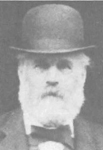
JAMES L. KING
1879–1882
James Lucius King, a native of New York, established himself as a prominent businessman in San Francisco. He served one term as a Member of the State Board of Equalization, then served in San Francisco for many years as a notary public. His last voting registration in that city (1904) lists his age as 76.
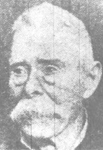
CHARLES GILDEA
1883–1886
A native of Ireland, Charles Gildea moved from Missouri to California in 1857. A plasterer by profession, he had a great interest in politics. Gildea was twice elected Assemblyman for EI Dorado County (1867 and 1869). He later served one term as Assemblyman for San Francisco County in 1878, and one term as a member of the Board of Equalization. In 1906 he was elected a member of the Election Board of San Francisco. He died March 27, 1918 at age 80.
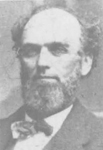
GORDON E. SLOSS
1887–1890
Gordon Sloss came to Pennsylvania from his native Ireland when he was a child. He came to California as a young man and settled in Calaveras County, where, he served for a number of years as Deputy Sheriff. He later moved to San Francisco where he was in the dray business. There he entered politics and in 1873 was elected a Fire Commissioner, a position he held for 12 years.
Sloss served one term on the Board of Equalization but failed to win re-election. He died April 14, 1892 shortly before his 68th birthday.
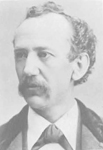
J. S. SWAN
1891–1894
Jabez S. Swan, a native of Stonington, Connecticut, came to California as a young man. An early settler in San Francisco and one of that city's first painters, he was well-known in the area. Swan served one term on the Board of Equalization from 1891 to 1894 He died at the Alameda Sanitarium January 26, 1914 at age 74.
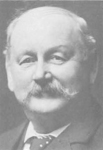
A. CHESEBROUGH
1895–1899
Andronicus Chesebrough was born in Maryland around 1838. He came to California in the 1860s and became involved in the shipping trade with Williams, Dimond, and Co. of San Francisco. Chesebrough, who is reputed to have been a gourmet and connoisseur of wines, served slightly more than one term on the Board of Equalization from 1895 until May, 1899 when he resigned. He died September 6, 1914 at age 76.
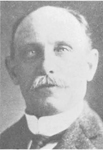
L. H. BROWN
1899–1902
Lewis Henry Brown was born in Hayward, California, March 24, 1857. He was appointed Treasurer of the City of Alameda. He was elected a San Francisco District Assemblyman (1883-85), then Clerk of California’s Supreme Court (1890-95) and California's Secretary of State (1895-99). Brown was then appointed to one term as a member of the Board of Equalization. He died in San Francisco March 16, 1948 at age 90.
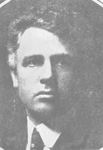
WILLIAM H. ALFORD
1903–1906
William Hays Alford was born in Bowie County, Texas, September 14, 1866. He came to California in 1868 where he was educated and later admitted to practice law. He served as a Member of the Assembly from Tulare County in 1893, Chairman of the Democratic State Central Committee from 1896 to 1898, and Assistant District Attorney of San Francisco from 1900 to 1903. He was elected to the Board of Equalization in November, 1902, served one term, and retired from public life. He died April 4, 1907.
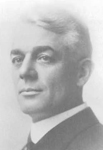
JOSEPH H. SCOTT
1907–1910
Joseph H. Scott was born in San Francisco March 16, 1862, and educated in that city’s public schools. In 1900 he was elected Tax Collector of San Francisco, and served for two years. On May 7, 1905 he was appointed to that position again by San Francisco’s Mayor to fill an unexpired term ending January 1906. Scott was elected to the Board of Equalization November 6, 1906.
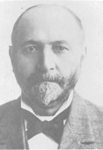
EDWARD M. ROLKIN
1911-1914
Edward Maximilian Rolkin was born in Russia October 12, 1850 and was educated in private schools. He came to the United States in 1868 and engaged in mining in Utah, Montana, Nevada, and California. He settled in San Francisco in 1884 and became involved in the hotel business. On November 8, 1910 Mr. Rolkin was elected to the Board of Equalization. He died in San Francisco February 24, 1941 at age 90.
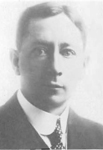
JOHN C. CORBETT
1915–1938
John Corbett was born in Vallejo, California August 1, 1870. In 1890 he became an employee of the San Francisco Assessor’s Office and specialized in tax matters.
He served as Deputy Assessor of the City and County of San Francisco for 20 years. In 1915 he became a Member of the Board of Equalization, and served for six consecutive terms. He died in office on September 11, 1938.
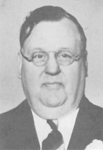
ANDREW J. GALLAGHER
1938
Andrew J. Gallagher, born in San Francisco October 27, 1878, began his career as a photo engraver and was associated with the leading San Francisco newspapers. He was active with the San Francisco Labor Council from 1902 to 1910 serving once as its secretary and twice as its president. In 1908 he was appointed Supervisor of San Francisco County, and served for 18 years. On October 5, 1938 he was appointed to the Board of Equalization, but served only a few months. Afterward he worked with the United States Mediation and Conciliation Service for 15 years. He died January 1, 1966, at age 88.
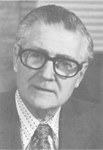
GEORGE R. REILLY
1939–
George R. Reilly, California’s senior elected official, was born in the Mission District of San Francisco March 21, 1903. He was graduated from the San Francisco schools and attended Sacred Heart College. A licensed California real estate broker, he was in the real estate and property appraisal business for many years. Mr. Reilly began his career of public service as a member of the San Francisco Election Commission. From that office he was named to the Board of Permit Appeals and subsequently became a member of the San Francisco Board of Supervisors. He was elected to the Board of Equalization in 1938, and has been reelected regularly ever since, serving longer than any Member in the history of the Board, and longer than any elected state official in the history of California. He has officiated as Board Chairman for ten one-year terms. Mr. Reilly is one of the founders of the Irish-Israeli-Italian Society and has served as one of its three co-presidents since its inception in March 1965.
Second District
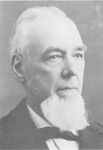
MOSES M. DREW
1879–1882
Moses M. Drew was born in Grafton County, New Hampshire March 15, 1830. In 1851 he moved to California’s EI Dorado County to engage in mining, then went into business in Sacramento. In 1875, he was elected Sheriff of Sacramento County, and he served two terms. Drew was elected to the Board of Equalization in 1879 but resigned after two years to accept appointment as a United States Marshal. After four years as Marshal, he resigned and returned to Sacramento where he served three more terms as Sheriff of Sacramento County. He died in October, 1911 at age 81.
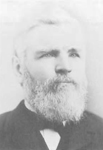
WILLIAM JOHNSTON
1882
William Johnston was born in Wilkinsburg, Pennsylvania June 2, 1829. He crossed the plains with a party of 300 in 1849 and engaged in mining in EI Dorado County for one year. Johnston moved to the Sacramento Valley and bought a squatters title to land near Richland. He became a successful farmer and was elected to the Legislative Assembly in 1871. He was elected to the State Senate in 1879. On April 1, 1882, he was appointed to succeed Moses M. Drew as a Member of the Board of Equalization. Johnston died November 14, 1905.
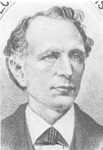
L. C. MOREHOUSE
1883–1898
Lewis Cass Morehouse was born December 29, 1833 in Onondaga County, New York. He settled in San Leandro and was elected Constable in 1866. He operated a collection agency for several years, until he was elected to the Board of Equalization. He served four terms. Morehouse went into banking and served four terms as director of the Central Bank of Oakland. Morehouse was president of the Bank of San Leandro and organized the First National Bank of San Leandro. He died June 8, 1915 at age 81.
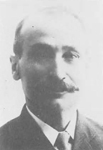
ALEXANDER BROWN
1899–1910
Alexander Brown, was born August 28, 1853 in Vergennes, Addison County, Vermont. He came to California in 1883 and settled in Calaveras County, where he was a merchant for many years. He was elected to the State Assembly in 1890 and to the Board of Equalization in 1898. He retired from the Board after three terms and returned to private business. He retired in 1913, and settled in Berkeley. He died November 2, 1938 at age 85.
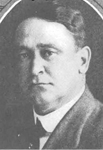
JOHN MITCHELL
1911–1924
John Mitchell, was born in Montreal, Canada January 1, 1862. While he was still a young boy his family moved to New England, where he was educated in the schools of New Hampshire and Massachusetts. He came to California in 1876 and went into the grocery business in Oakland. In 1896, Mitchell was elected Chairman of the Board of Supervisors of Alameda County, a position he held for many years. Mitchell was one of the organizers of the Oakland Chamber of Commerce. He served almost 14 years as a Member of the Board of Equalization, and died in office on October 1, 1924.
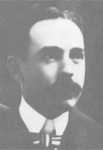
JOSEPH M. KELLEY
1924–1926
Born in Chicago, Joseph M. Kelley began his career in Oakland, where he served as a member of the Alameda County Board of Supervisors for 20 years prior to his assignment as Alameda County Assessor. He served two sessions in the State Assembly (1899 and 1901) as Oakland’s representative and was appointed to the Board of Equalization October 25, 1924. Kelley was Superintendent of the State Industrial Home for the Adult Blind in Oakland prior to his retirement. He died April 22, 1942 at age 70.
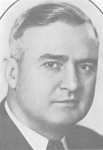
FRED E. STEWART
1927–1942
Fred E. Stewart moved to Richmond, California from his native Illinois in 1906. After a lengthy career in railroad work, he was appointed Superintendent of the State Belt Railroad in 1917 by the State Board Harbor Commission. Stewart began his tenure with the Board of Equalization in 1927 and during his four terms of office, he was extremely influential with the Legislature. His ideas were incorporated with those of Controller Ray Riley in the Riley-Stewart Amendment which significantly altered the state’s tax structure and resulted in extensive tax legislation during the 1930s. To this day, the provisions of that landmark legislation comprise California’s revenue system. Stewart was one of the founders of the National Association of Tax Administrators. He was twice elected its president. Stewart died in office April 17, 1942 at age 60.
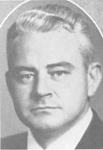
IVAN C. SPERBECK
1942
Born in Marysville in 1908, Ivan Sperbeck was the son of a pioneer California family. A noted Oakland criminal lawyer, he graduated from U. C. Berkeley in 1930 and was later a Deputy District attorney of Yuba County. In 1939, Sperbeck was named Secretary of the State Personnel Board and became a member of that board two years later. In 1942, Sperbeck was appointed to a brief term on the Board of Equalization. He died in Berkeley November 21 , 1970.
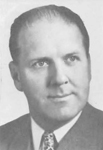
JAMES H. QUINN
1943-1958
James H. Quinn was born in Methuen, Massachusetts August 25, 1902. A steamfitter by trade, Quinn moved to Oakland in 1923. He served as President of the Building Trades Council of Alameda County from 1929 to 1943. During most of this period he was editor of the East Bay Labor Journal Quinn was elected to the Oakland City Council in 1933, 1937, and 1941. He served two terms as Vice-Mayor of Oakland. Quinn served four terms with the Board of Equalization from 1943 through 1958.
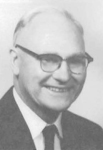
JOHN W. LYNCH
1959–1975
John Lynch was born in Athens, Ohio and was graduated from Cambridge College, Ohio with a major in accounting. He served in World War I and was decorated for bravery on the field at the Battle of Arras. He was seriously wounded at the Battle of Cambrai. Before he was elected to the Board of Equalization in 1958, Lynch worked 25 years with major oil companies, three years in his own tax consulting business, and 11 years with the Bureau of Internal Revenue as deputy collector, revenue agent, and member of the racket squad. Lynch died in office December 4, 1975, after serving on the Board for 17 years.

IRIS SANKEY
1976–1978
Born in Oak Park, Illinois October 13, 1928, Iris Sankey became the second woman to serve on the Board in its 100-year history. She graduated from Palomar College and San Diego State College with a B.A. degree in Social Science. Sankey served as Chairwoman of the San Diego County Energy Committee and as President of the Palomar College Development Foundation. She served for eight years on the Escondido Parks, Recreation and Beautification Commission and was a member of the State Health Manpower Policy Commission. She was also a member of the San Diego Ecology Center, the Escondido Underground Utility Committee and the San Diego Gas and Electric Company Site Selection Committee. Appointed to the Board of Equalization on May 27, 1976, Sankey became the first woman ever to serve as Vice-Chairwoman.
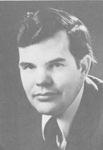
ERNEST J. DRONENBURG, JR.
1979–
Born in Washington, D.C., Dronenburg moved to California at age two when his parents relocated to San Diego in 1945. He attended school in San Diego and graduated from San Diego State University in 1966 with a B. S. in business administration. He worked for five years as an industrial engineer for the Rohr Corporation and N.C.R., Inc., before joining the Board of Equalization as a tax auditor. After seven years with the agency, he was elected to the Board, the first employee ever to attain this position. Prior to his election, Dronenburg was a businessman in his own right. He founded and operated three sporting goods manufacturing and distributing companies.
Third District
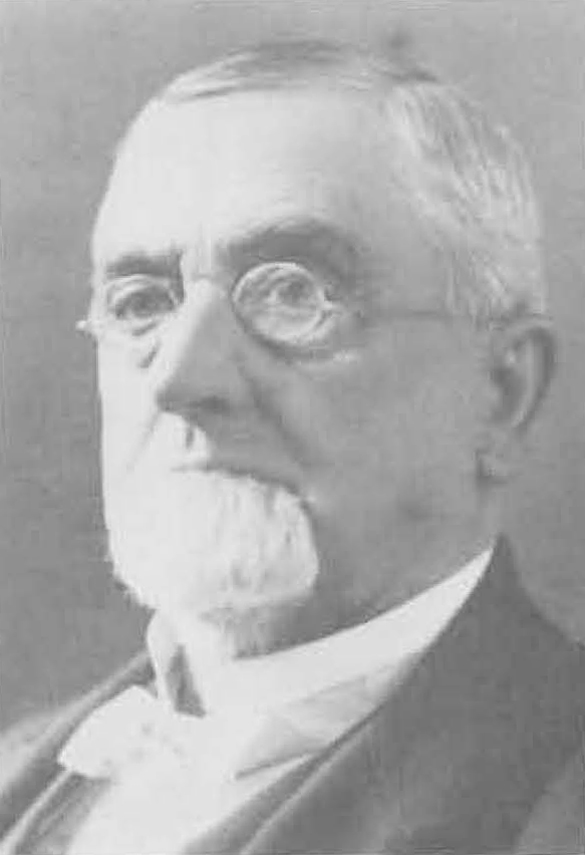
WARREN DUTTON
1879–1882
Born in Whitehall, New York in 1823, Dutton arrived in San Francisco August 1, 1849. He engaged in mining and then settled in Tomales, Marin County. Largely through Dutton's efforts Tomales became a shipping center for much of the surrounding territory. Together with Milton S. Latham and others, he organized and built the North Pacific Coast Railroad. He also founded the Bank of Tomales in 1875 and served as its president throughout his life. Dutton was e lected to the Board of Equalization in 1879 and served one term. He organized the Dairymen’s Union of San Francisco. He died June 19, 1903 at Dutton’s Landing.
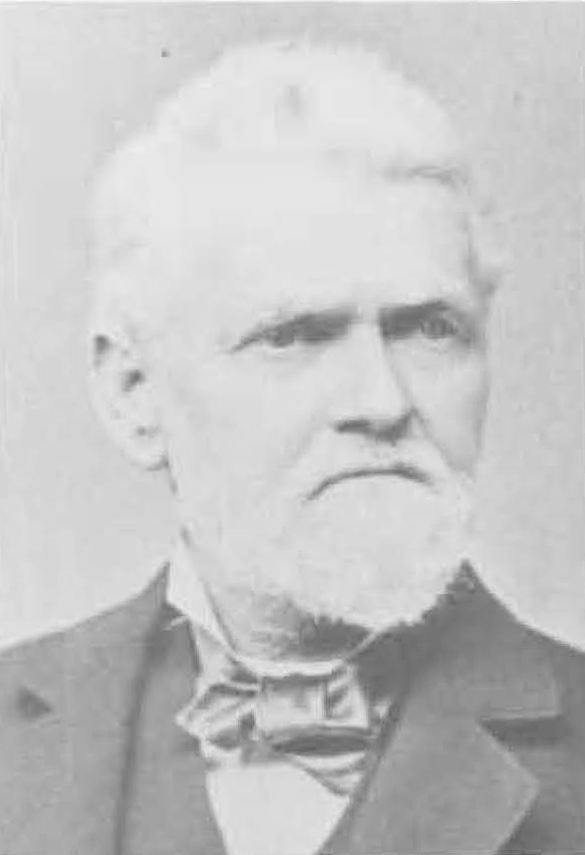
C. E. WILCOXON
1883–1890
A native of Kentucky, Caleb E. Wilcoxon came to Sutter County by ox team from Missouri in 1853. Wilcoxon was very active in public affairs, serving as County Clerk for 14 years and also as School Superintendent, Undersheriff, and Treasurer. He was at one time a Member of the State Legislature and in 1882 was elected to the Board of Equalization. He served as the Board’s Chairman for four of his eight years in office. Wilcoxon died January 3, 1904 at age 80.
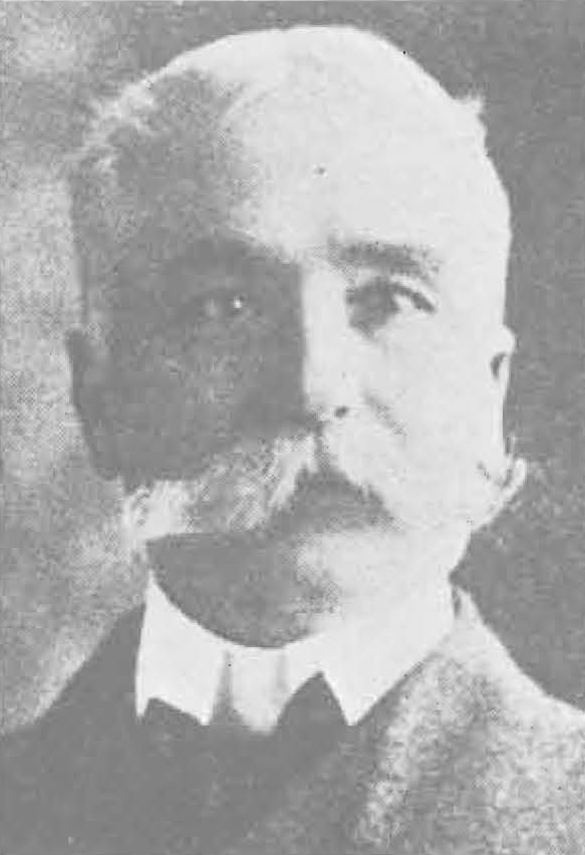
R. H. BEAMER
1891–1906
Richard Henderson Beamer was born in Livingston County, Missouri July 29, 1849. He settled in Yolo County as a young man and engaged in ranching. From 1872 to 1874 Beamer served as Yolo County Auditor, and then for a four-year term as County Assessor. In 1855 he was chosen Sheriff and in 1891 he began the first of four terms as a Member of the Board of Equalization. He later served as Mayor of Woodland.
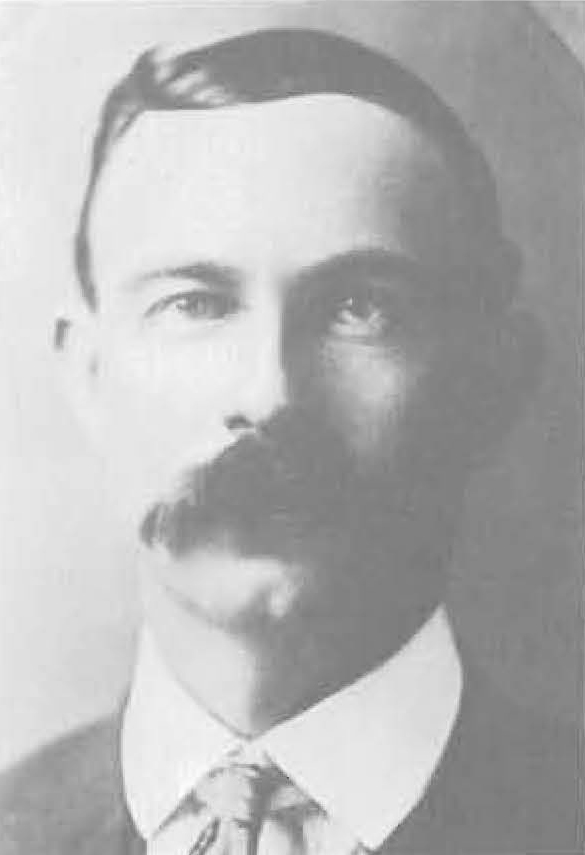
R. E. COLLINS
1907–1946
Richard E. Collins was born in Weaverville, Trinity County, in 1873. A miner in his youth, Collins was later elected Deputy Sheriff of Shasta County. He was elected Shasta County Assessor in 1902. In 1907, Collins was elected to the Board of Equalization and served consecutive terms for 40 years. Collins officiated as Chairman of the Board for almost 30 years except for a brief period in 1935. No other member has come close to matching that record. He died in Sacramento February 15, 1948 at age 75.
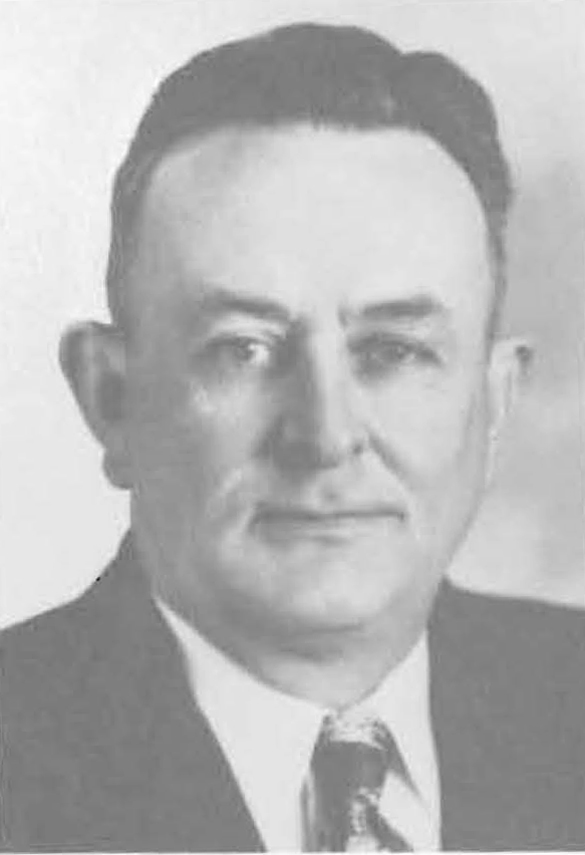
JERROLD L. SEAWELL
1947–1952
Born near Colusa in 1897, Jerrold Seawell attended school in Oakland. He went to work for the Southern Pacific Railroad as a young man and became a locomotive engineer working out of Roseville. In 1928 he was elected to the Assembly and in 1932, to the State Senate. Seawell was elected to the Board of Equalization in 1946. During his second term of office, he resigned because of illness. He died in Hollywood October 20, 1952, less than 24 hours after his resignation.
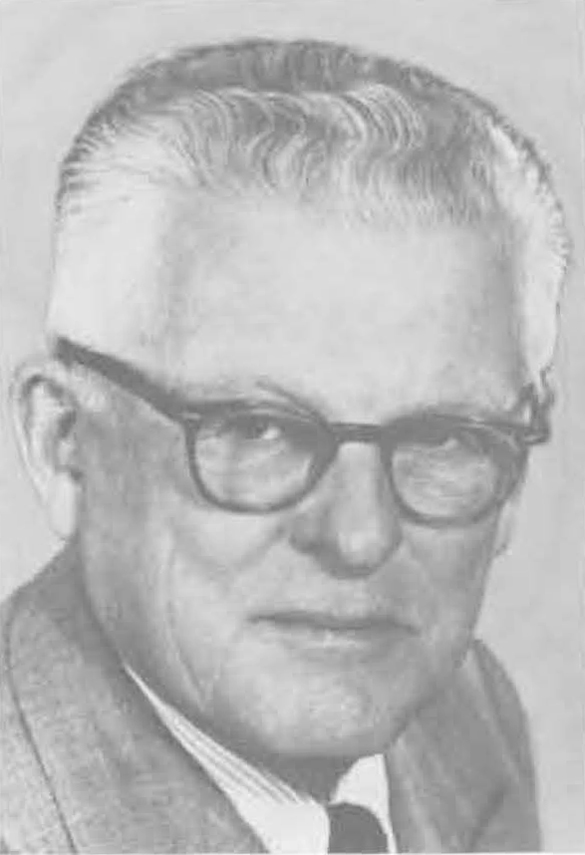
PAUL R. LEAKE
1952–1970
Born in Dixon, California in 1890, Paul Leake grew up in the newspaper business. His family has published the Woodland Daily Democrat for many years. Leake worked for that newspaper as advertising manager and business manager before he became its editor and publisher. He was a graduate of the University of Santa Clara. From 1939 to 1952 he was Collector of Customs for the Port of San Francisco. He resigned to accept appointment to the State Board of Equalization to succeed Jerrold Seawell. Leake died in San Francisco July 30, 1977.
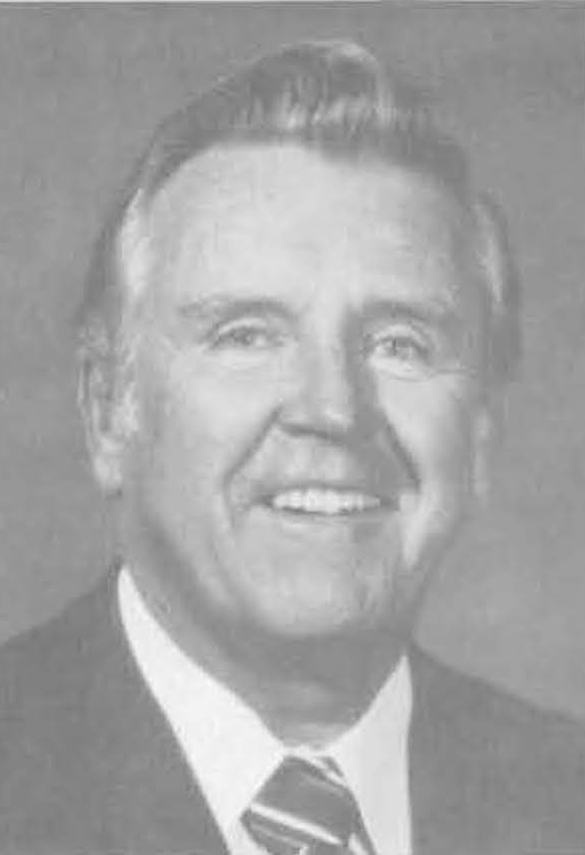
WILLIAM M. BENNETT
1971–
William M. Bennett was born in San Francisco in 1918. In World War II he served as a captain in the Air Force, completing 50 missions with the 15th Air Force over Europe. A former professor of law, Bennett taught courses at Hastings College of Law, University of California, San Francisco. He began his government career as a Deputy Attorney General of California. In 1958, he was appointed Chief Counsel to the California Public Utilities Commission; in 1962, he was appointed a Member of that Commission and later served as its President. A member of the State Bar of California, Bennett has practiced law extensively before both state and federal agencies, including the United States Supreme Court.
Fourth District
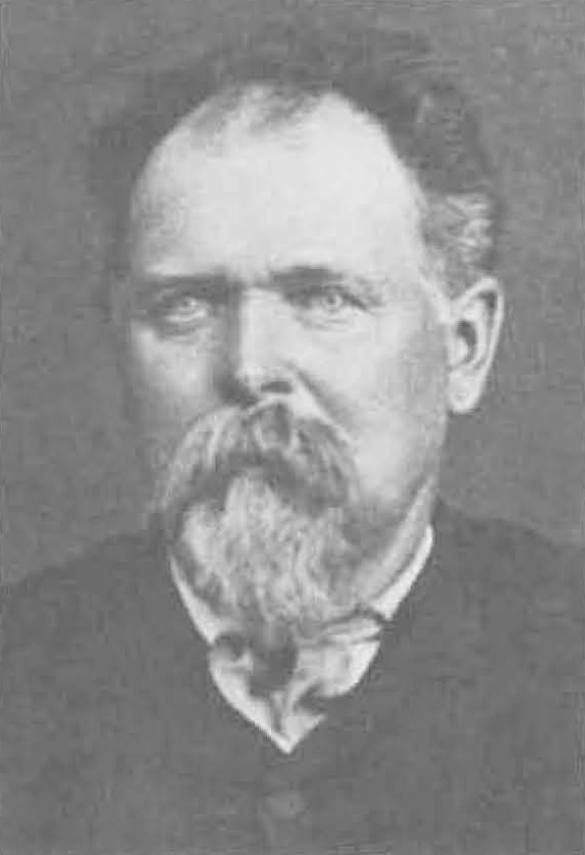
TYLER DAVIS HEISKELL
1879–1882
Born in Lee County, Virginia December 1, 1823, Tyler Davis Heiskell traveled from Tennessee to California by wagon train and arrived in 1850. His diary indicates that he settled in Indian Diggins, EI Dorado County in 1852 and began mining. In 1861 he moved to a ranch along the Stanislaus River near Oakdale, where he engaged in farming, sheep raising and politics. In 1878 Heiskell was elected as a delegate to the 1879 Constitutional Convention. Heiskell served as a Member of the Board of Equalization from 1879 to 1882. He moved to Tulare in 1889 where he died December 8, 1897.

JOHN MARKLEY
1883–1886
John Markley was born in Greenville, South Carolina April 11, 1843. At the beginning of the Civil War, he enlisted in the Butler Guards in Greenville. Disabled a year later, he returned home. In 1869 he moved to California and settled in Auburn in the drug business. He moved to Monterey and served three terms as County Clerk (1874-1879). He served one term as a Member of the Board of Equalization and was subsequently appointed Chief Clerk of the U.S. Mint in San Francisco. In 1894 he served as Secretary of the Democratic State Central Committee. Governor James H. Budd appointed Markley Secretary of the State Board of Examiners. From 1898 to 1902, he was a Member of the State Board of Bank Commissioners. He sold his property in Geyserville, Sonoma County, and moved to Sutter County, where he purchased extensive acreage. He owned one of the largest and finest vineyards in the Central Valley. Markley died July 23, 1911, while he was visiting relatives in Greenville.
The Great Register of the Healdsburg Museum provides the following description of John Markley: “Age 53, five feet, eight-and-one-half inches in height, with dark complexion, dark brown hair, hazel eyes.” John Markley is the only Board Member whose photograph does not appear in this History. No Markley photograph has been located despite exhaustive efforts.
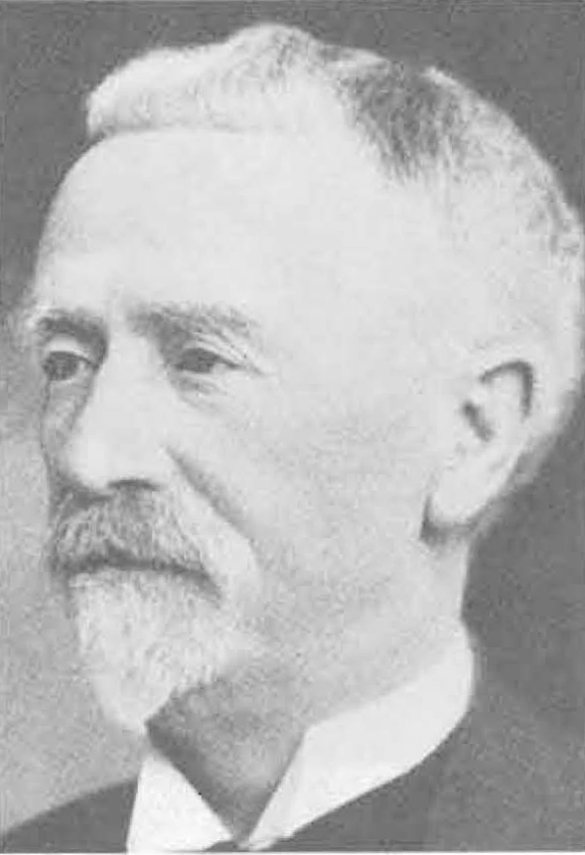
JOHN T. GAFFEY
1887–1890
Born in Galway, Ireland, November 1, 1860, John Gaffey came to the United States in 1865 and settled in Santa Cruz where his family developed a large sheep and cattle ranch. After one year at the University of California, he left in 1879 to become a reporter for the Santa Cruz Herald, which he later owned and managed for three years. He was appointed Undersheriff of Santa Cruz County, then moved to Los Angeles where he had been appointed Clerk of the Supreme Court for the Southern District of California. In 1886 he was elected to the Board of Equalization. After one term, he returned to journalism as the managing editor of the Los Angeles Evening Herald. In 1893 President Grover Cleveland appointed Gaffey Collector of Customs for the Southern District of California.
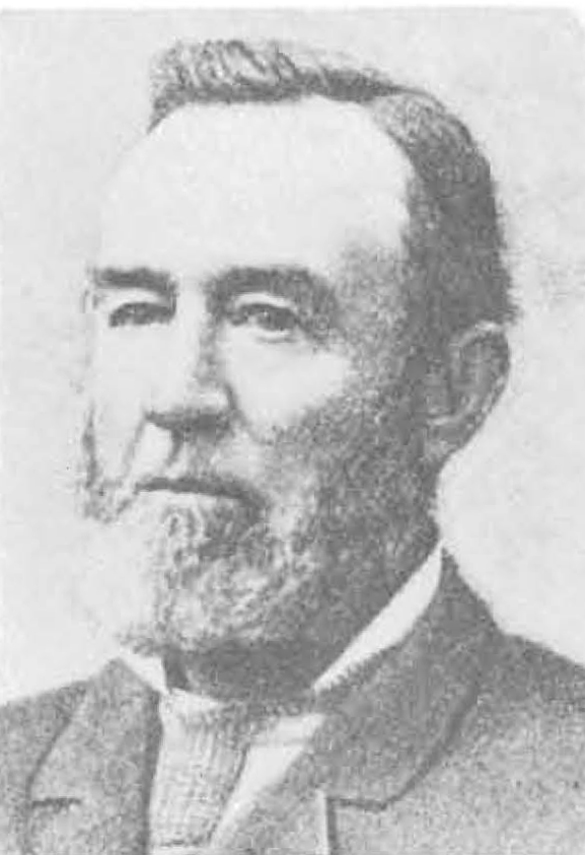
JAMES R. HEBBRON
1891–1894
Born in London, August 27, 1828, James Hebbron came by sea to San Francisco in 1851 and settled in Sonoma County. Though he was active in politics, his main interest seems to have been ranching. Twelve years after serving as a member of the State Board of Equalization, he took up residence in Monterey County and entered the cattle raising business. Although well into his seventies, he became the principal organizer of Monterey County's Republican party. Around 1911, Hebbron organized the Salinas Rodeo. He died October 18, 1926 at age 98.
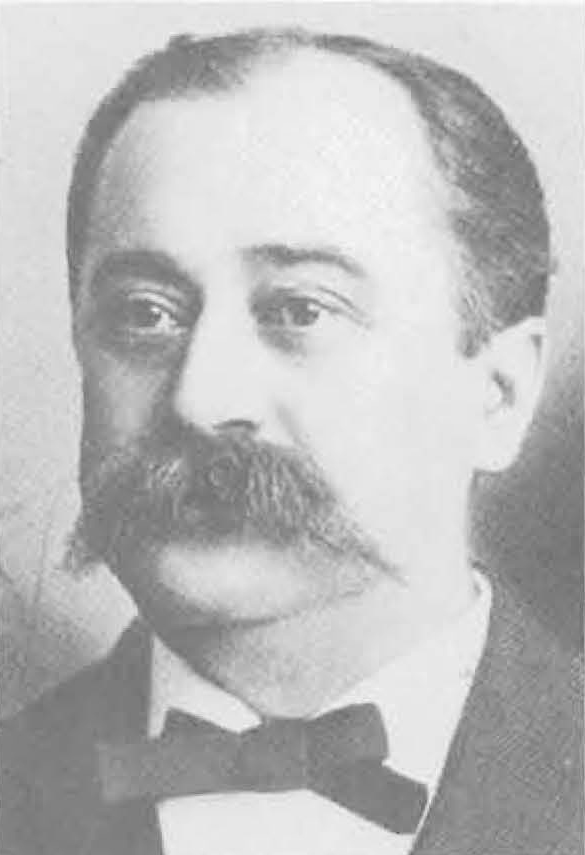
GEORGE L. ARNOLD
1895–1898
Born in Fond du Lac, Wisconsin November 11, 1852, George Arnold came to California in 1887. In 1895 he was elected to the Board of Equalization. Afterward he served one term on the Los Angeles Police Commission. He was president of the Los Angeles Olive Growers Association from 1894 until 1903. In 1903 he opened his own brokerage office which he operated until his death, June 28, 1914.
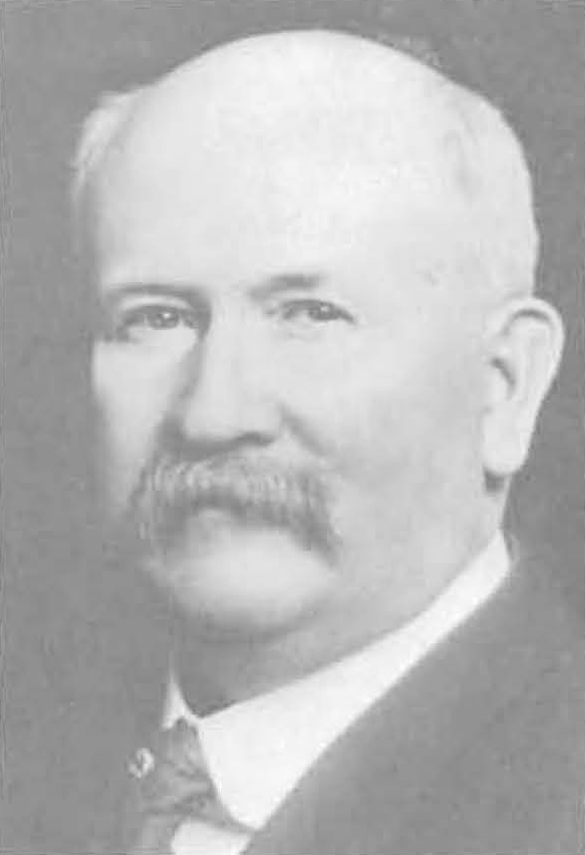
THOMAS O. TOLAND
1899-1902
Born in Alabama, Thomas Toland came to California in 1875 at the age of 18. He taught school in Ventura County for many years and later went into the real estate business. After passing the bar in 1889, Toland began practicing law. He became the Ventura County District Attorney and in 1897, represented the county in the State Assembly. A strong Democrat, Toland was elected to the Board of Equalization from a heavily Republican district.
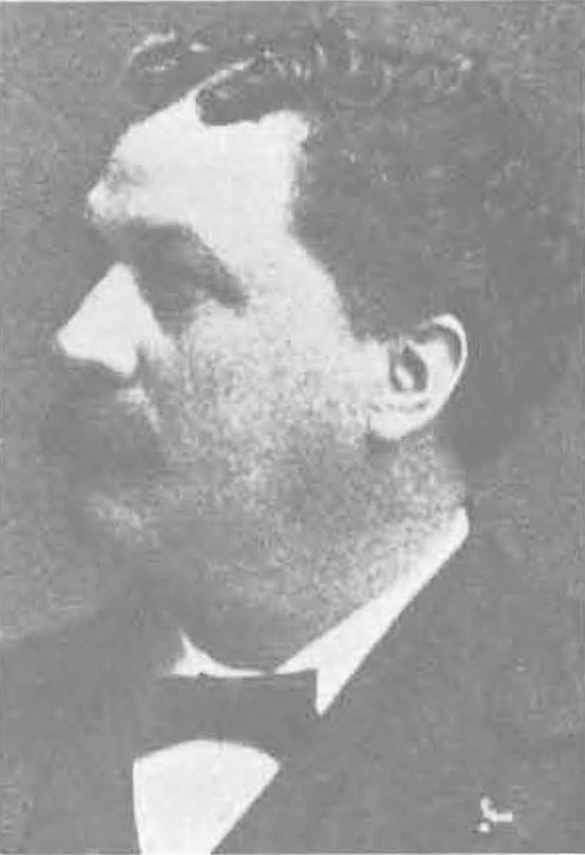
FRANK MATTISON
1903–1906
Frank Mattison was born on a ranch near Soquel in Santa Cruz County. Mattison was elected to the Board of Equalization for one term. In 1907 Governor James M. Gillett suspended State Controller A. B. Nye and appointed Frank Mattison to replace him. This action precipitated a bitter political struggle in which Nye eventually triumphed through court action. Mattison's last public office was as Commissioner of Public Health and Safety in Santa Cruz. He died at his home in Santa Cruz County January 15, 1920.
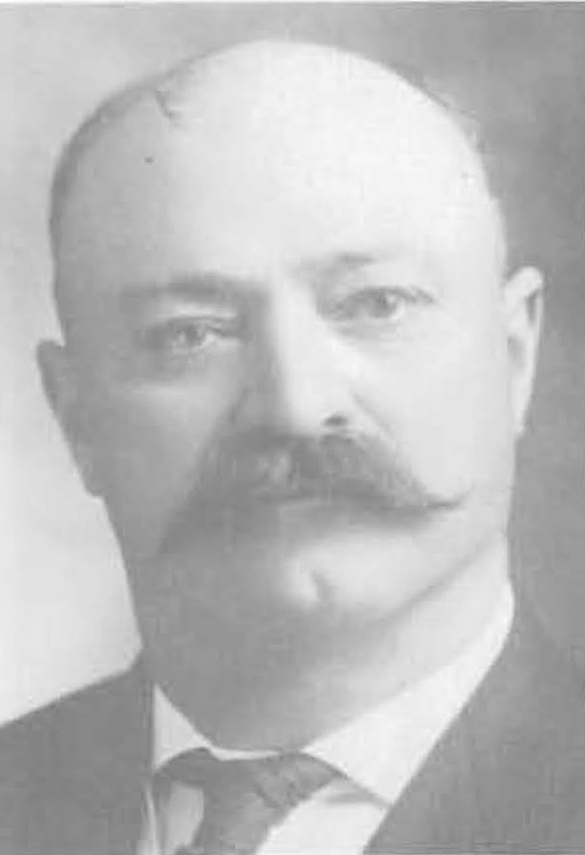
JEFFERSON McELVAINE
1907–1918
Born and raised in San Bernardino County, Jefferson McElvaine spent most of his adult life in politics. He had served as City and County Assessor of San Bernardino before being elected three times to the Board of Equalization. One of the best known politicians in southern California, he died in Los Angeles June 30, 1921 at age 59.
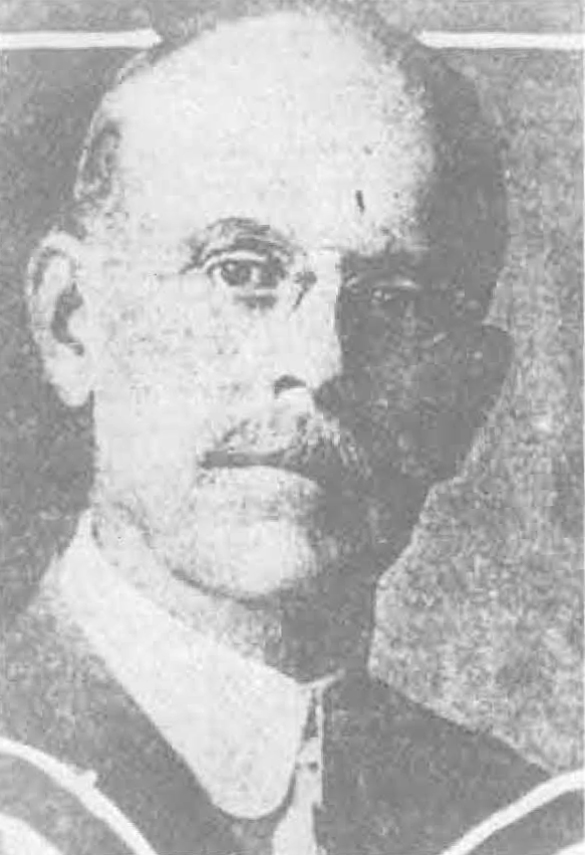
PHILIP D. WILSON
1919
Philip Wilson came to California from Denver in 1904, where he had served as the western representative for the stock and bond house of William P. Bonbright and Company of New York and London. In 1909 he was elected secretary of the Los Angeles Realty Board. He resigned in January, 1917, to join the real estate firm of Lawrence V. Burch and Company. In 1918, he was elected to the Board of Equalization to represent the Fourth District. He died tragically in his ninth month of office on September 14, 1919, when a car in which he was riding was struck by a train in Pasadena.
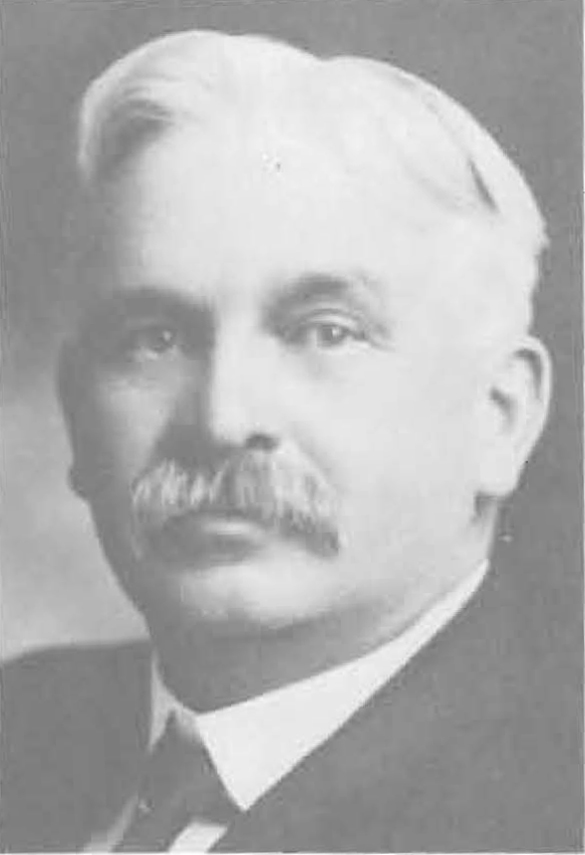
HARVEY G. CATTELL
1920–1934
Harvey G. Cattell was born in Harrisville, Ohio, October 1, 1861 of Quaker parentage. He was raised in Iowa and moved to Ogden, Utah in 1898. He came to Pasadena in 1903 where he lived for 28 years. Elected to the California Assembly in 1910, he introduced the suffrage bill in the 1911 session which led to the submission of the equal suffrage amendment for voter approval. Cattell served 15 years with the Board of Equalization, four years on the Pasadena City Council, and for many years on the board of directors for the Pasadena Tournament of Roses.
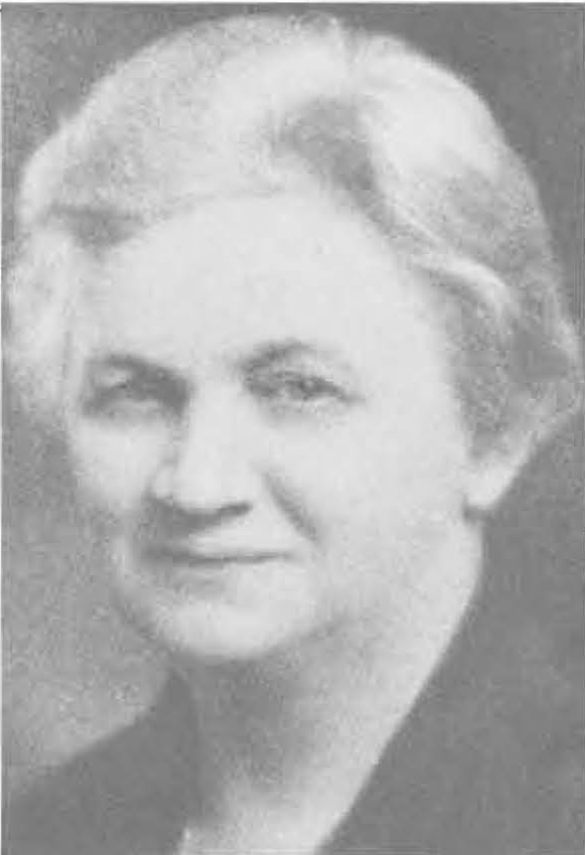
ORFA JEAN SHONTZ
1935
Orfa Jean Shontz was the first woman ever to serve on the Board, and the only woman ever elected to the Board. Born in Avoca, Iowa, she earned her law degree in 1914 after attending Iowa State College at Ames and the University of California at Los Angeles. She served Los Angeles city and county in the following capacities: Probation Officer, 1911–1914; Referee, Probate Court, 1914-1915; First Referee of Juvenile Court, 1915–1920; and City Clerk, 1921. She was in private law practice from 1922 to 1933. In 1935 she was elected to the Board of Equalization. After less than a year in office, Shontz resigned on December 12, 1935. Her move appears to have been politically motivated, and prompted by Governor Merriam who appointed her to a vacancy in the Los Angeles Municipal Court, and named his own appointee to the Board.
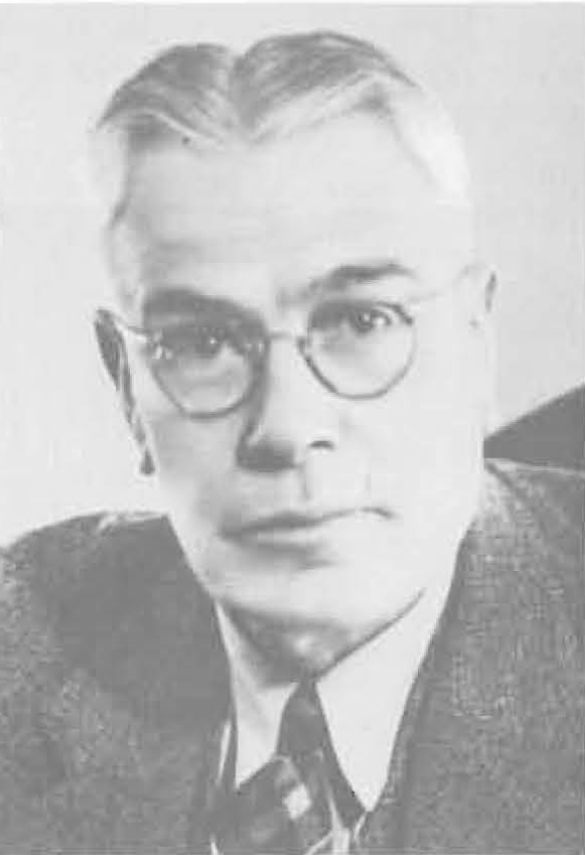
RAY EDGAR
1935–1938
Born in Iowa around 1873, Ray Edgar came to California in 1892. As a young man, Edgar played a large part in water development in the Imperial Valley. Prior to serving on the Board of Equalization, he had been a state inheritance tax appraiser. When Orfa Jean Shontz resigned in 1935, Governor Merriam appointed Ray Edgar to the Board. Edgar, who lived in San Clemente, died suddenly on February 12, 1938 at age 65, before completing his term of office.
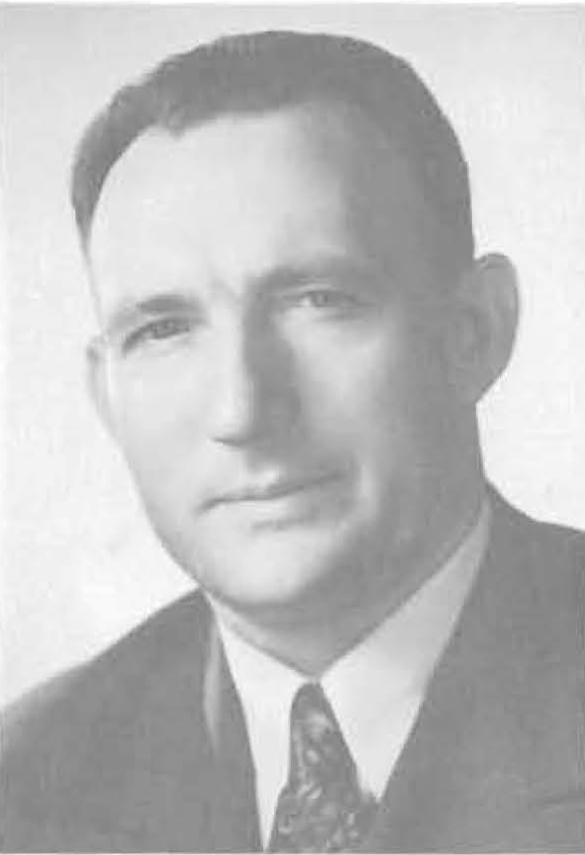
WILLIAM G. BONELLI
1938–1954
William G. Bonelli was born on a ranch in Kingman, Arizona, November 9, 1895. He came to Los Angeles in 1912 to finish high school, graduated from the University of Southern California and then attended Occidental College where he received a master’s degree in 1923. After earning his law degree from Southwestern University in 1924, he was admitted to the California Bar in 1925. Bonelli became an Associate Professor of Political Science at Occidental in 1922 and taught for seven years. In 1927 he was elected to the Los Angeles City Council and served as Council President. He was elected to the Assembly in 1931 and was appointed to the State Board of Equalization in March 1938.
Bonelli was perhaps the most controversial member in the history of the Board of Equalization. He had been in office just a year when he was indicted on bribery charges based on alleged misdealings in liquor licenses, but he was acquitted. However, on the eve of his election in 1954, additional allegations surfaced and he was defeated after nearly 17 years in office. He was subsequently indicted by the San Diego County grand jury, but was never brought to trial. After his defeat he immediately left for Arizona where for two years he successfully fought off California's attempt to extradite him. He then fled to Mexico where he remained until his death, November 21, 1970. He never ceased asserting his innocence.
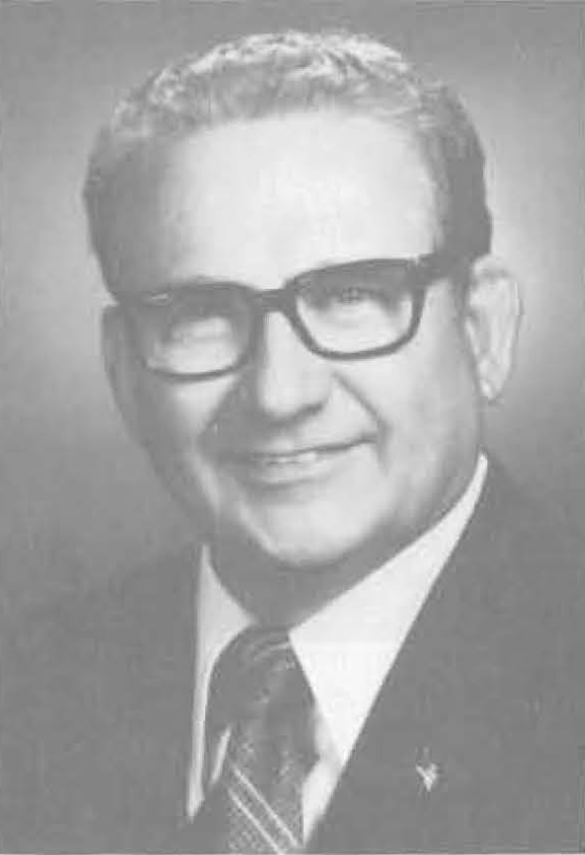
ROBERT E. McDAVID
1954–1958
Born December 29, 1908 in Grayson, Kentucky, a graduate of Northwestern University, McDavid was a Certified Public Accountant in both Illinois and California. He was an auditor for eastern CPA firms during 1935 and 1936. In 1945 he founded the Robert McDavid and Company, CPA firm in Los Angeles. It was McDavid who beat Bonelli in the 1954 election. He served one term.
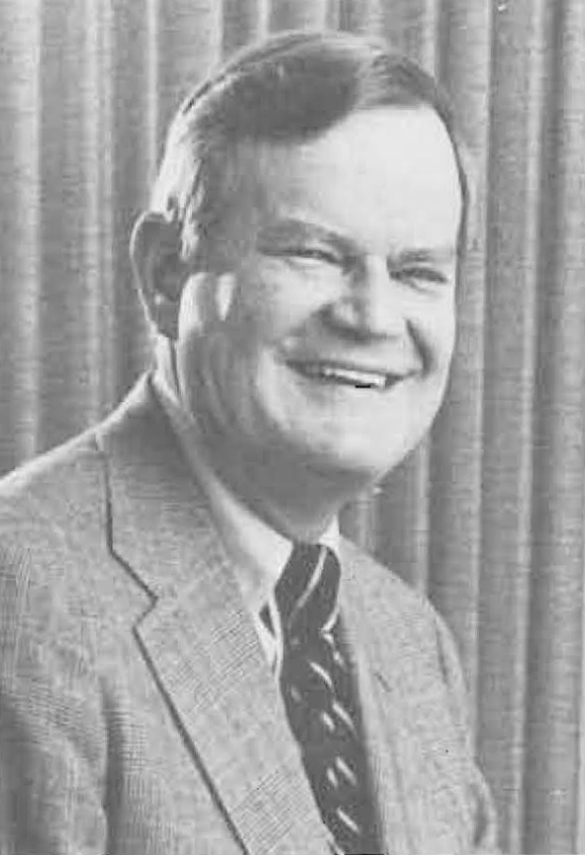
RICHARD NEVINS
1959–
Born in Pasadena in April 1921, Richard Nevins attended schools there and later went to Yale University. He graduated in 1943 with a bachelor of arts degree in government. After serving three years with the Army Air Force, Nevins joined an insurance brokerage firm. He was elected to the Board of Equalization in 1958 to represent eight southern California counties with a population of eleven million. Following the 1971 reapportionment his district boundaries were changed. He represents five million people in Los Angeles County. A strong supporter of AB 80 and advocate of the 1967 Senior Citizens Property Tax Assistance Law and its 1973 augmentation, Nevins has petitioned the Commission on Government Reform to analyze the impact of state and local taxes on individuals, families, and business.
Controllers
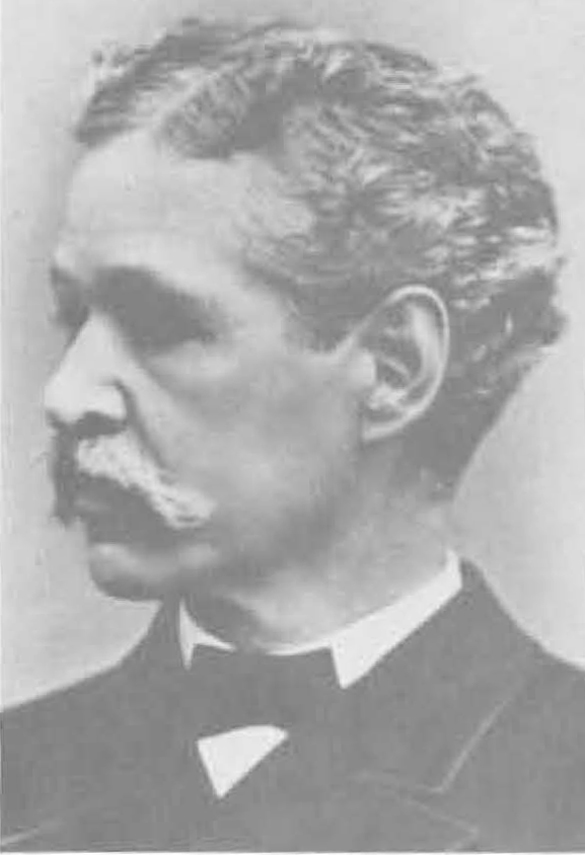
D. M. KENFIELD
1879–1882
Born in Massachusetts in 1828, Kenfield came to California in 1853. He settled in Sonora and became an agent for Wells Fargo and Company Express. He was elected five times Treasurer of Tuolumne County. Kenfield became California’s State Controller in 1879 and served one term. He died in San Francisco September 29, 1883, at age 55.
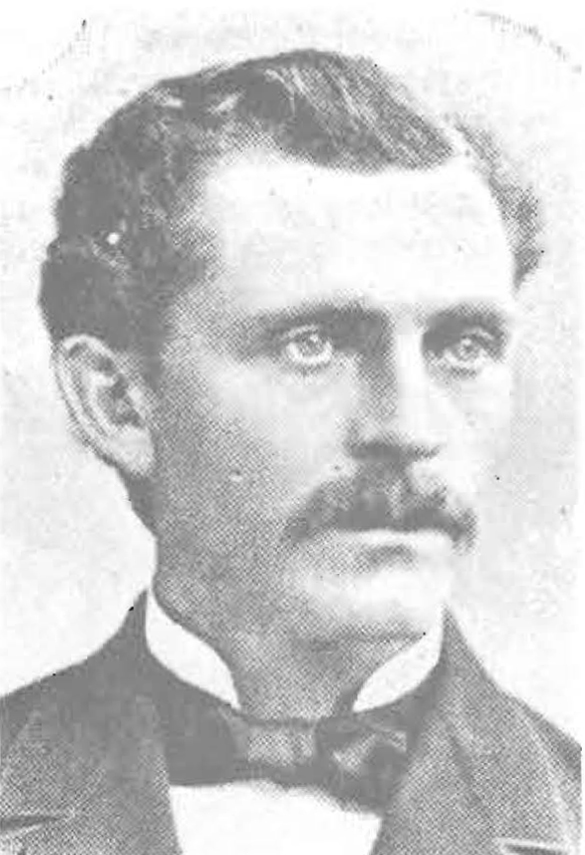
JOHN P. DUNN
1883–1890
Born in Ireland in April 1852, John Dunn came to Cohoes, Albany County, New York in July of that year. He attended the public schools of Cohoes, and Bryant, Stratton’s Business College in Troy, and Cornell University in Ithaca. Dunn came to San Francisco in 1875 and entered the produce business. He was elected San Francisco City Auditor in 1879 but was defeated for reelection in 1881. On November 7, 1882 he was elected to the first of two terms as State Controller. Afterward, he returned to San Francisco where he served for a time as registrar of the land office in San Francisco. Dunn moved to Southern California in 1900. He died May 29, 1906 at age 54.
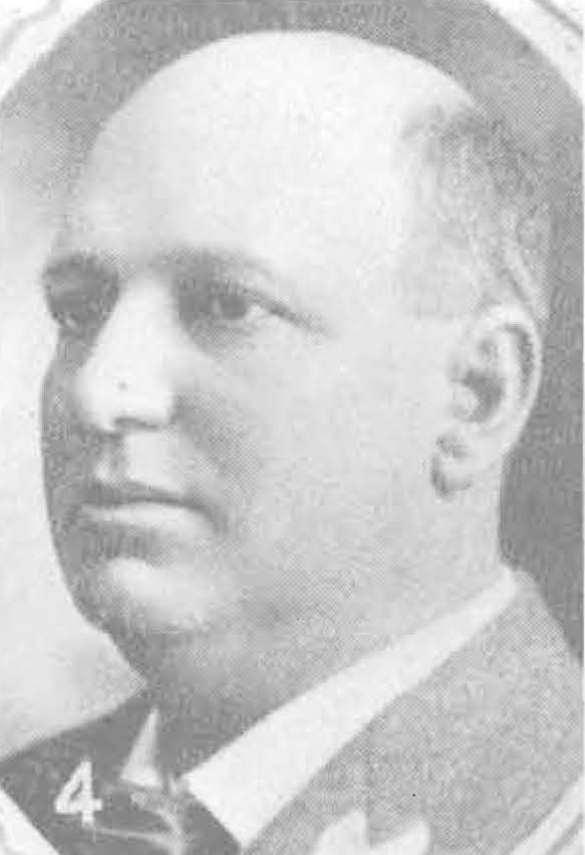
EDWARD P. COLGAN
1891–1906
Edward P. Colgan was born in Santa Rosa, California on June 10, 1856. He was a blacksmith for 13 years. He was twice elected Sheriff of Sonoma County. In 1890, he was elected State Controller. Colgan died in office November 20, 1906 shortly after winning reelection to his fifth term of office.
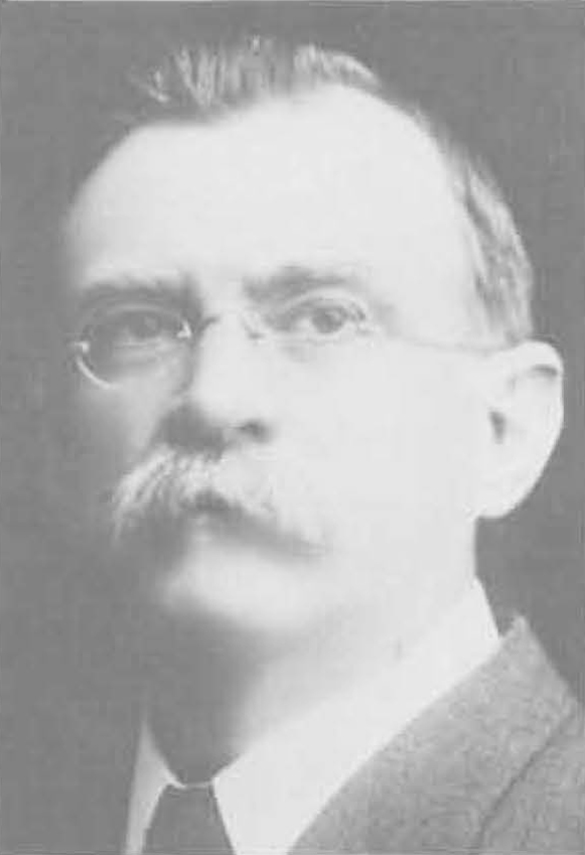
A. B. NYE
1906–1913
Alfred Bourne Nye was born in Stockton in 1853. He was educated in the Wareham and Falmouth, Massachusetts public schools and at Falmouth Academy. He began a newspaper career in the east and became editor of the Oakland Enquirer around 1884. In January, 1903, Nye became private secretary to Governor George C. Pardee. He was appointed Controller on November 23, 1906 and was reappointed on January 7, 1907. Nye was elected to two more terms, but he died in office August 19, 1913 at age 59.
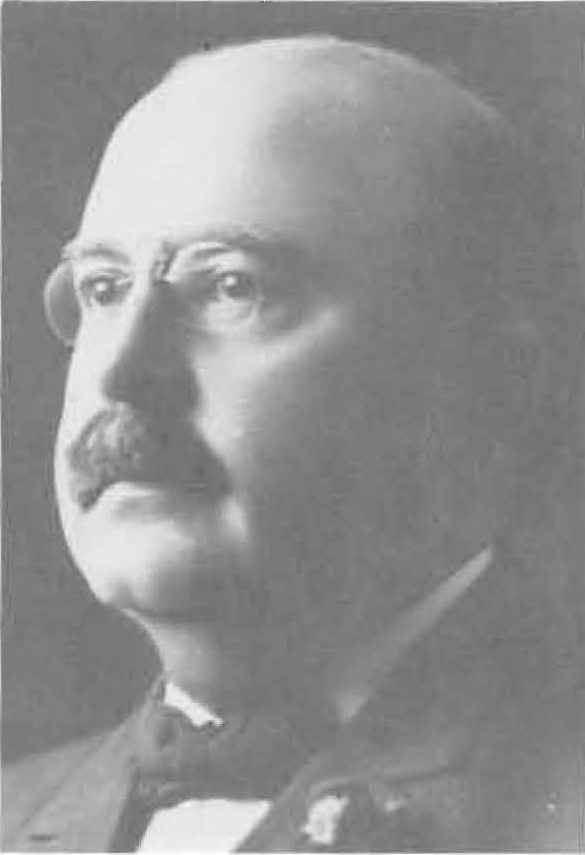
JOHN S. CHAMBERS
1913–1921
John Shearer Chambers was born in Covington, Kentucky, November 4, 1867. He was educated in Kentucky and later moved to California. For a time he served as managing editor of the Sacramento Bee. He was also President of the Napa State Hospital Board. Chambers was appointed Controller August 28, 1913 after the death in office of A. B. Nye. He was elected to two more terms in 1914 and 1918 but resigned in 1921, before completing his final term. He died November 20, 1923.
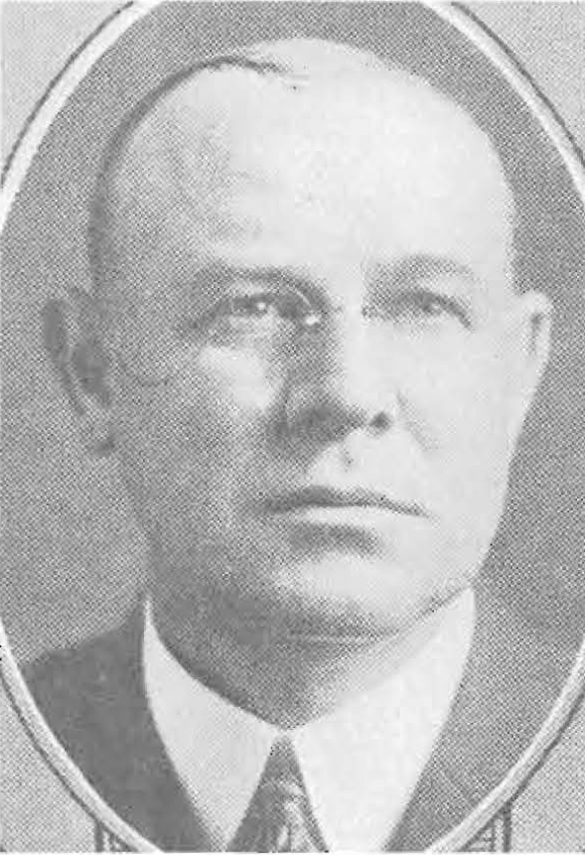
RAY L. RILEY
1921–1936
Born in Vicksburg, Michigan on July 20, 1874, Ray Riley came to Colton, California in 1907 and engaged in the drug business. He served on the Colton Board of Trustees and the San Bernardino County Board of Supervisors. In 1918, Riley was appointed State Water Commissioner and in 1919 he was appointed State Real Estate Commissioner. He was appointed State Controller in July 1921 after the resignation of John Chambers. Riley was elected to four more terms, but resigned in 1936 before finishing his final term, when he was appointed to the Railroad Commission. He served on the Railroad Commission until 1944. Later, he ran unsuccessfully for the United States Senate. Ray Riley died May 19, 1953 in New York. He was co-author of the Riley-Stewart Amendment which changed the concept of taxation in California.
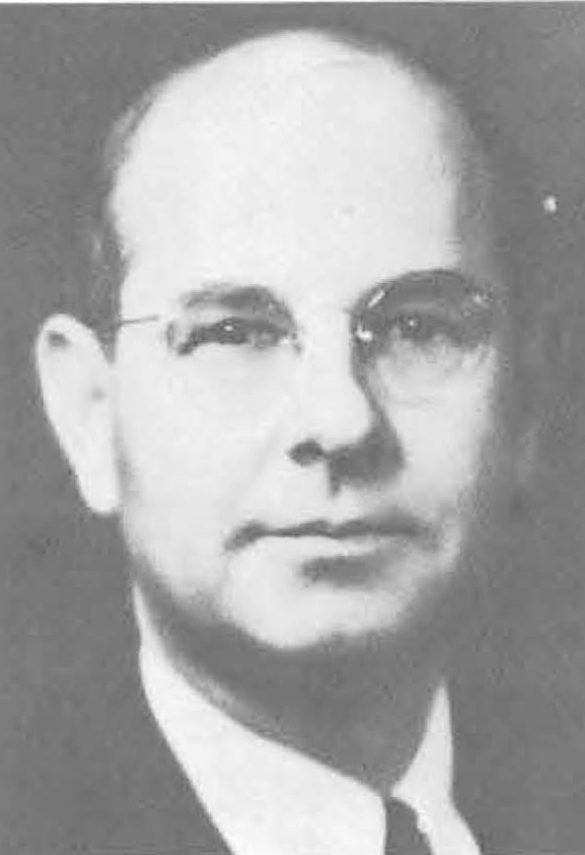
HARRY B. RILEY
1937–1946
Harry B. Riley was born in Orange County, California on December 24, 1888. He was educated in the public schools of Long Beach and was later graduated from the University of Southern California Law School. At age 21, Riley was elected City Clerk of Long Beach and was reelected to a second term. He was also elected to two terms as Long Beach Commissioner of Finance. Riley served as Assemblyman representing Long Beach from 1931 to 1937. Harry Riley was appointed Controller in January of 1937 when Ray Riley (no apparent relation) was appointed to the Railroad Commission. Riley was elected to two more terms as Controller. He died in office February 4, 1946.
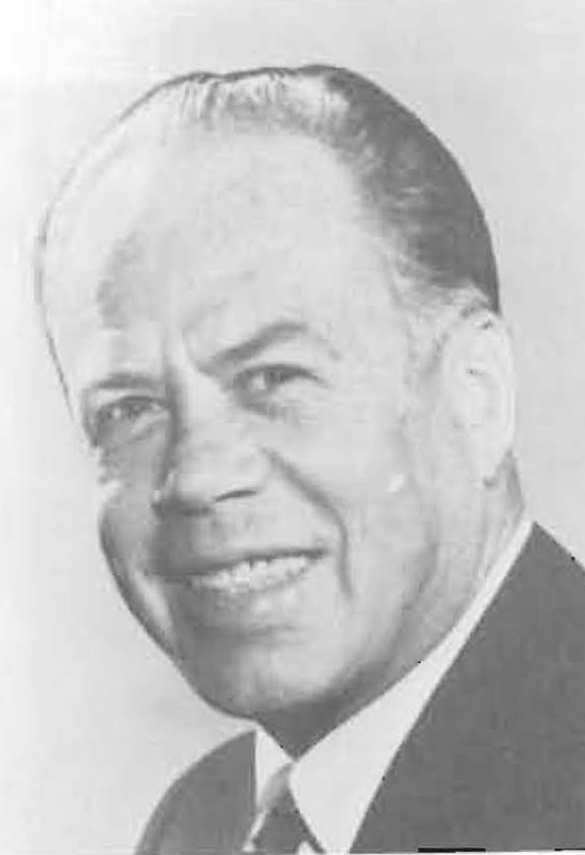
THOMAS KUCHEL
1946–1953
Thomas Kuchel was born in Anaheim, California August 15, 1910. His father, Henry Kuchel was publisher of the Anaheim Gazette for 48 years; his grandfather was among the original founders of Anaheim. A lawyer by profession, Thomas Kuchel earned his doctorate in law from the University of Southern California and was admitted to the State Bar in 1935. He was elected Assemblyman from Anaheim in 1937 and 1939. Although Kuchel served as State Senator from 1941 to 1945 he was called to active duty in the United States Naval Reserves in 1942. On February 8, 1946, he was appointed State Controller. He was elected to two more terms as Controller but resigned his office in January 1953 to accept appointment by Governor Earl Warren as United States Senator. He served in the Senate until 1968.
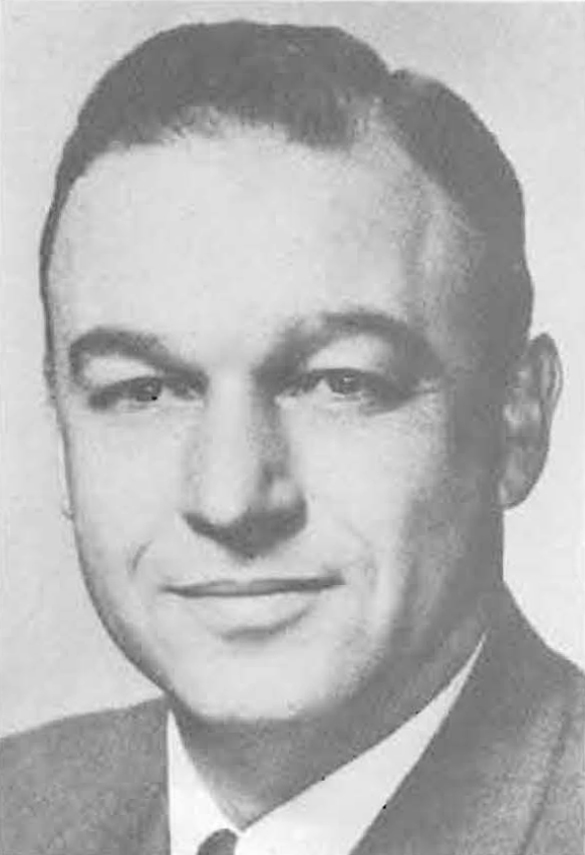
ROBERT C. KIRKWOOD
1953–1958
Robert Kirkwood was born in Mountain View, Santa Clara County, on August 30, 1909. He attended the Palo Alto public schools and was graduated from Stanford in 1930. He earned his law degree at Harvard in 1933, the same year he was admitted to the California Bar. In 1939, Kirkwood moved to Saratoga where he was elected a member of the Saratoga Elementary School Board. He later served on the Santa Clara County Planning Commission. He was elected Assemblyman for Santa Clara, the 28th District, in 1946, and was reelected three times. He resigned when he was appointed Controller by Governor Earl Warren on January 6, 1953. After serving another term as Controller, Kirkwood went to work for Pacific Gas and Electric Company. He died May 5, 1964.
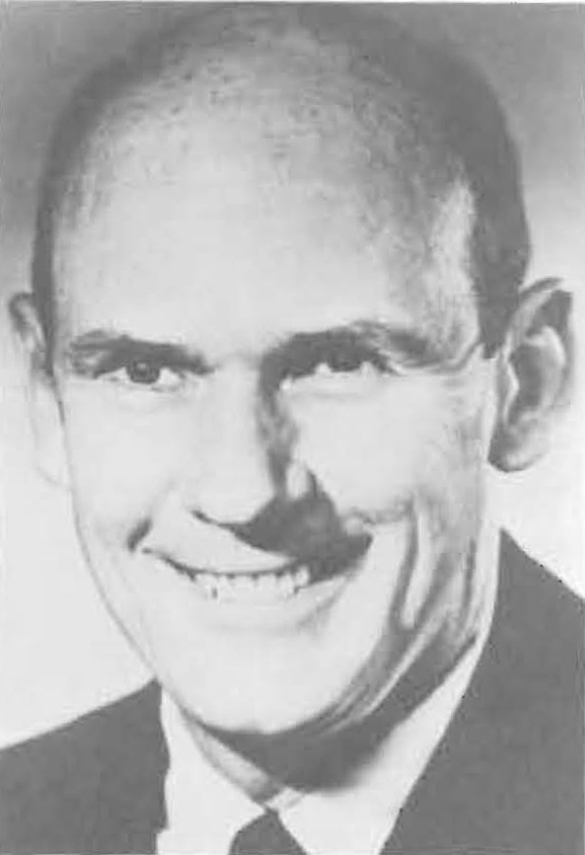
ALAN CRANSTON
1959–1966
Alan Cranston was born in Palo Alto, Santa Clara County June 19, 1914. He graduated from Stanford University and Pomona College. Following his graduation he was a foreign correspondent in Europe and Africa. Cranston entered the Army in 1944 and served in the Office of War Information. He was elected Founding President of the California Democratic Council in 1953, 1955, and 1957, but resigned to become Controller in 1958. Prior to his election as Controller, he operated a real estate, investment and property management business. He lost the 1966 election to Houston Flournoy, but he was elected in 1968 to the United States Senate. He was reelected in 1974 and again in 1980.
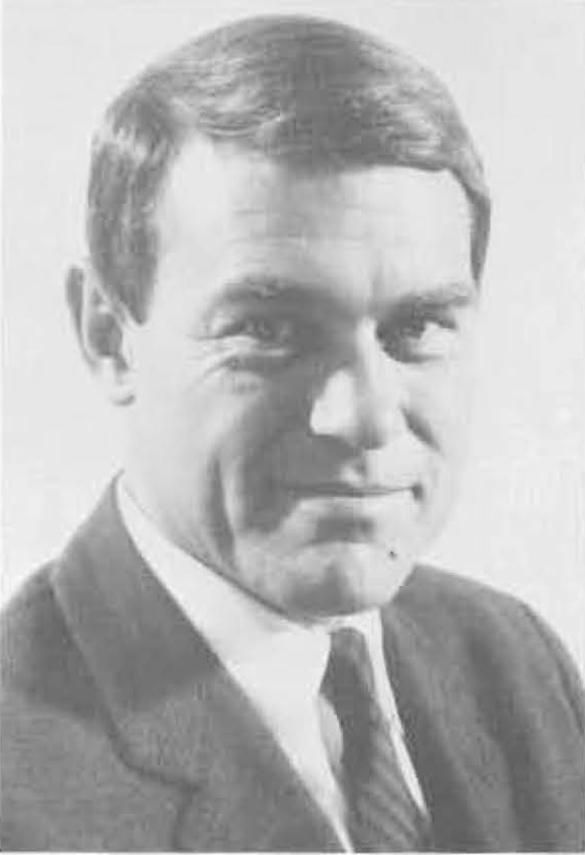
HOUSTON I. FLOURNOY
1967–1974
Born in New York in 1929, Houston Flournoy attended New York and New England public schools. He received a Bachelor of Arts degree from Cornell University, and he earned masters and doctorate degrees in government at Princeton University. Flournoy, who served in the Air Force in Korea as an intelligence officer, came to California to accept a position as associate professor of government at Pomona College and Claremont Graduate School, where he taught for nine years. He was elected to the California Assembly in 1960 as a representative from the 49th Assembly District and was reelected in 1962 and 1964. Flournoy was elected Controller in 1966 and reelected in 1970. In 1974 he ran for Governor of California but lost narrowly to Edmund G. Brown Jr.
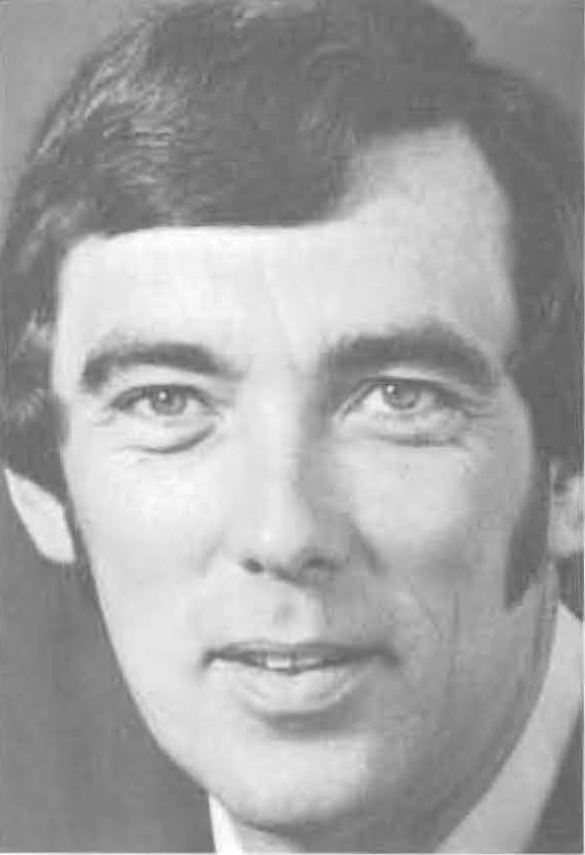
KENNETH CORY
1975–
Born in Kansas City, Missouri, Kenneth Cory moved to southern California with his parents in 1939 when he was one year old. He graduated from Huntington Beach High School and attended Orange Coast College, the University of California at Berkeley and at Los Angeles. Before becoming Controller, Cory was elected to four consecutive terms in the California State Assembly, representing the 69th District in Orange County. Earlier he had served as Chief Consultant to the Assembly Education Committee and as Chief Administrative Officer of the Assembly. He also engaged in farming and the insurance business. In 1974, Cory was elected Controller and was reelected in 1978.
Executive Secretaries
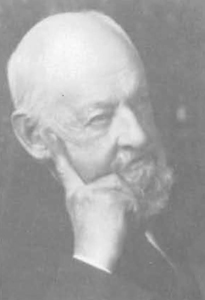
E. W. MASLIN
1880–1891
Edwin Wesley Maslin was born in Maryland April 1, 1834. He emigrated to California and arrived in Grass Valley, Nevada County, May 15, 1853. Here, he engaged in mining and located the famous Idaho mine. Maslin began studying law in September 1855 and was admitted to the State Bar in 1857. In 1859, he was elected District Attorney for Nevada County. Maslin moved to Sacramento in 1869 where he served as Secretary of the Judiciary Committee. In 1870 he was appointed Secretary of the State Board of Equalization until a change of administration in April 1872. Maslin served as Governor William Irwin’s private secretary from 1876 to 1880 when he was again selected as Secretary of the State Board of Equalization. He held this office until the spring of 1891, when he assumed management of the State Board of Trade. On March 1, 1894, he was appointed Deputy to the Naval Officer of Customs in San Francisco. Maslin died in Alameda June 24, 1919 at the age of 85.
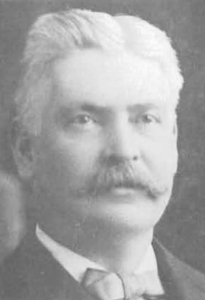
CHARLES M. COGLAN
1891–1905
Charles M. Coglan was born at sea around 1848. When he was very young, his family left England and settled in Canada. In 1867 he came to Sacramento, California where he was to spend the remainder of his life. Coglan was an expert telegrapher and at age 21 he became local manager of the Atlantic and Pacific Telegraph Company in Sacramento. Later he served as Deputy County Clerk (1880) and soon after as County Clerk (1884) Mr. Coglan also served for a number of years as a train dispatcher for the Central Pacific Railroad. From 1878 to 1879 he was Secretary to the Drainage Commission, and in 1891 he became Secretary of the State Board of Equalization. He remained Secretary of the Board until his death July 13, 1905.
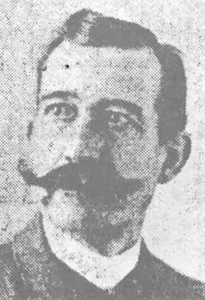
THOMAS M. EBY
1905–1919
Thomas M. Eby was born in Tehama County, California November 13, 1863. He began his career at the age of 12 when he became assistant to his father, Jackson Eby, Assessor of Tehama County. His ability earned him the position of Deputy County Assessor at age 17. Eby entered the Internal Revenue Service, but he soon left for a position in the State Controller’s office. In 1891 he became Executive Secretary to Governor Henry H. Markham and later the Governor’s Private Secretary. At the conclusion of Markham’s term, Eby worked in the office of the Attorney General; however, he returned to the Controller’s office as a deputy when the next Legislature convened, and he served for twelve years. In 1905 Eby became Secretary of the State Board of Equalization and served until his death April 23, 1919.
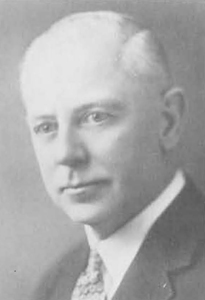
M. D. LACK
1919–1926
The son of pioneer parents, Morris Dempse Lack was born in Shasta County, California December 25, 1873. He began his career as Deputy Sheriff of Shasta County in 1902. In 1907, Lack was elected to his first of three terms as Shasta County Assessor. He resigned in his third four-year term to become Secretary of the State Board of Equalization. Lack resigned March 25, 1926 to become Vice-Chairman and Tax Counselor of the California Taxpayers Association of Los Angeles. He joined the Pacific Gas and Electric Company in 1930 as manager of the tax department and was promoted to special counselor of the company in 1947. He died in November 1952.
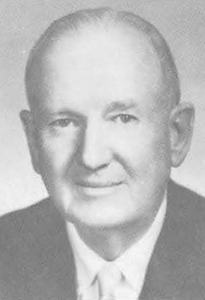
DIXWELL L. PIERCE
1926–1963
Dixwell Pierce was born on a ranch in Davis September 11, 1897. He earned his doctorate in law from the University of California in 1921 and was admitted to the California Bar that same year. Before joining state service Pierce engaged in private law practice in San Francisco from 1921 to 1923. From 1923 to 1925 he was a member of the staff of California’s Attorney General. In 1926 he became a Deputy Attorney General and in 1926 began his career as Executive Secretary for the State Board of Equalization. During Pierce’s long term, the Board staff grew from seven to 2500 employees. He retired from the Board in 1963 and died shortly thereafter on August 22, 1964.
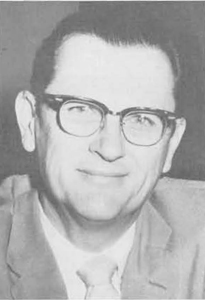
HERBERT F. FREEMAN
1963–1971
Herbert Freeman was born in San Francisco September 1, 1908. He earned both his bachelor and masters degrees from the University of California in Berkeley, majoring in accounting and business administration. Freeman entered state service in 1934 as an accountant for the Department of Finance. He joined the staff of the newly created Department of Employment in 1936 as a senior accountant and was subsequently promoted to Departmental Accounting Officer, Comptroller, and finally to Assistant Director of the Department in 1953. In July 1963, Freeman was appointed Executive Secretary of the State Board of Equalization. He retired December 30, 1971.
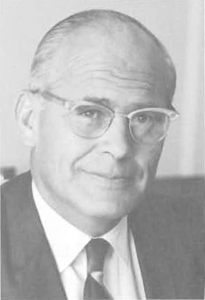
WILLIAM W. DUNLOP
1972–1977
William Wallace Dunlop was born in San Anselmo, Marin County, California April 22, 1916. His family moved to the Phillipines two years later. Dunlop returned to California to complete his education. He graduated from the University of California at Berkeley with a Bachelor of Science degree in engineering. After graduation, Dunlop worked for Pacific Telephone for two years before joining the California Public Utilities Commission as a junior engineer in 1939. He eventually rose to the highest staff position in 1965 when he became Executive Secretary of the Commission and served for six and one-half years. In 1971 he was appointed Executive Secretary of the State Board of Equalization. Dunlop retired from the Board May 1, 1977.
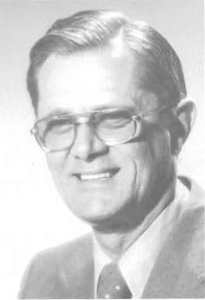
DOUGLAS D. BELL
1977–
Douglas Bell was born in Sacramento, California May 15, 1925. He graduated from the University of California, Berkeley with a bachelor of science degree in business administration. Bell joined the Board of Equalization in 1947 as a junior accountant auditor. He worked his way through the ranks and during his thirty years of service with the Board, he was instrumental in virtually every major organizational and systems change within the Board. In May 1977, Bell was unanimously chosen by the Board to succeed William Dunlop as Executive Secretary of the State Board of Equalization. He is the first Board employee ever to have achieved this distinction.

